









































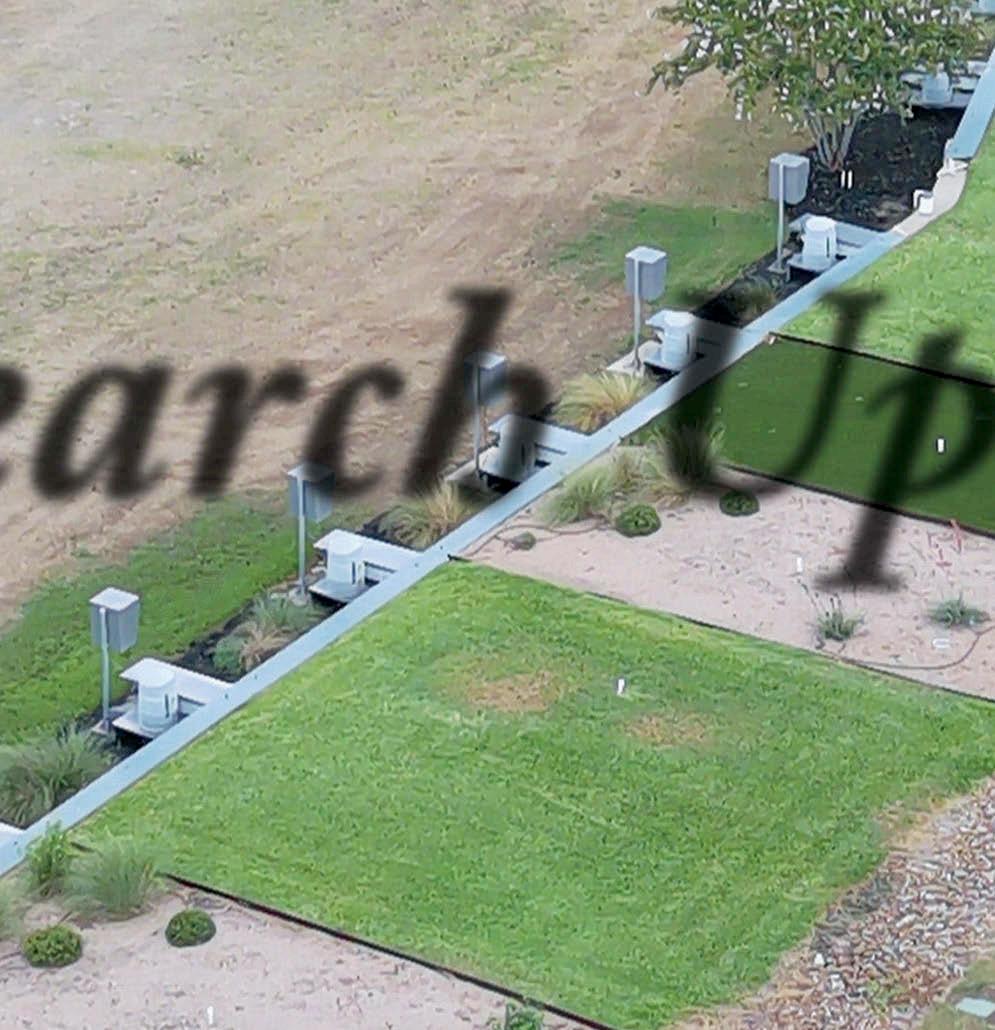

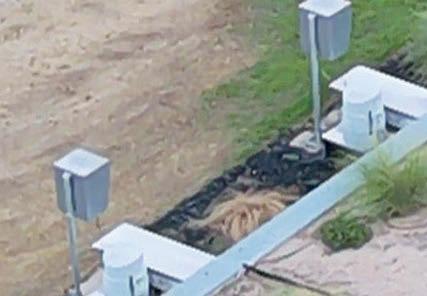






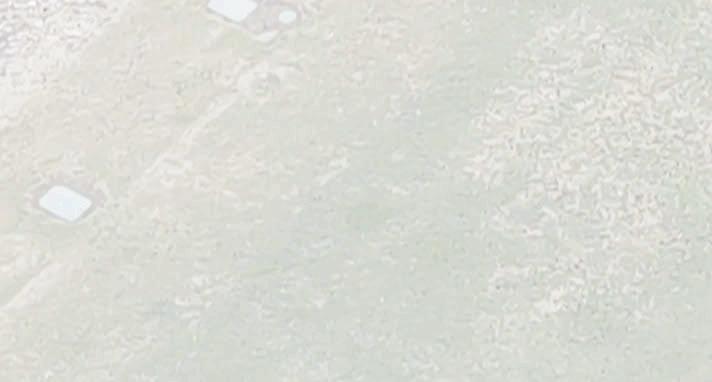

The only magazine devoted exclusively to turfgrass production Research Update IN THIS ISSUE TPI Germany Travel Diary Call for Honors & Awards Nominations Marketing Customized for You ... And Much More

Cover:
Research project at Texas A&M Photo courtesy of Texas A&M
TURF NEWS Vol. 46 No. 5 September/October 2022
Published by
Turfgrass Producers International 4 44 E. Roosevelt Road #346 Lombard, IL 60148 U.S. & Canada Tel: 800-405-8873


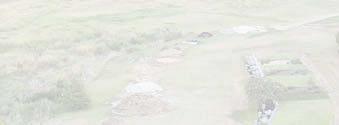
International Tel: 1-847-649-5555
Fax: 1-847-649-5678
Email: info@TurfGrassSod.org Website: www.TurfGrassSod.org
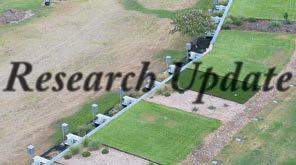
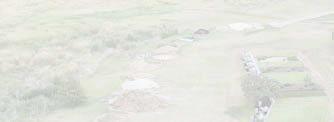
TPI Contact Information
Executive Director
C asey Reynolds, PhD creynolds@TurfGrassSod.org
Membership & Marketing Manager Allie Shriver ashriver@TurfGrassSod.org
Advertising Sales/Classified Ads




Geri Hannah ghannah@TurfGrassSod.org
Co-Editors
Steve & Suz Trusty stevetrusty@TurfGrassSod.org suztrusty@TurfGrassSod.org
Art Director
Jane Tomlinson jane@inkumbrella.com
Director of Meetings Liz Lonsbrough liz@TurfGrassSod.org
Policy Consultant
Jonathan Moore jonathanm494@gmail.com
Editorial Advisors
John Sorochan, PhD
University of Tennessee (warm-season grasses) sorochan@utk.edu
Aaron J. Patton, PhD Purdue University (cool-season grasses) ajpatton@purdue.edu
Turf News is published bi-monthly (January/




FEATURE ARTICLES FOCUS: The Lawn Institute Research Update
10 The Lawn Institute Turfgrass Research Update

Get caught up on the latest results on important research funded by your support of TLI.
36 Rooted in Research—Data Driven Growth
Dr. Bigelow dives deep into modeling factors affecting leaf and root growth.
38
TPI Germany Travel Diary
Join TPI members as they review their trip to the ETP Expo and the Lower Saxony region of Germany.
46 Call for Honors and Awards Nomination
See the past winners to help you determine whom you should nominate for this year.
48 Dr. Henry W. Indyk Scholarship Opportunities
You, a family member, or an employee, or their family member could qualify for this funding.
50 Marketing Customized for You
Examples on how the U.S. Sod Industry Checkoff funds could help you market your sod crop.


52 Realistic Expectation of Artificial Intelligence
Four things you should know to maximize your use of this technology.
54 Turfgrass Outreach Project Takes Root in New Location
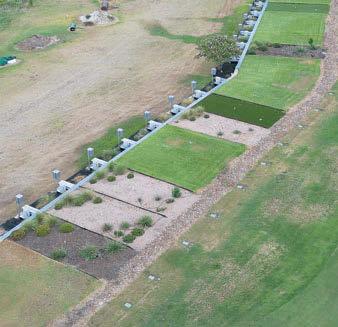
After seven years at the U.S. National Arboretum, and over 150,000 visitors, the Grass Roots, all things turfgrass, display has a new home.
56
NTEP Turfgrass Trial Explorer Now Available
The National Turfgrass Evaluation Program has introduced a new tool to explore their data.
62 Help Your Customers Conserve Water
The Irrigation Association provides tools to help you help your customers.
64 What’s Flying in the Twitterverse
A look at some popular Tweets addressing the turfgrass industry.
68 From Farm to Capitol: Keith Truenow’s Political Roots Run Deep in Agriculture
A TPI member’s journey from the farm to the Florida House of Representatives.
1TPI Turf News September/October 2022
February, March/April, May/June, July/August, September/October, November/December) with a $25 subscription fee from Membership dues, by Turfgrass Producers International 444 E. Roosevelt Road #346, Lombard, IL 60148 Periodical postage paid at Jefferson City, MO POSTMASTER Please send address changes to Turf News 444 E. Roosevelt Road #346, Lombard, IL 60148 USPS no. 003 255; ISSN 0899-417K Canadian Post: Publications agreement No. 1479148 Turf News The only magazine devoted exclusively to turfgrass production Research Update IN THIS ISSUE TPI Germany Travel Diary Call for Honors & Awards Nominations Marketing Customized for You ... And Much More IN THIS ISSUE DEPARTMENTS President's TURF…...…..................…………2 Executive Director's TURF …...................... 4 TPI News…………………….…................…6 The Lawn Institute News …..........................8 Association Updates.......................... 58 & 60 Happenings......................................70 & 72 Turfgrass Industry News ................. 74 & 76 Classified Ads.........................................78 Advertisers Index.....................................79 Welcome New & Returning Members......64 Turfgrass Industry Calendar..................80 BONUS TLI Helpful Hints….............................9 Weather Watch…................................66
PRESIDENT’S TURF 2022
TPI Board of Trustees
Officers
The Importance of Relationships
Since the passing of my Mom, Vivienne, on July 3, and her visitation and funeral, I’ve been thinking a lot about the whole concept of relationships, and the importance of them, in both personal and professional life. The outreach to our family was exceptional, a tribute to the many people that Mom and Dad touched during their lives and an outpouring of support and love that touched our hearts. Words don’t begin to express how much it meant to us during this time. It’s those relationships that help you through the difficult times and the very good times, too.
Mom and Dad formed strong relationships, as they developed and ran their business, and throughout the community. During their retirement they continued connecting with people, both here in the Midwest and around their second home in Florida. We’re a family with eight kids, yet there was always room for more. Mom always welcomed our friends, not only while we were growing up, but throughout her life. During the visitation, many long-time friends came to connect with us and share their memories of special times with Mom and Dad.
It’s all been nostalgic for me. I’ve been thinking about all the people that I’ve met through TPI and how those relationships have grown over the years, and how much I cherish them. The TPI connection has deep roots for our family, going back to the early days of the Association. (Ed Keeven Sod Co., Inc., O’Fallon, Missouri, is on the list of the American Sod Producers Association Charter Members in the ASPA Archives, dated March 27, 1968.)
Dad and Mom attended many meetings over the years, making life-long relationships. And, of course, they took us kids with them, and we started our own relationships. Then with Tommy and then Eddie serving on the Board and as president, their relationships grew. Being on the Board, and now being president, I’m getting to meet even more people. With the third generation now active in our businesses, a whole new set of relationships are being formed. The number of TPI members that sent messages and that showed up at Mom’s visitation was so incredible. What an organization this is that I’ve been blessed with the opportunity to build those relationships.
The TPI Board has long recognized the worth of relationships. At our last meeting, we decided to bring back the regional representation that helped the association grow in its early days. A state representative serves as an ambassador to reach out to the other sod producers in their state. These groups meet for a couple hours at each Conference to discuss what is going on in their state— and build relationships. Now we will extend this worldwide, with a country representative to keep the whole international connection strong. If you are interested in serving as a state or country representative, please contact me, or any of the Board, or TPI staff members. Let’s keep those relationships growing.
Warmest Regards,
President
Jim Keeven

SelecTurf Inc. – U.S.A. +1-573-634-3444
jim@selecturfsod.com
Vice President
Bob McCurdy McCurdy Farms - U.S.A. +1-731-692-3515
mccurdysodfarms@gmail.com
Secretary-Treasurer
Diane Mischel
DeBuck’s Sod Farm, Inc. – U.S.A. +1-810-653-2201 office@debucksodfarm.com
Past President
Steve Griffen
Saratoga Sod Farm, Inc. – U.S.A. +1-518-664-5038 steve@saratogasod.com
Executive Director
Casey Reynolds, PhD
Turfgrass Producers International – U.S.A. +1-847-649-5555

creynolds@TurfGrassSod.org
Trustees
Daniel Huggett
Columbus Turf Nursery – U.S.A. +1-740-983-6580


danielh@columbus-turf.com
Albrecht Knigge
Rasenland – GERMANY 495 101 915361 knigge@rasenland.de
Larry LeMay
A-G Sod Farms, Inc. – U.S.A. +1-559-289-2302 llemay@agsod.com
Lindy Murff
Murff Turf Farm, Inc. – U.S.A. +1-281-328-2812
lmurff@murffturf.com
Ron Schiedel
Greenhorizons Group – CANADA +1-519-778-7500
ron@greenhorizonssod.com
Cliff Stewart

STEC Equipment, Inc. +1-864-225-3666
cliff@stecequipment.com
Wade Wilbur
Sod Shop – U.S.A. +1-913-814-0044 wade@sodshops.com
2 TPI Turf News September/October 2022
Jim Keeven
The Natural Choice.



Plant a better vegetative Bermuda. One that grows vertically; one that harvests early, with deep roots. One with a legendary cold-tolerant lineage from the Oklahoma plains, bred by Dr. Charles Taliaferro (of Patriot, Northbridge, & Latitude 36® fame). IronCutterTM: A new, natural solution for sod producers wanting consistency, lowered inputs, and elite performance from bermudagrass forged for golf, sports turf, & landscapes.
At MVP, we believe an elite variety can only reach its full potential with help from an exceptional sod producer. Producers like Eddie Moore & his family. If you agree, please contact us to join the

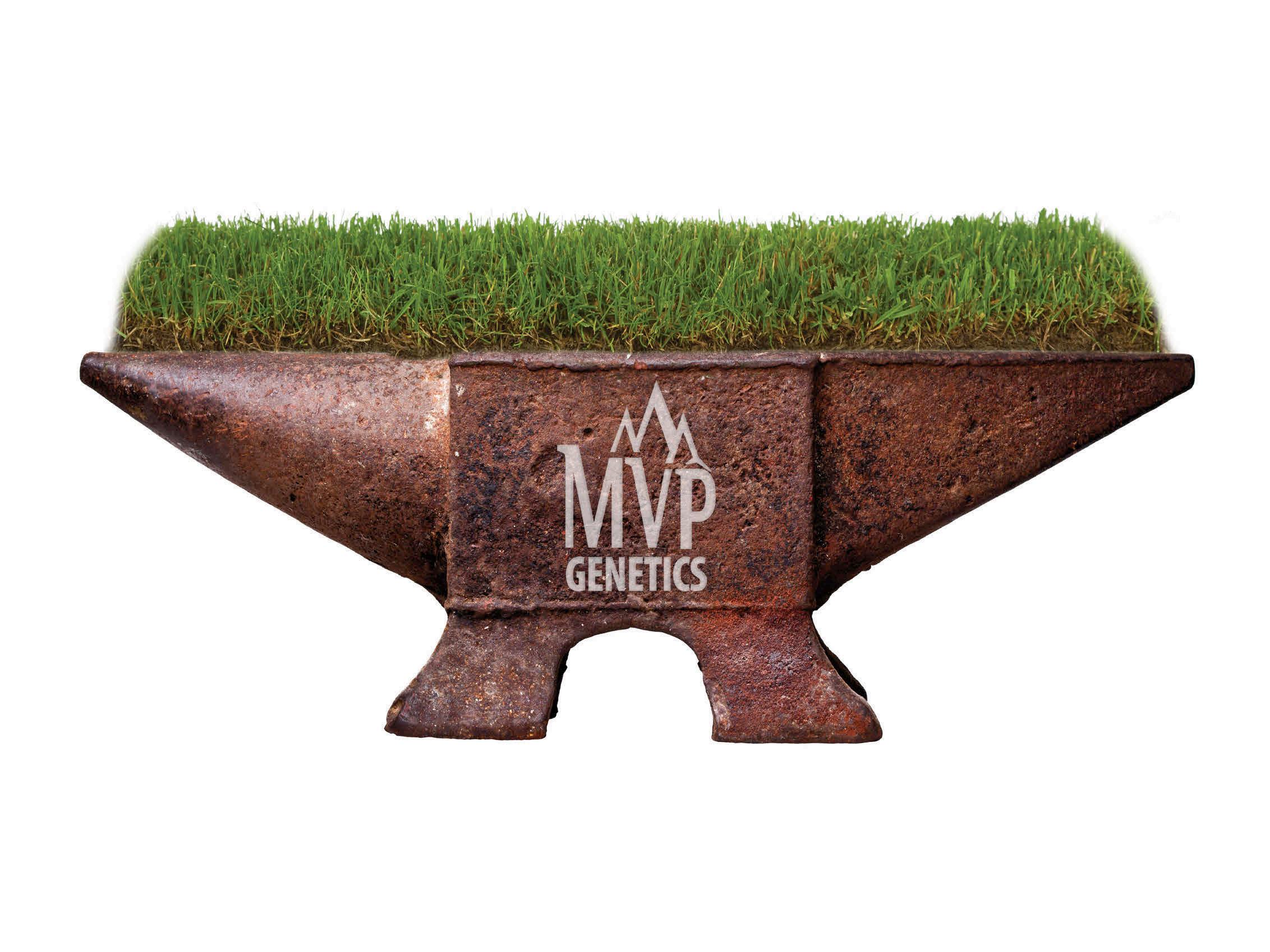
IronCutter family! www.mvpgenetics.com • info@mvpgenetics.com 1GEORGIA, FLORIDA, KANSAS AND MARYLAND. 2INDIANA. 3ARKANSAS. 4CALIFORNIA. 2013-2017 NTEP BERMUDA TRIAL
“After growing IronCutter for 11 months, I’d recommend this bermudagrass to anyone!”
-Eddie Moore (TPI Member), Collins-Wharf Sod Farm, Maryland If you agree, contact us to join the
IronCutter The Moore Family elitevegetativebermudagrass LICENSING RESEARCH GENETICS #1 IN TURFGRASS QUALITY1 • #1 IN SPRING GREENUP2 • #1 IN FOR DIVOT RECOVERY3 • #1 IN SUMMER LIVING GROUND COVER %4
EXECUTIVE DIRECTOR’S TURF
TLI Research Update
It’s that time of year again for the annual The Lawn Institute (TLI) research update. As a former university researcher myself, this issue of Turf News is always a particularly fun one for me to take part in creating.
As many of you know, TLI funds $50,000 annually in turfgrass research at universities throughout the world. These funds are raised by generous donations from TPI members during the annual campaign, at TPI conferences, and at other times throughout the year.
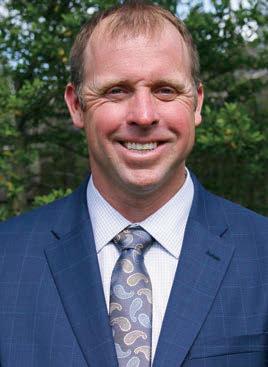
As you read later in this issue about the many projects funded by TLI, I hope you get a feel for how far universities’ researchers are able to stretch these funds. It really is amazing how they can pull some of these projects together. As a reference point, a single graduate student costs between $35,000 and $50,000 per year after salary, benefits, classes, etc.
The return on investment (ROI) that the turfgrass industry gets from university researchers is equally as impressive. One of the few green industry groups that cites a return on investment in research is the United States Golf Association (USGA). Through their $2 million annual investment in research, and $10 million annual investment in the green section, they have projected $1.8 billion in annual savings for golf courses through green construction, water budgeting, fertilizer and pesticide Best Management Practices (BMPs), and new cultivars.
Casey Reynolds, PhD

If you look at the wide range of projects TLI has funded in the past few years, it ranges from sod-specific research on topics like harvestability, grass mixtures, extending sod shelf-life, endophytes, and more—to bigger picture projects on sustainability, water use, athlete safety, and the environmental impacts of lawns. Each of these projects has the potential to have significant impacts on our industry, especially over time.
So, thanks to all of you for being a part of TPI and The Lawn Institute in helping fund this type of valuable work. It is vital to keeping our turfgrass university research programs viable, and as many faculty will tell you, one of the first things university administrators look for in hiring new faculty, maintaining current faculty, or even keeping versus shutting down research programs altogether, is where and at what level is the available funding to sustain them?
So, thanks again for your support of TPI and The Lawn Institute, and we hope you enjoy the 2022 TLI Research Update!
Cheers,
If you look at the wide range of projects TLI has funded in the past few years, it ranges from sod-specific research on topics like harvestability, grass mixtures, extending sod shelf-life, endophytes, and more—to bigger picture projects on sustainability, water use, athlete safety, and the environmental impacts of lawns.
follow us on Twitter, Facebook and Instagram!




4 TPI Turf News September/October 2022
@TPITurfTalk @TheLawnInstitute Please
@TurfgrassProducersInternational @TheLawnInstitute @TheLawnInstitute






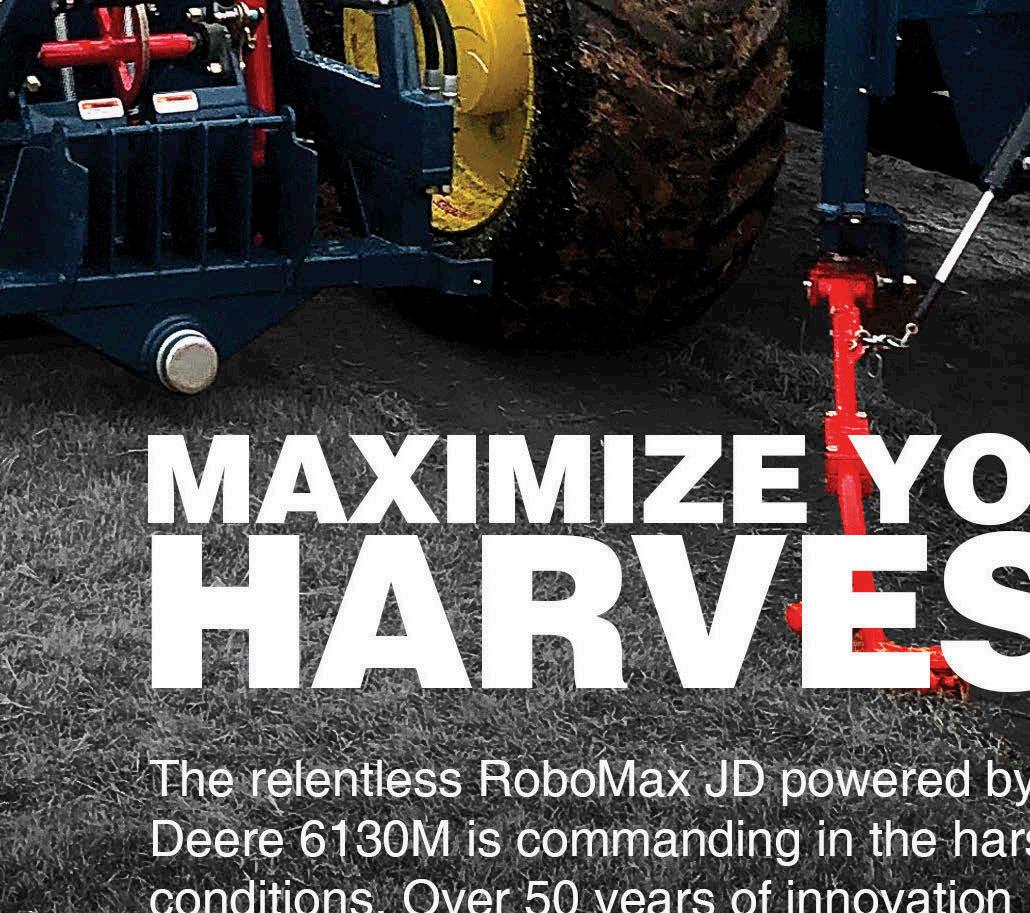
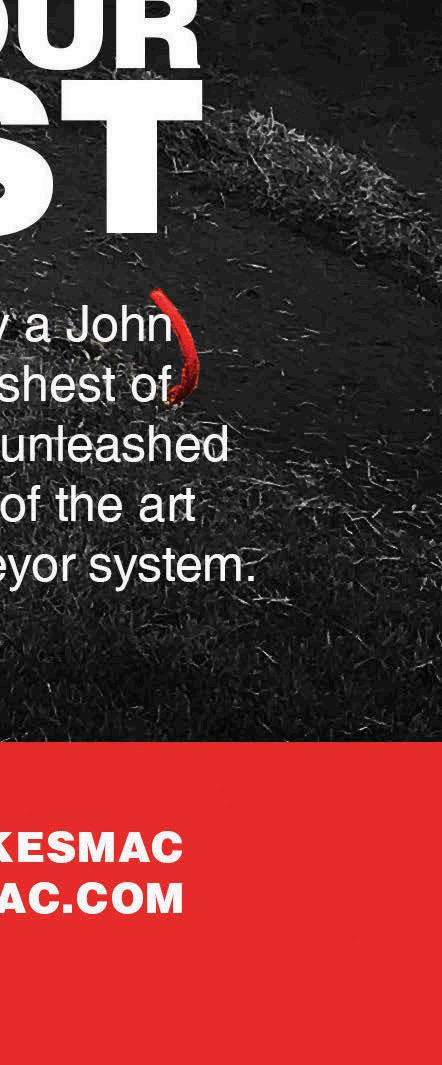


TPI NEWS MARK YOUR CALENDARWHAT TO KNOW

2022 USDA CENSUS OF AGRICULTURE AVAILABLE SOON
The U.S. Department of Agriculture’s 2022 Census of Agriculture is scheduled to be mailed out in November. Visit https://www.nass.usda.gov/AgCensus/ to learn more.
IDEAS FOR TPI PUBLICATIONS WANTED
Have ideas for NEW TPI publications? Sod as Agriculture and Weed, Insect, and Disease Control for Turfgrass Producers are out and we’re asking what other publications could help TPI members. Contact Dr. Casey Reynolds at CReynolds@TurfGrassSod.org or 847-737-1846 to discuss new ideas!
EMPLOYEE HEALTH INSURANCE PROGRAM FOR TPI MEMBERS
TPI has launched an Employee Health Insurance Program for TPI member farms! Check out our TPI website or visit https://www.associationpros.com/tpi-inquiryform for more information on how to apply.
TPI MEDIA KITS AVAILABLE
The 2022 TPI Media Kit is still available. Please contact Geri Hannah at 847-649-5555 or email ghannah@ TurfGrassSod.org. The full media kit can be found online at https://issuu.com/tpiturfnews/docs/tpi_media_kit_ updated_2022_2_
TPI WORKING WITH USDA ON CROP INSURANCE FOR SOD
Interested in Crop Insurance? TPI is working with the U.S. Farm Service Agency to develop potential crop insurance plans specific to sod production. If you are interested in learning more or willing to serve on an exploratory committee, please contact Dr. Casey Reynolds at CReynolds@TurfGrassSod.org or 847-737-1846 to learn more.
FOLLOW TPI AND TLI ON SOCIAL MEDIA



Turfgrass Producers International Twitter: @TPITurfTalk


Facebook: @TurfgrassProducersInternational



The Lawn Institute
Twitter: @TheLawnInstitute
Facebook: @TheLawnInstitute
Instagram: @TheLawnInstitute
FULL U.S. SOD CHECKOFF PROGRAM TEXT ONLINE
The full text of the U.S. Sod Checkoff Program proposal is now live at www.SodCheckoff.org/Resources. Read the full order here to learn more about this initiative and upcoming referendum.
6 TPI Turf News September/October 2022
LEARN MORE AT A MEETING NEAR YOU
Want to hear more about the proposed U.S. Sod Checkoff program? See the Turfgrass Industry Calendar on page 80 of this issue or visit www.SodCheckoff.org for a list of upcoming events.



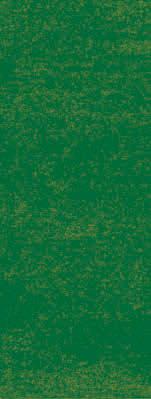


You can also contact Dr. Casey Reynolds at CReynolds@TurfGrassSod.org or 847-737-1846 to schedule an event near you!


TPI WORKING WITH EPA ON PROPOSED STRATEGIC PLAN
TPI is working with the U.S. Environmental Protection Agency on the proposed 2022-2026 EPA Strategic Plan to make sure that sod farmers are included in important initiatives.
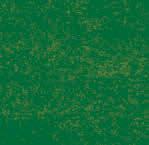
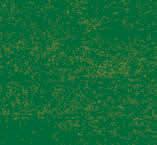
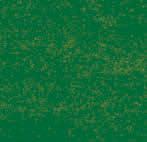



APPLICATIONS NOW OPEN FOR THE 2023 DR. HENRY W. INDYK SCHOLARSHIP
The TLI Dr. Henry W. Indyk Scholarship is open to all TPI members, their family, their employees, and their employees' families who will be pursuing a college degree or attending a trade school during the 20222023 academic year.
Valued Up To $10,000 Clickon the link that followsto download your application. https://files.constantcontact.com/2f3c209b001/d094f7e5-a5ce-4570-8ddc-469804462516.pdf?rdr=true

The Application Deadline is October 31, 2022









TPI NEWS WHAT TO KNOW WHAT TO KNOWMARK YOUR CALENDAR















FEBRUARY 20-22 & JULY 24-28, 2023

Save the dates for the 2023 TPI International Education Conference and 2023 TPI International Convention & Field Day! TPI will be in Nashville, TN, on February 20-22, 2023, for the TPI International Education Conference and in Michigan, July 24-28, 2023, for the TPI International Convention & Field Day.

IN
























E D U CATI O













INTERNATIONAL EDUCATION CONFERENCE



GAYLORD OPRYLAND RESORT CONVENTION CENTER
NASHVILLE, TENNESSEE
MUSIC CITY U.S.A.
20 23 FEBRUARY

7TPI Turf News September/October 2022
I TE E RNAT A IO NAL
N GAYL Y OR O DA L RG OPR P YL Y AND AR NL LA RESSOR ORE T C ON VE V NT T IO O NO E N IN N TE E RC EN E T NAS HVI LLE, TE N N E SS E E M U S I C C IT Y F E B R U A RY TH N D
INTERNATIONAL CONVENTION & FIELD DAY MICHIGAN JULY 24-26 2023 TPI
THANK YOU TO ALL 2022 DONORS
The Lawn Institute sincerely thanks ALL members that have already donated to The Foundation in 2022. In recognition of

Forever Green, Platinum Patron, Gold Benefactor, Green Partner, and
FOREVER GREEN/LEGACY GIVING
to:
PLATINUM PATRON/over $10,000
Heritage Turf, Inc.—Ron Nixon
Hol-Mac—Lon Kraft
Hope Plantation—Mayfield McCraw
BENEFACTOR
Mountain Sod, Inc.—Linda Bradley

GREEN PARTNER/$1,000–$4,999
A-G Sod Farms, Inc.—John Addink
Columbus Turf Nursery—Daniel Huggett DeBuck’s Sod Farm of NY, Inc.—Greg DeBuck Emerald View Turf Farm—Eddie Keeven Heartland Turf Farms—Tom Keeven, Jr. Jasperson Sod Farm—Randy Jasperson Magnum—Steven Dover Newsom Seed, Inc.—Allen Bohrer
below recognize those who donated as of 8/1/2022.
500 CLUB/$500—$999
A & W Southern Sod Farm—William Head
Advanced Equipment Sales—John Janmaat
A-LIST—Jeremy Husen
Bentley Turf Farms—Dennis Brigham
Bethel Farms—Will Nugent
Biograss Sod Farms, Inc.—Warren Bell
Blue Grass Enterprises, Inc.—Michael Loan
Cameron Financial—Darryl Yochem
Central Turf Farms, Inc.—Herman Wittig
Chickasha Grass Sod Farm—Oscar Nelson
Coosa Valley Turf Farms—Donald Coyle
Eagle Lake Professional Landscape Supply—Eric Heuver
Evergreen Turf, Inc.—Jeff Nettleton

Green Acres Turf Farm—Gary Youmans
JB Instant Lawn, Inc.—Mark Tribbett
Landmark Seed Company—Larry Humphreys
Laytonsville Landscaping, Inc.—Doug Lechlider
McPheeter’s Turf, Inc.—William McPheeter
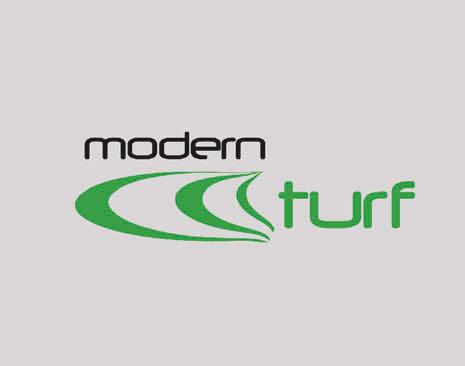
Mountain View Seeds—Troy Kuenzi
Oakwood Sod Farm, Inc.—Gary Wilber
Oregon Turf & Tree Farms—Tom DeArmond
Pine Island Turf Nursery, Inc.—Chip Lain Quality Turf, Inc.—Alfred Wooten
R & R Products—Tom Rogers
R.B. Farms, LLC—Robbie Brady
Royal Sod Farms LLC—Brian Shufelt Sales Midwest—Tim Wollesen
SelecTurf Inc.—Jim Keeven
Sod Solutions—Tobey Wagner
Sporting Valley Turf Farms—Matt Wimer
TAMANET (USA)—Angel Lopez
Todd Valley Farms, Inc.—Wayne Thorson
Tuckahoe Turf Farms—James Betts
Tulsa Grass & Sod Farms, Inc.—Richard Stunkard
Turf Producers Association—Jenny Carritt
TWCA—Jack Karlin
Vandemark Sod Farms—Trevor Vandemark West Coast Turf—John Foster
Willowlee Sod Farms Ltd—Kurt Vanclief
at
8 TPI Turf News September/October 2022
the
500 Club members, the lists
Hank & Mary Kerfoot (Modern Turf) For more information go
www.TheLawnInstitute.org/page/forevergreen/
Helpful Hints from The Lawn Institute can be copied to hand out to your customers. To obtain a pdf version to copy for handouts just contact Turf News co-editor Steve Trusty
stevetrusty@TurfGrassSod.org. Then print and share with your customers—it’s free! For more information on how you can support TLI and make a donation go to: www.TheLawnInstitute.org/ and click on SUPPORT TLI. Contributions help support tufgrass research, education, scholarships, and the campaign to promote natural grass. Donations made in the calendar year will receive personal recognition in our publications and in The Lawn Institute booth at the following levels: FOREVER GREEN/LEGACY GIVING PLATINUM PATRON/OVER $10,000 GOLD BENEFACTOR/$5,000—$9,999 GREEN PARTNER/$1,000–$4,999 500 CLUB/$500—$999 GOLD
/$5,000-$9,999 Turf
HELPFUL
FROM THE LAWN INSTITUTE
FROM THE LAWN INSTITUTE
LAWN DISEASES
Diseases often impact many species of plants—and grasses are no different. As is often the case, there are a complex array of factors that affect how plants and other organisms interact with each other including nutrition, plant stress, moisture, temperature, management practices, and more. However, one common theme among all natural grass disease infections is often referred to as the Turfgrass Disease Triangle. This triangle consists of three factors that include a susceptible plant, a disease-producing organism, and a favorable environment for infection. It takes all three factors for a disease infection to occur.
Most turfgrass diseases are caused by fungi, but there can be other sources of infection from bacteria, viruses, parasites, nematodes, or other organisms. There are well over 100 diseases that can occur on lawns and other grasses, but fortunately only around 25 or 30 of them are routinely problematic.
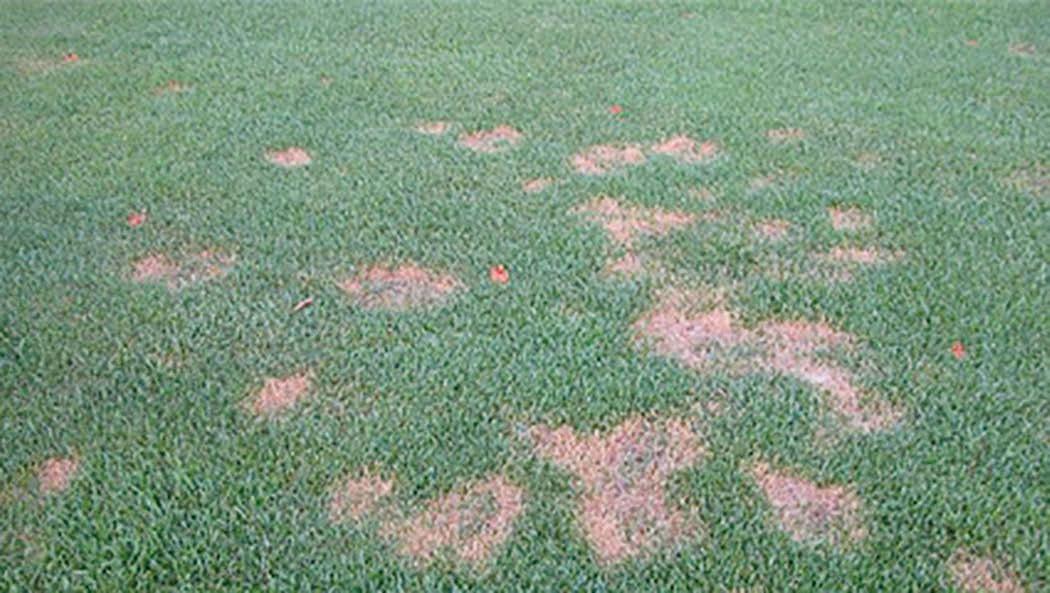
They each have a scientific name of the causal organism, and a common name of the disease it causes. For example, the lawn disease Brown patch is caused by Rhizoctonia solani, whereas other patch diseases such as Summer patch and Take-all patch are caused by Magnaporthe poae and Gaeumannomyces graminis, respectively. Many of these organisms often only affect certain species of grass while not impacting others, so from an identification standpoint, this helps narrow in on the causal organism by somewhat eliminating others.
Different causal organisms produce different symptoms which can also help with identification. For example, Brown patch, Large patch, and Take-all patch get their
names from the large patch-like symptoms they produce, whereas Dollar spot, Leaf spot, Copper spot, etc. produce very small lesions on grass leaves that look like spots.
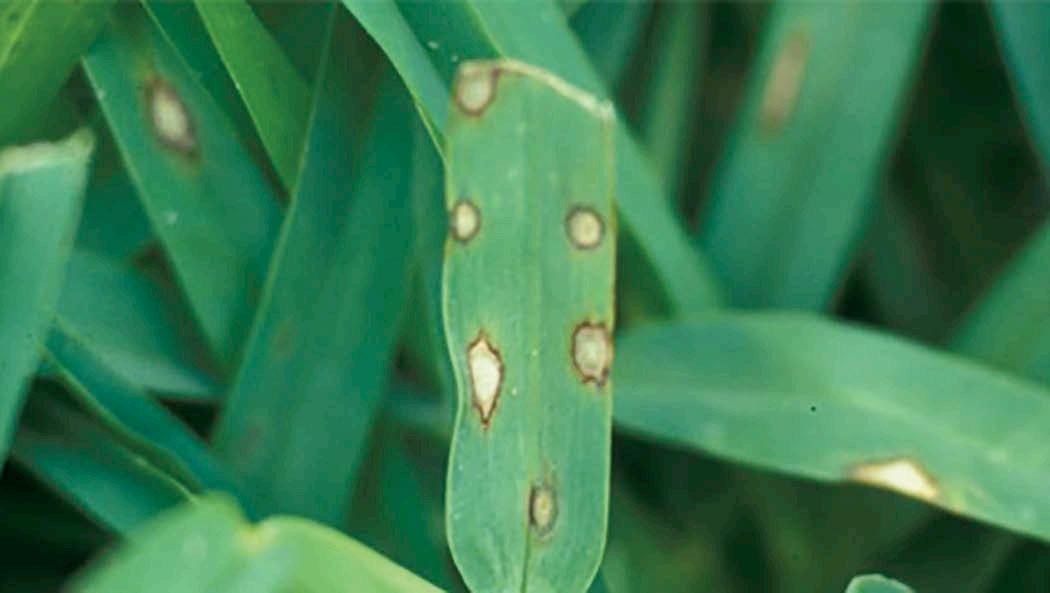
Another example is Fairy ring which produces large rings. While many of these symptoms are sometimes easy to identify, often times they are not. The best way to properly identify causal organisms in those cases is to submit a sample to a plant diagnostic laboratory for identification under a microscope.
In addition to the causal organism, the other two sides of the disease triangle are equally as important.
Understanding which species of grasses are susceptible to different organisms, and what type of environment is likely to favor infection, are key factors in preventive disease management. If relying only on the symptoms of plant diseases, then you have to wait until after a grass plant has been infected to treat it. While this approach is valid for many diseases, there may be instances where it is important to treat before infection, thus preventing the symptom from ever appearing in the first place.
A good understanding of the disease triangle lays the foundation for disease management in grasses. There are many safe and effective fungicides on the market that treat many lawn diseases, but proper identification and selection is key. There are several university websites, in addition to The Lawn Institute website, that describe various symptoms and treatment options to effectively control lawn diseases before they get out of hand. Although, it is also important to know that grasses are very resilient plants and sometimes it is just a matter of letting them grow through the damage and come out the other side.
For more information on lawn care and helpful “How to” tips, visit The Lawn Institute at:
9TPI Turf News September/October 2022
HINTS
HELPFUL HINTS
www.TheLawnInstitute.org.
THE LAWN INSTITUTE

TURFGRASS RESEARCH UPDATE
By Casey Reynolds, PhD
The Lawn Institute (TLI) has a long-standing history of funding natural grass research at nationally and globally recognized universities. Each year, TLI sends out a call for proposals to university researchers throughout the world to be compiled and reviewed by the TLI Research Committee at the TPI International Education Conference. The 2022 TLI Research Committee members listed in Table 1 are comprised of TPI members, staff, university educators, and industry personnel in order to ensure that TPI members and their interests are fully represented in the process while also leaning on university, United States Golf Association (USGA), and National Turfgrass Evaluation Program (NTEP) personnel for input on current research at other institutions.
Table 1. 2022 TLI Research Committee Members
Committee MemberPosition Company
Duane Klundt Chair Mountain View Seeds
Lindy Murff TPI Board LiaisonMurff Turf Farm
Larry LeMay TPI Board LiaisonA-G Sod Farms, Inc. Steve Griffen Member Saratoga Sod Farm, Inc.
Spencer Mendenhall Member Raft River Sod Sarah Nolte Member Blue Grass Enterprises, Inc. Jack Karlin Member TWCA
Casey Reynolds, PhDAdvisor TPI Jay McCurdy, PhD
Mississippi State University Aaron Patton, PhD Advisor Purdue University John Sorochan, PhD Advisor University of Tennessee Kevin Morris Advisor NTEP
*Advisors to the committee do not vote on projects but are present to provide technical input on the quality and potential impa ct of proposals.
Applications for research funds can be requested on any topic, but the TLI Research Committee places priority on specific research areas that serve natural turfgrass producers and the turfgrass industry. With the help of the TLI research committee, these areas are updated each year and are listed below. Other basic guidelines of the proposals include: applicants are encouraged to adhere to all TLI forms, formats, and deadlines for full consideration of proposals; proposals for single or multiple-year projects will be considered as long as the years and funding amounts are clearly stated; funds cannot be used for faculty salaries; proposals seeking funds for capital expenditures will be reviewed on a case-by-case basis; and overhead or administrative costs shall be held to an absolute minimum, but will not exceed 16 percent.
TLI Research Focus Areas
• Cultural Impacts of Natural Grass - Research that includes, but is not limited to, societal health and well-being, fitness, athletic field safety, socioeconomics, consumer attitudes, etc.
• Environmental Awareness of Natural Grass - Research that includes, but is not limited to, carbon sequestration, heat abatement, pollution entrapment, soil remediation, run-off reductions, etc.
• Natural Grass Input Reductions - Research that includes, but is not limited to, drought tolerance, reduced water use, nutrient requirements, traffic tolerance, integrated pest management, etc.
• Extending Harvested Shelf-Life of Natural Grass
• Reducing Production Costs of Natural Grass
• Natural Grass Research Communication & Education - Information that can be used to develop content on The L awn Institute website for educating policymakers, homeowners, and the general public on turfgrass science, management, impacts, etc. This can include literature reviews on environmental impacts, natural grass benefits, region-specific natural grass selection and management, weed/insect/disease control, and more.
10 TPI Turf News September/October 2022
Advisor
Last year, the committee received seven research proposals focused on items such as genotype screening for specific traits or stress responses, irrigation requirements for diverse landscapes, sod installation techniques, insect control, reclaimed water, and soil health. Following individual review and ranking of the projects, The Lawn Institute Research Committee met during the February 2022 TPI International Education Conference to review, discuss, and vote on these research proposals. The university research projects selected for funding in 2022 are listed below in Table 2 along with past projects that are still currently being funded or that were concluded in 2021. These projects represent a wide range of topics that can benefit TPI members both locally and globally.
Table 2. Research Projects Funded by The Lawn Institute in 2022.
TLI Research Project TitlePrincipal
Determining the Impact of Post-planting Cultural Practices on Sodded Lawn Water Needs in the Cool-Humid Region
Athlete Hydration during Physical Activity in Excessive Heat on Artificial Turf and Natural Grass
Long-term Environmental Impacts and Energy Balance of Lawn Removal and Conversion to Alternative Landscapes
Sod Strength Characteristics of 24 Fine fescue Cultivars
Irrigation Requirements and Consumer Preference for Six Diverse Landscapes in the Arid Western U.S.
Investigating Environmental Implications of Reclaimed Water Use for Turfgrass Areas
Stress Response Characteristics Facilitated by Endophytes in Commercially Available Perennial Ryegrass, Tall Fescue, and Fine Fescue Cultivars in Oregon
USGA/NTEP National Water-Use Trial –Warm-Season Species
Institution
ApprovedTotal Grant
Cale Bigelow, PhDPurdue University2020-21$20.000
Chase Straw, PhD, and Steven Reichman, PhD Texas A&M2021$5,000
Ben Wherley, PhDTexas A&M2021-23 $30,000
Aaron Patton, PhD, and Ross Braun Purdue University2021-23$20,351
Tony Koski, PhDColorado State University2022-24$9,450
Marco Schiavon, PhDUniversity of Florida2022-23 $19,780
Alec Kowalewski, PhDOregon State University2022-23$20,000
Kevin MorrisNTEP2018-21 $30,000
The overall goal of this project is to document the effects of various post-planting cultural management practices that could help to reduce supplemental water needs of sodded Kentucky bluegrass lawns.
Experimental Procedures
A locally sourced (Purdy Sod, Lafayette, IN) Kentucky bluegrass sod blend was planted in a fixed roof rain-out shelter in the fall of 2019 on a silt-loam soil at the William H. Daniel Turfgrass Research Center in West Lafayette, IN. The study area was divided in the fall of 2019 to assess the effects of various post-planting cultural inputs for their effect on managing the sod layer. A factorial
arrangement of four cultural practices were implemented, they were: spring/fall core aeration (3/4-inch [1.905 cm.] tines), spring/fall compost (vermicompost), a surfactant (liquid applied in 2020 and using surfactant on an organic fertilizer granular carrier in 2021) and overseeding with a turf-type tall fescue blend (10 lbs./1000 sq. ft. [4.536 kg./92.903 sq. m.]) in the autumn of 2019 and 2020 in conjunction with compost application. Soil cultivation was stripped across each replication while compost, soil surfactant, and overseeding treatments were randomized within each strip with three replications of each treatment.
Treatments were initiated in the fall of 2019 with core aeration and .50 cubic ft. (.0142 cubic m.) of compost applied on 22 October 2019; 22 April and 5 June 2020; and a liquid soil surfactant applied on 25 October 2019, and 5 June 2020, and watered into the soil; overseeding occurred on 24 October 2019, and 22 October 2020, using ‘Hound-Dogs’ turf-type tall fescue blend (DLF-Pickseed, Halsey, OR). The turf was maintained at 3 inches (7.5 cm.) using a rotary mower and mowed twice weekly prior to the
11TPI Turf News September/October 2022
Determining the Impact of PostPlanting Cultural Practices on Sodded Lawn Water Needs in the Cool-Season Humid Region (2020-21, $20,000)
deficit irrigation cycle. Following study initiation, mowing was only done as needed to minimize any wheel tracking of stressed turf which might affect digital imaging. The area received approximately 3.0 lbs. (1.361 kg.) of nitrogen annually from a predominantly controlled release granular fertilizer.
Supplemental irrigation needs were determined using a deficit irrigation strategy based on a 70 percent green color threshold (GCT 70). The deficit irrigation program began on 30 June 2021, and ended on 13 September 2021. Prior to the deficit irrigation period the entire area was uniformly hydrated via overhead irrigation to maximize the soil water reservoir of this silt-loam soil. Thereafter, the center of each plot was imaged using a digital camera and light box every three to four days depending upon turf response. Images were analyzed for digital green color using a Java-based software program, Turf Analyzer. Once an individual plot fell below the 70 percent green color threshold that plot received .50 inch (1.27 cm.) of water from a hose equipped with a flow meter and the application was split into two .25 inch (.635 cm.) applications approximately 30 minutes apart to prevent runoff and border effects. The GCT 70 threshold was selected based on previous experience in maintaining a lawn turf at a minimally acceptable level of green color and density. Additionally, visual quality was regularly rated on a 0 to 10 scale where 0=brown, dead turf; 6=minimally acceptable lawn turf; and 10=optimal uniformity, density, and color.
Key Findings
In the second year of the study the supplemental irrigation treatments received 5.3 to 8.6 inches (13.462 to 21.844 cm.) of water (Figure 1). Comparatively, in the first year, supplemental irrigation needs ranged from 7.7 to 8.9 inches (19.558 to 22.606 cm.) of water with only slight differences among treatments. As in year one, the core aeration treatment benefits were negligible and thus data pooled across cultivation. The non-treated sod and the sod receiving compost only required the most supplemental irrigation (8.6 and 8.3 inches) (21.844 to 21.082 cm.), respectively. The granular surfactant and surfactant + vermicompost received 7.7 and 7.1 inches (19.558 to 18.034 cm.), respectively. The most impact occurred in any treatment that had been overseeded with turf-type tall fescue (TTTF) with supplemental irrigation ranging from 5.3 to 6.3 inches (13.462 to 16.002 cm.).
For seasonal turf appearance (April – September) values ranged from 5.3-8.0 (Figure 2). Higher values were associated with any treatment that received compost applications in the early spring, and during the deficit supplemental irrigation phase, those treatments that had been overseeded with TTTF had a higher visual appearance.
For digital green color during the supplemental irrigation phase values ranged from roughly 80-90 percent at the beginning of the trial with lower values associated with the non-treated sod, vermicompost, or granular surfactant only treatments (Figure 3). Higher values were associated with those treatments containing TTTF overseeding combined with vermicompost and/or a surfactant. All treatments except the TTTF overseeding alone fell below the 70 percent green color threshold approximately 30 days after initiation. In general, those treatments containing TTTF or a surfactant appeared to be more responsive and resilient in terms of summer green color to the supplemental irrigation treatments.
This study will be continued in 2022 to determine if there are long term effects and benefits of these cultural inputs on the supplemental irrigation needs of sodded Kentucky bluegrass lawns.
Research plots are shown under the fixed roof rain-out shelter for the project: Determining the Impact of Post-planting Cultural Practices on Sodded Lawn Water Needs in the Cool-Humid Region. Lead researcher for this project is Cale Bigelow, PhD, Purdue University.

12 TPI Turf News September/October 2022
Figure 1. Kentucky bluegrass sod summer supplemental irrigation needs as affected by compost, soil surfactant application, and turf-type tall fescue overseeding – 2021 (study year 2)




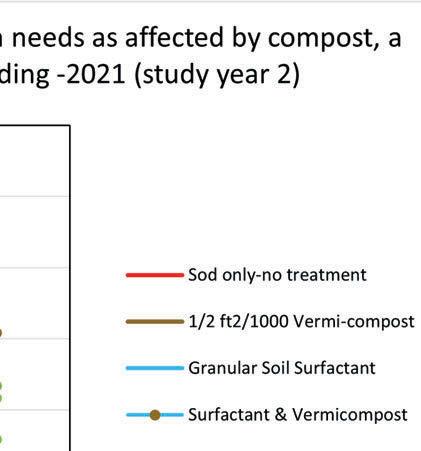


Figure 2. Seasonal trends in visual quality for a Kentucky bluegrass sod as affected by compost, soil surfactant application, and turf-type tall fescue overseeding – 2021 (Study year 2) – Decficit supplemental irrigation occurred from 30 June to 13 September 2021

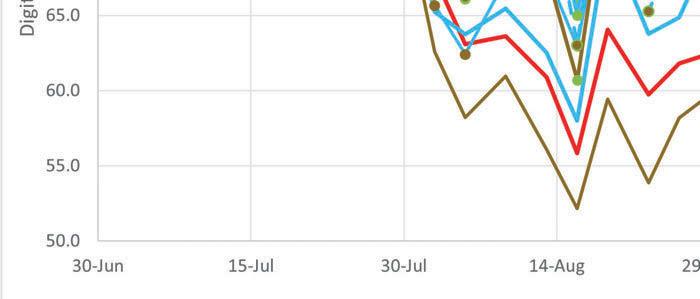

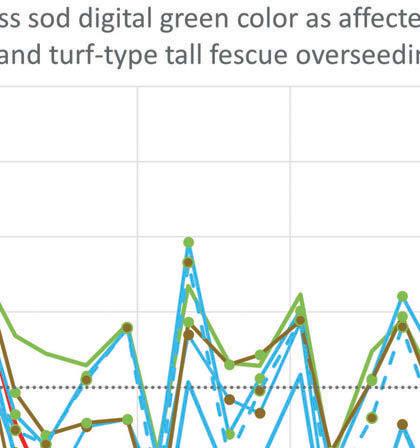




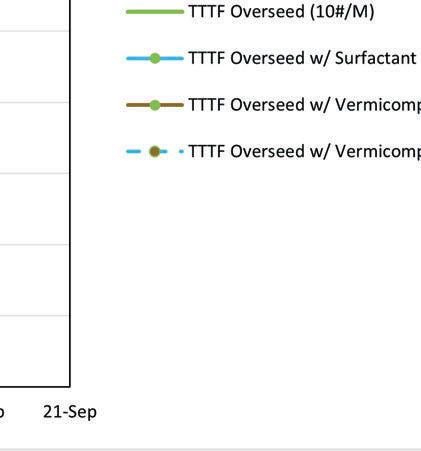
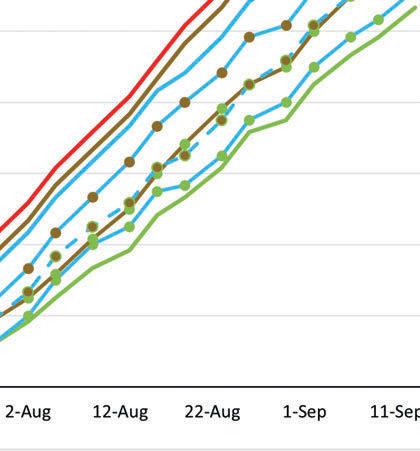
Figure 3. Seasonal canopy digital green color for Kentucky bluegrass sod as affected by compost, soil surfactant application, and turf-type tall fescue overseeding – 2021 (Study Year 2)

13TPI Turf News September/October 2022
Athlete Hydration during Physical Activity in Excessive Heat on Artificial Turf and Natural Grass (2021, $5,000)
Editor’s Note: An earlier report of this research project was featured in the article, “Assessing Differences in the Thermal Stress of Soccer Players on Natural Turfgrass and Artificial Turf,” in the April 2022 issue of SportsField Management magazine


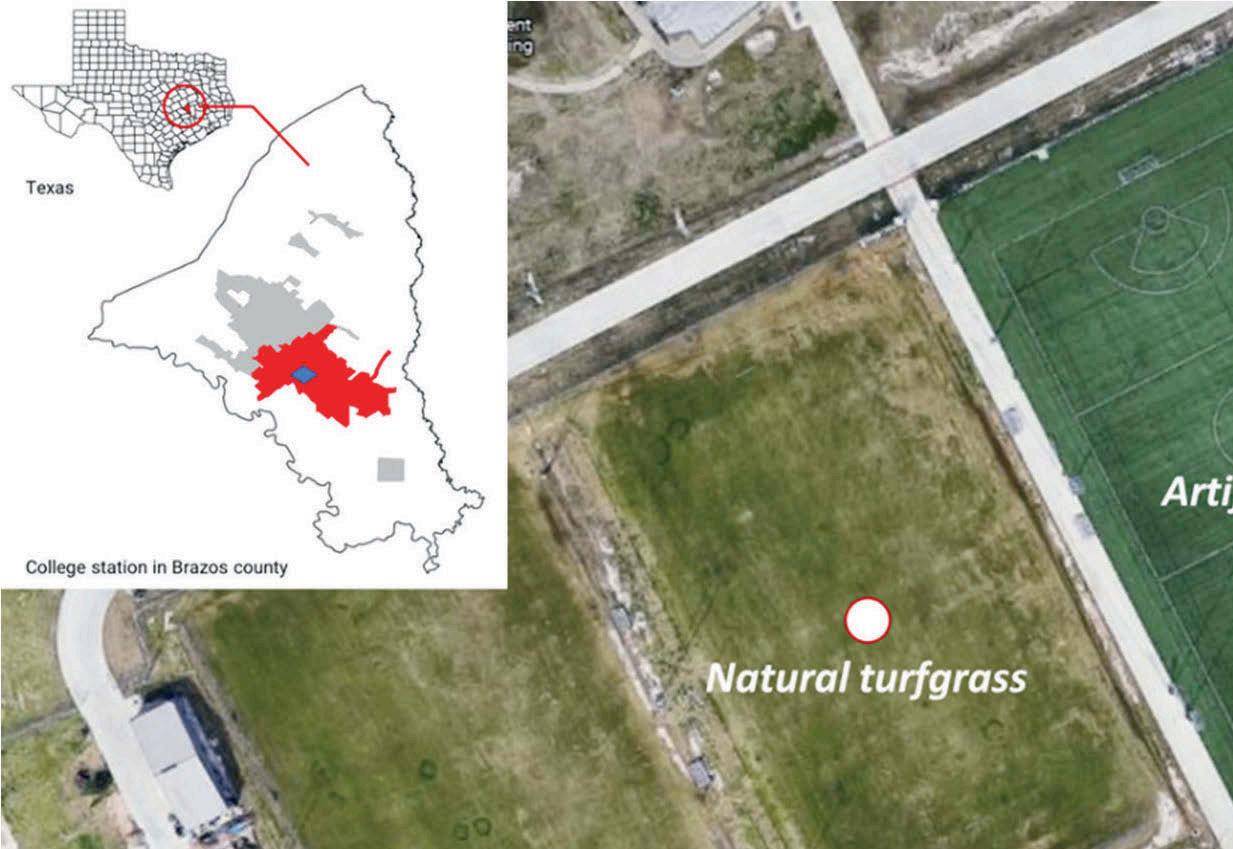
Project Report by YouJoung Kim, PhD, Department of Landscape Architecture and Urban Planning; Chase Straw, PhD, Department of Soil and Crop Sciences; Steven E. Riechman, PhD, Department of Health and Kinesiology; Brown D. Robert, PhD, Department of Landscape Architecture and Urban Planning; Texas A&M University, College Station, Texas.
Playing soccer on a scorching hot summer day may affect athletes’ physical performance and lead to exertional heat illness. Microclimates, human-level meteorological conditions modified by nearby man-made and natural objects, have been shown to be significantly impacted by differences between natural turfgrass (NT) and artificial turf (AT) (Francis, 2018; Jim, 2017; Guyer, 2020). But less attention has been paid to how athletes’ thermal sensation is affected between the two field types. Therefore, the purpose of this study was to compare Texas A&M University Men’s Club Soccer players’ thermal stress when competing on NT and AT fields. While quantifying objective and subjective thermal comfort, particular attention was given to determine differences in the players’ physiological and perceived thermal stress on each field type. Microclimate and questionnaire survey data were collected on each field type and from all players, respectively over four summer days in September 2021. An energy budget model that can estimate human thermal comfort using energy flux theory was used to quantify their physiological thermal stress.

Method and Materials Study site
Two soccer fields at Penberthy Rec Sports Complex in College Station, Texas, were selected as sites for the study. According to the Köppen climate classification, College Station’s climate is considered Humid Subtropical Climate (Cfa), where the average daily high temperature between June and September is above 88.8 degrees Fahrenheit (F) [31.56 degrees Celsius (C)].
Both soccer fields are managed by SSC Services for Education at Texas A&M University. The NT field was 105,000 sq. ft. (9,754.82 sq. m) and consisted of ‘Tifway 419’ hybrid bermudagrass on native soil, and the AT was 115,000 sq. ft. (10,683.85 sq. m) and consisted of Astroturf RootZone 3D3 Blend 52 that was installed in 2008 and had a blend of monofilament, slit film, and nylon “root-zone” fibers with crumb rubber infill. The area around the fields was wide-open with no presence of natural or man-made objects nearby (e.g., buildings, water bodies, trees, and vehicle roads) that may potentially affect thermal conditions. The study area location, field layouts, photographs of the weather sensors used, and infrared thermal imagery taken from grass and turf are shown in Figure 1.
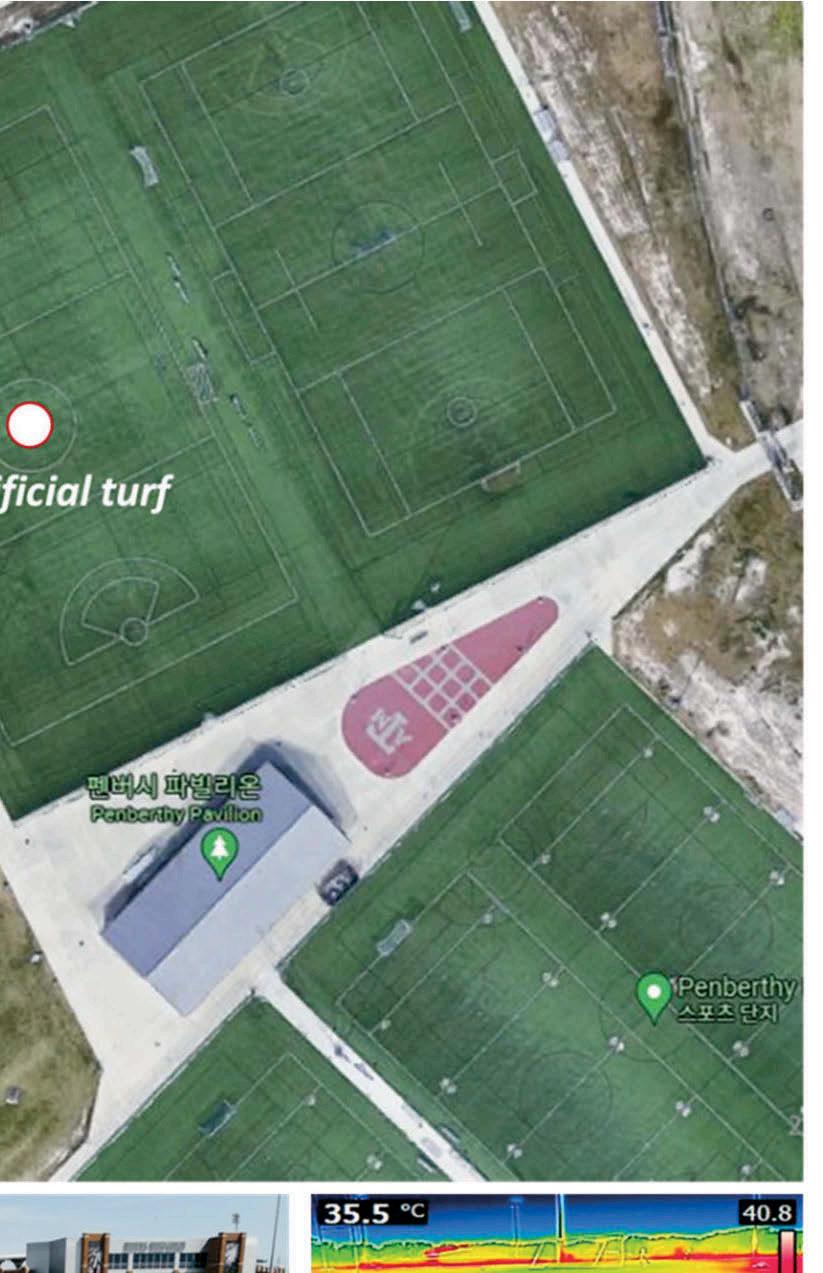
14 TPI Turf News September/October 2022
Data Collection
Microclimate measurement
Microclimate conditions of the soccer fields were measured on hot, sunny summer days (September 7, 8, 21, and 22 of 2021). Two sets of weather sensors (Maximet 501 and ATOMS 41) were installed at the center of each natural turfgrass and artificial turf field. The microclimate—air temperature (degrees F), relative humidity (percentage), wind speed (miles per hour [mph]), wind direction, and solar radiation (watts per square meter [W/m2])—was collected from 11:00 AM to 6:00 PM CST with a one-minute recording interval. In addition, the surface temperature was measured every 15 minutes on both field types by two trained surveyors using a thermal infrared camera (FLIR IR E5). The measurement height of those sensors was five feet above the ground to represent the thermal conditions at an athlete’s chest level. The summary of measured microclimate over four days is presented in Table 1. Although the same weather sensors were not used for data collection, they were thoroughly calibrated prior by multiple field tests.
Date Air temperature (°F)
Solar radiation (W/m2)
Relative humidity (%) Wind speed (mph)
Sep 7 Mean91.92 810.26 33.75 3.81
Sd 2.52 156.61 7.25 0.46
Sep 8 Mean91.49 622.89 32.23 7.41
Sd 1.65 314.81 3.43 1.70
Sep 21 Mean91.27 570.96 55.71 6.54
Sd 3.09 136.72 8.53 1.84
Sep 22 Mean83.18 736.66 26.15 8.27
Sd 0.40 105.07 0.36 0.59
Total Mean89.46 685.19 36.96 6.50
Sd 1.91 178.30 4.89 1.15
* Standard deviation (Sd)
Q uestionnaire survey
An on-site questionnaire survey was adopted to measure the perceived thermal stress that the soccer players felt during matches. Over the four days of data collection, six soccer matches (6 versus 6) were played with TAMU Men’s Club Soccer players who volunteered as study participants. Two matches were held approximately 11:00 AM to 1:00 PM CST, and the other four matches approximately 2:00 to 4:00 PM CST to have a wide range of daytime field thermal conditions. Matches consisted of four quarters, where each quarter of a match lasted 22.5 minutes with a 10-minute break in between. At each break, three out of 12 players were randomly asked to respond to eight questions about how thermally comfortable they were during the matches with a 10-point rating scale, where 0 represented “much too cold” and 10 represented “much too hot”. These questions can be grouped in three parts: 1) perceived exertion (i.e., a laborious or perceptible effort), 2) perceived surface heat conditions, 3) perceived thermal stress. The response
rate was 87.5 percent, meaning 63 out of 72 participants responded to the survey without missing values.
Estimation of objective thermal stress
To evaluate the athlete’s physiological thermal stress, the COMFA energy budget model was employed. It is an outdoor thermal comfort index that estimates the objective thermal comfort of a person based on energy budget equation. In other words, it calculates the physiological thermal load that the human body receives to maintain thermal balance with the surrounding outdoor environment. The energy budget is described as follows:
where ΔS is the change in heat storage (W/m2). When the change in heat storage is near 0, the inputs and outputs of energy would nearly balance, and a person would be thermally comfortable. A large positive value would suggest that a person is receiving much more heat than they are giving off, and they would feel too hot. A large negative
15TPI Turf News September/October 2022
Table
1)
Summary of Microclimate Condition on Penberthy Soccer Field
value would have the opposite effect. The major energy streams are convective heat loss (C), evaporative heat loss (E), conductive heat loss (K), radiative exchange (R), and metabolic heat production (M) (Kenny et al, 2009). The estimated physiological thermal stress, also called energy budget value, can be measured as watt per square meter of a person’s surface area (W/m2), a unit of energy density. The measured microclimate and the athlete’s surveyed exertion level were the main inputs to the COMFA model estimation. The metabolic rate of a running person ranged between 300 – 650 W/m2 depending on exertion level, and the summer uniform was selected to determine the clothing insulation level.
Results
Microclimate condition
Surface temperature showed a significant difference between NT and AT. The differences in microclimate between the two field types are summarized in Table 2. Regarding the overall pattern, all the measurement values of AT’s microclimate (e.g., air temperature, solar radiation, relative humidity, and wind speed) were slightly higher than NT. However, except for surface temperature, the degree of their difference is not significant considering their error ranges of measurement. In contrast, the surface temperature presented a large deviation between AT and NT, whose average difference was over 70.0 degrees F (21.11 C).
The daytime pattern of AT and NT surface temperature was further explored to identify the difference in variation over the day (Figure 2). AT’s surface temperature showed considerable fluctuation over time compared to NT’s. Over the four-days of measurements, the surface temperature ranged between 104.6 degrees F (40.33 degrees C) and 161.6 degrees F (72 degrees C) for AT and between 86.8 degrees F (30.44 degrees C) and 102.6 degrees F (39.22 degrees C) for NT. It seems that their daytime mean surface temperature was primarily affected by cloud cover. Overall, the surface temperatures peaked on September 7 when the cloud cover was at the lowest at 10 percent. Meanwhile, surface temperatures were lowest on September 22 when the cloud cover was relatively higher at 40 percent, with a somewhat cooler ambient temperature.
The AT – NT difference in surface temperature showed similar daytime patterns with the mean surface temperature. Their difference reached a peak of 96.5 degrees F (35.83 degrees C) at 2:30 PM CST, September 7, and lowest at 46.8 degrees F (8.22 degrees C) on 3:30 PM CST, September 22. The degree of temperature gap was likely due to increase from morning to high solar noontime at around 1:00 PM CST and after then declining toward evening time at 4:00 PM CST. As surface temperature was the microclimate component primarily determined by field characteristics, we expected it to be a crucial driver causing differences in players’ thermal stress.
16 TPI Turf News September/October 2022
*Standard deviation (Sd) *Difference (Diff.) Variable MeanSd Min Max Diff. in Air temperature (°F) 33.12 0.38 32.57 33.90 Diff. in Solar radiation (W/ m2) 16.5835.76-29.5474.76 Diff. in Relative humidity (%) 2.970.951.334.38 Diff. in Wind speed (mph) 1.671.40-1.574.56 Diff. in Surface temperature (°F) 70.15 14.39 46.88 96.50 Table 2) AT – NT difference in microclimate conditions
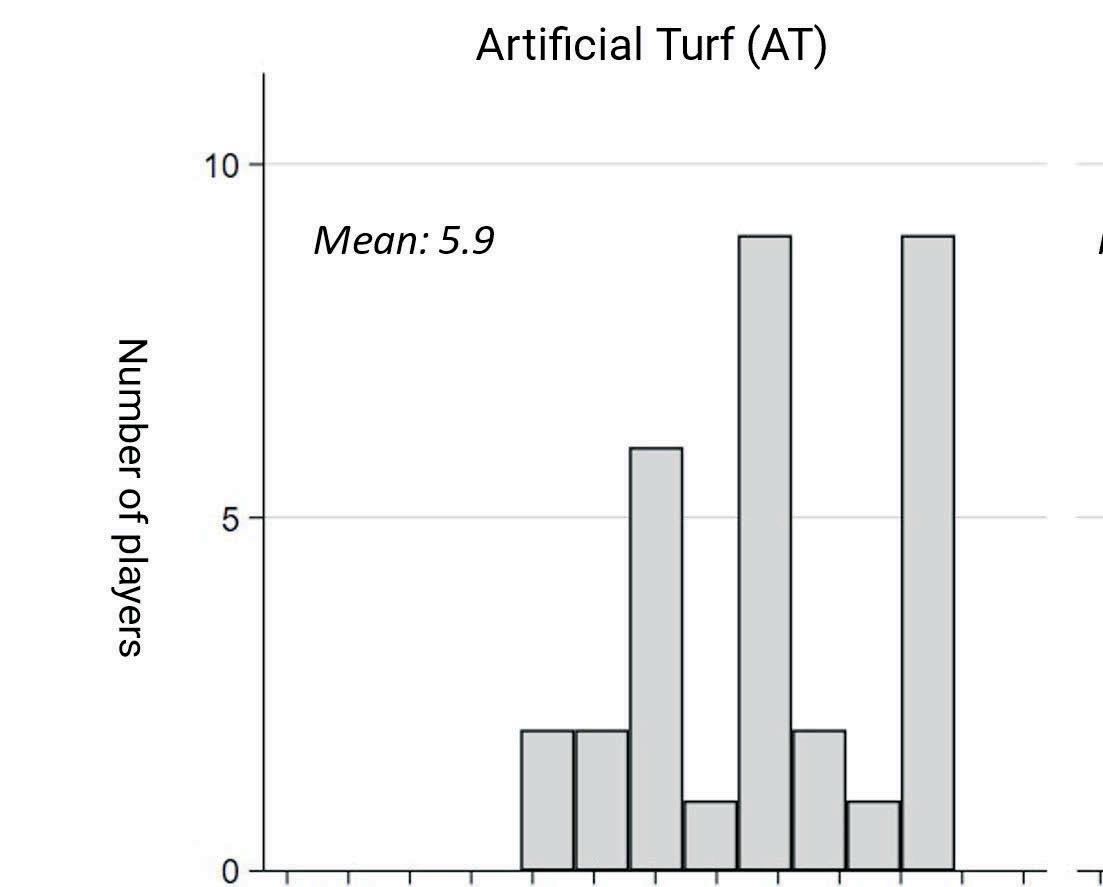
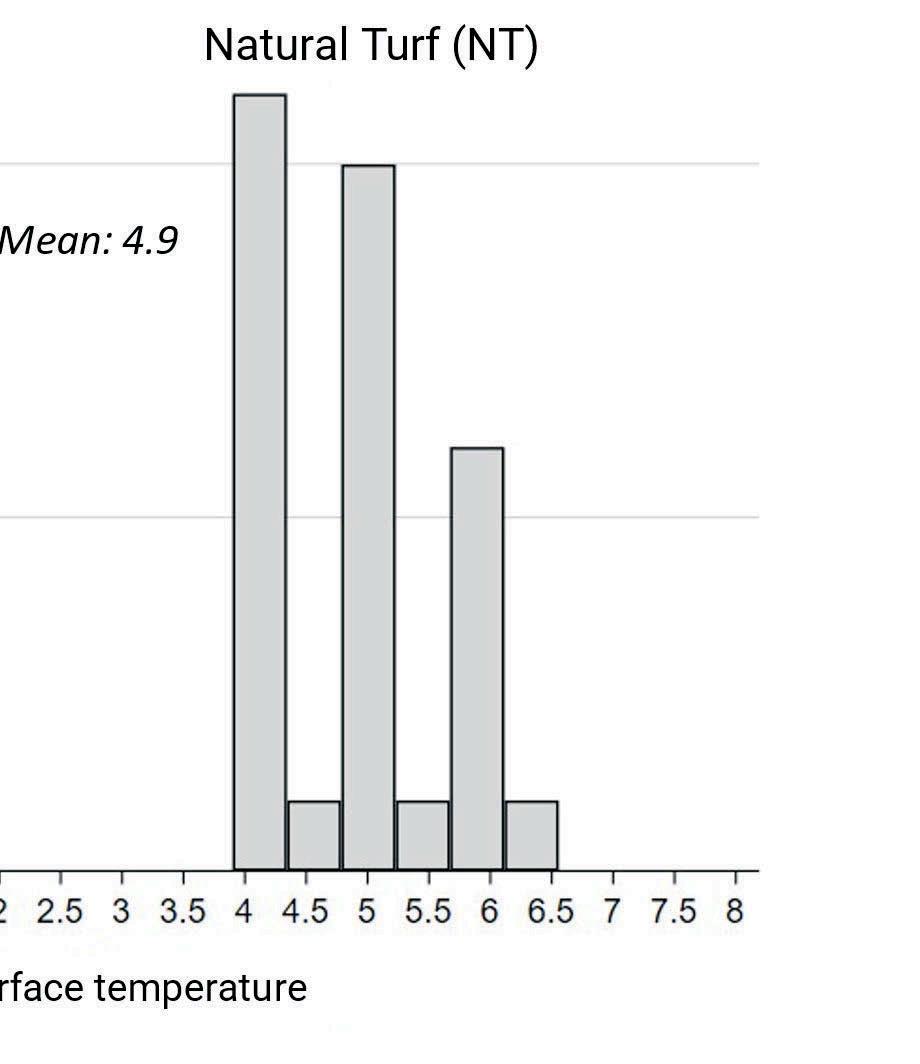

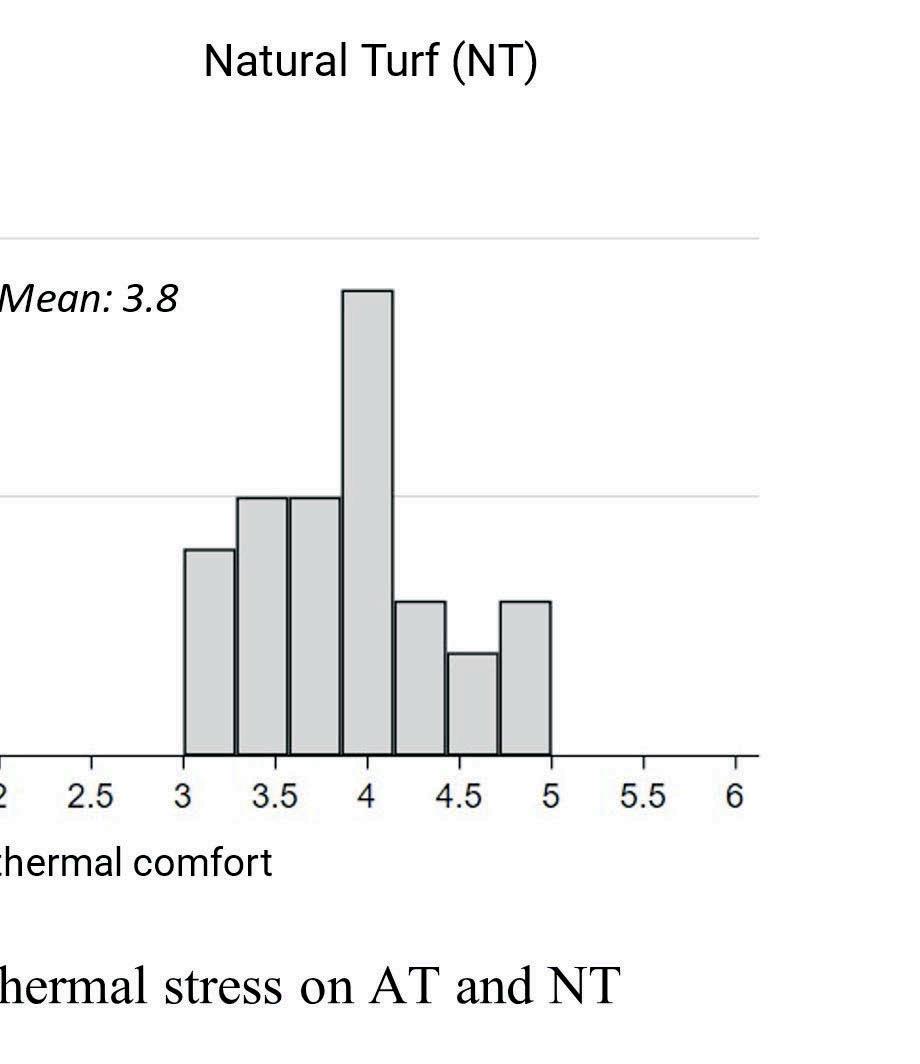

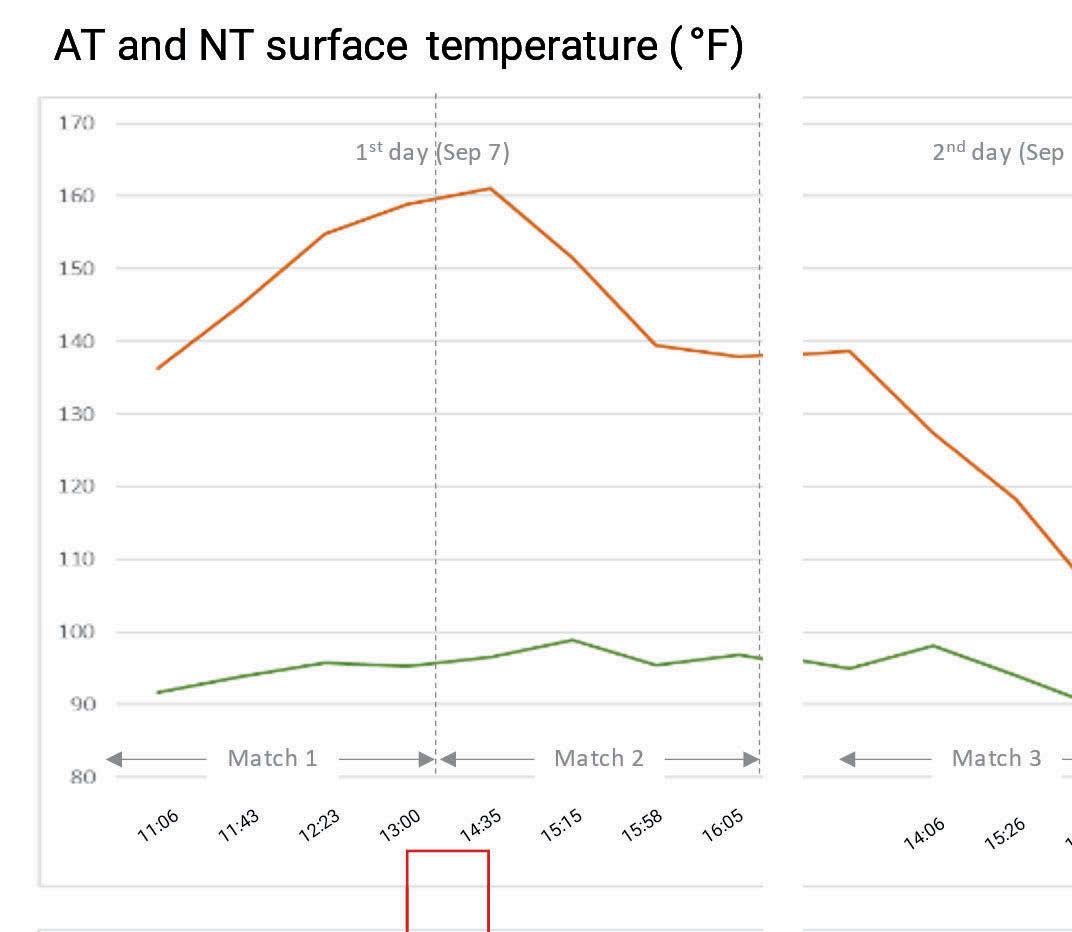
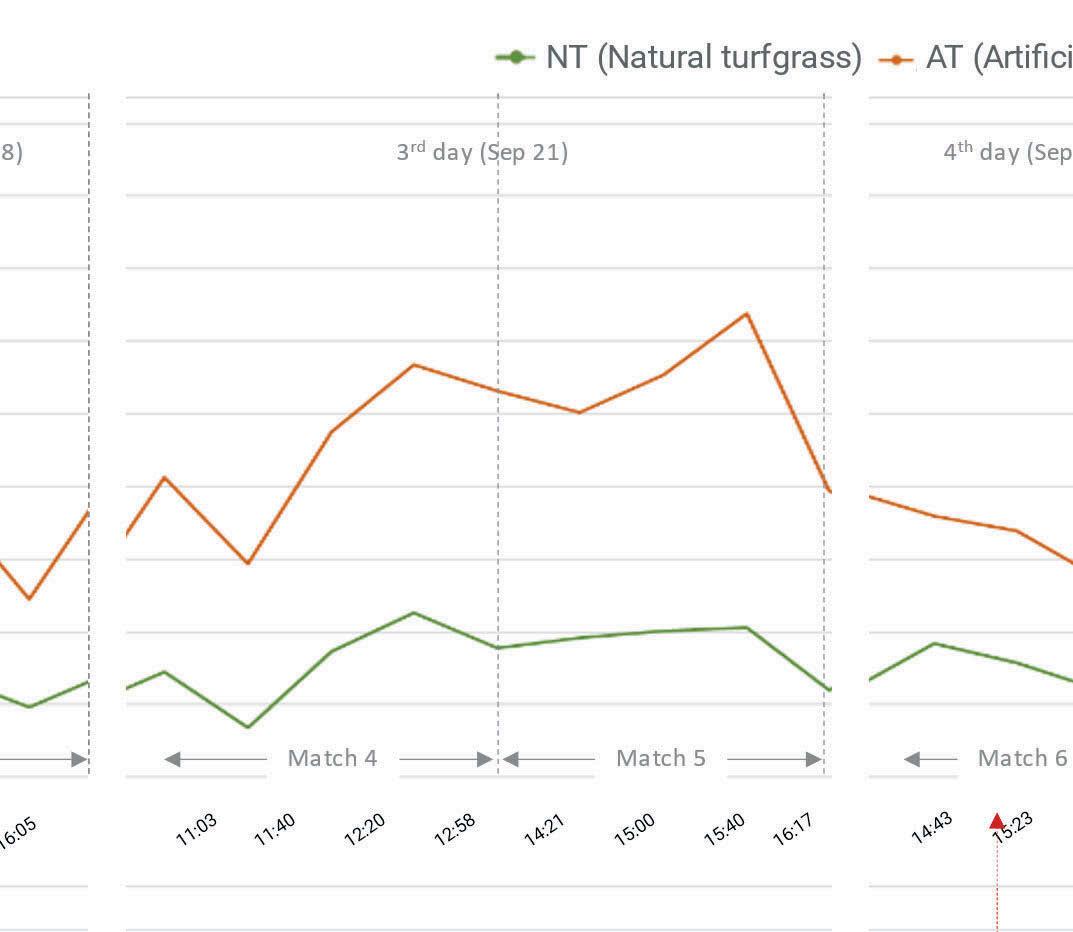
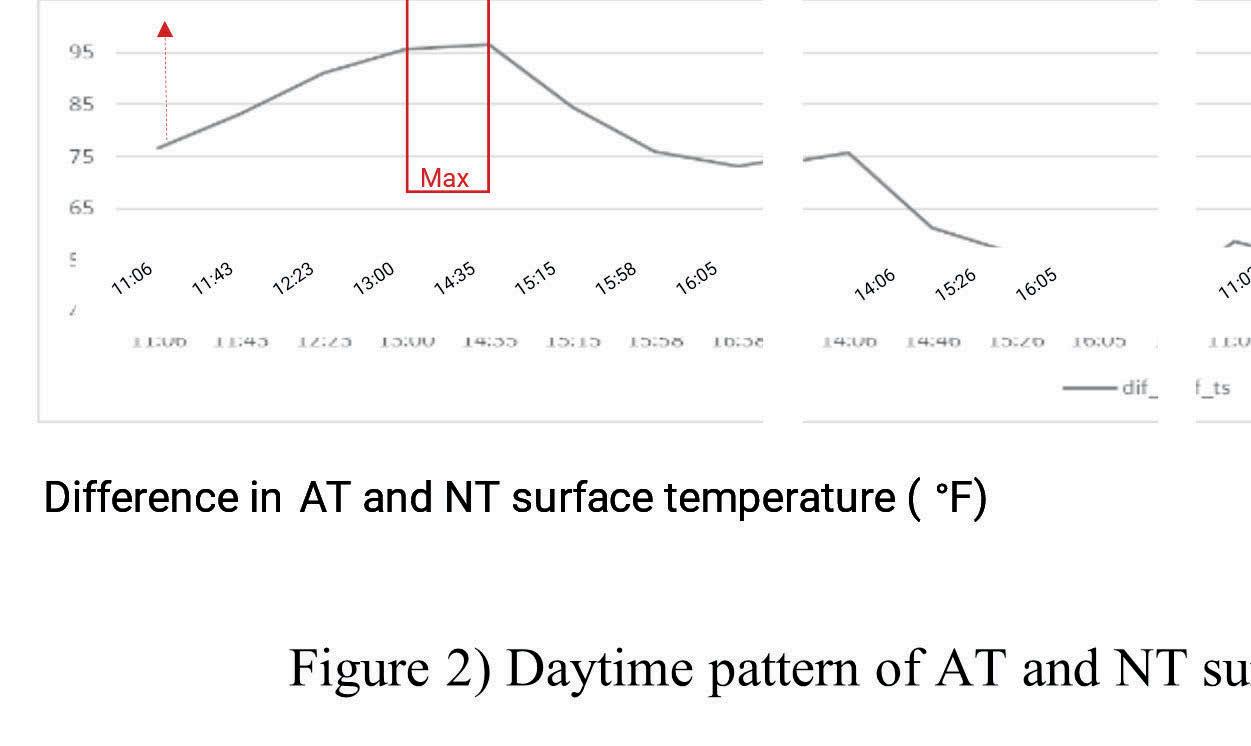

17TPI Turf News September/October 2022
Perceived thermal stress (Survey Response)


Soccer players felt higher thermal stress when playing on artificial turf (AT) than natural turf (NT). Figure 3 (shown on the previous page) presents the frequency distributions of players' perceived level of surface temperature and thermal stress for AT and NT. The X axis is the heat scores of perceived surface temperature (upper figure) and perceived thermal comfort (bottom figure), respectively. These values reflect how thermally comfortable they were on each field type during match. And the Y axis is the number of players choosing each score. The upper histogram shows that AT has a relatively higher perceived surface temperature score with a broader range than NT. The frequency distribution curve also indicates that the mean AT's heat score is 6 points which is one point higher than the mean NT's. Moreover, the heat score of the AT ranges between 4 to 7.5, which is slightly broader than that of the NT. Regarding the perceived thermal comfort, although the range of heat score range is identical as it ranges between 3 to 5, the mean AT score is at 4.3 points, which is higher than the mean NT score of 3.8.

Objective thermal stress (Energy budget model)
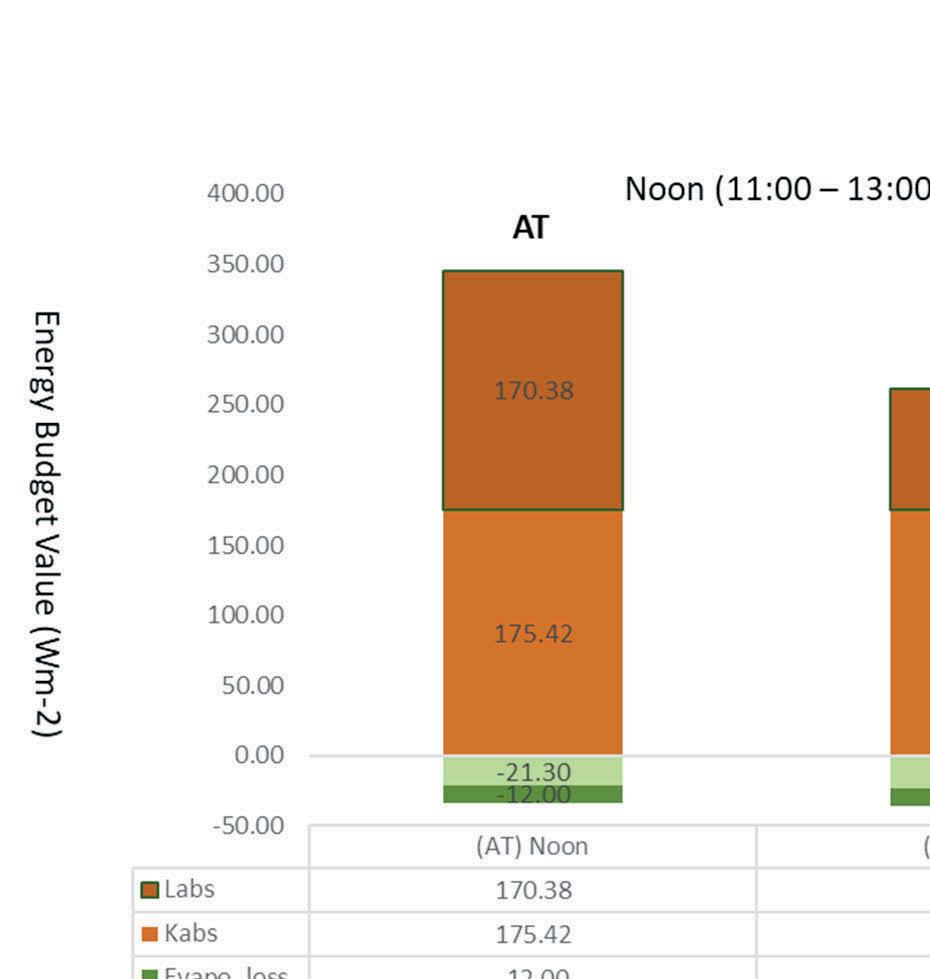
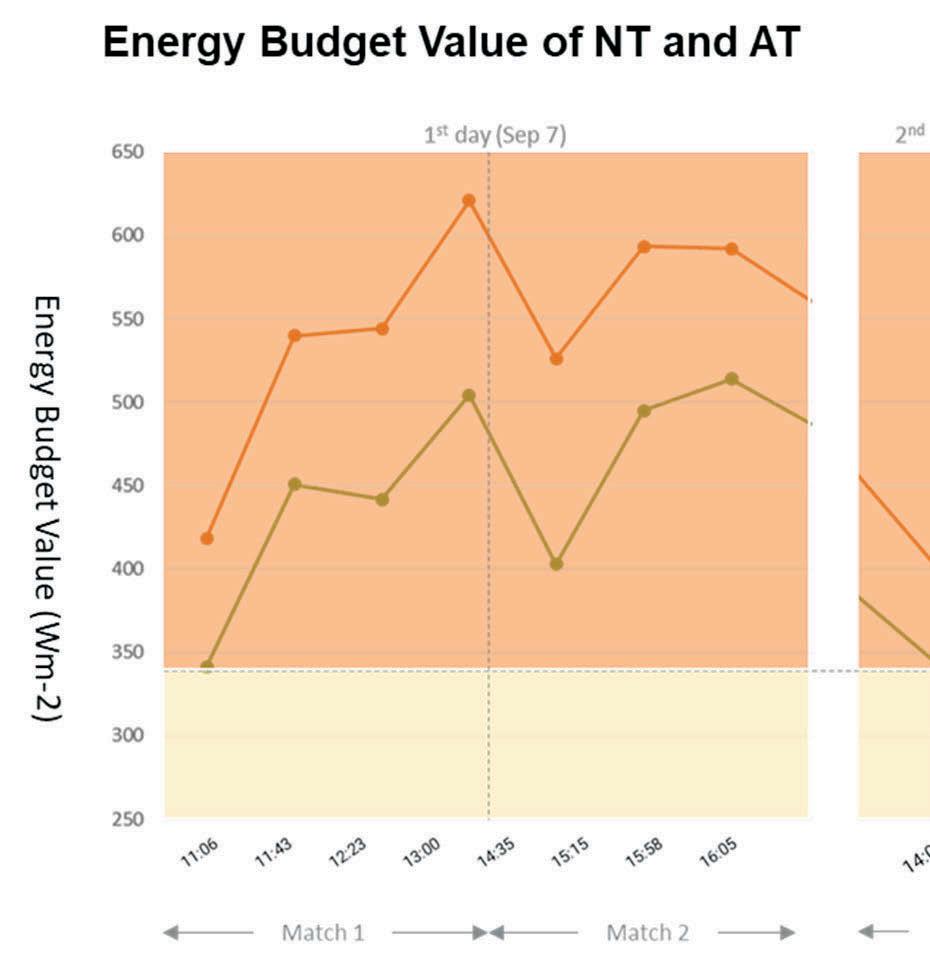
Evaluation of thermal stress on natural and artificial turf


18 TPI Turf News September/October 2022
Physiological thermal stress of soccer players on the two field types were evaluated using the COMFA model. The estimated COMFA output was described as energy budget values that can be categorized into four classified thresholds of heat stress values (Harlan et al., 2006): Caution (65–120 W/m2), Extreme caution (121–200 W/m2), Danger (201–339 W/m2), and Extreme Danger (340 or higher W/m2). According to the classification, Figure 4 showed that, for the majority of the match, the players felt very hot and had Extreme Danger levels of thermal stress. Energy budget values reached the peak of 620 W/m2 at 2:00 PM CST, September 7 and arrived at the low of 300 W/m2 at 4:00 PM CST, September 8, and 2:00 PM CST, September 22. Only limited periods, from 2:00 to 4:00 PM CST on September 8 and from 2:00 to 2:30 PM CST on September 22, fell into Danger level of thermal. Their daytime patterns with peak and bottom hours were highly coupled with surface temperature.
When it comes to the AT-NT difference in physiological thermal stress, it was found that NT can reduce the thermal stress of soccer players by up to 20 percent compared to AT. Overall daytime patterns of thermal stress demonstrated that the difference in energy budget values between AT and NT was 10.6 percent higher in the afternoon than the noon during clear sunny days. Their highest difference was on September 7 around 3:00 PM CST at 124 W/m2, while their lowest difference was on September 22 around 4:00 PM CST at 25 W/m2. It seemed that the magnitude of disparities in thermal stress was likely to increase when the shortwave solar radiation (or direct solar beam) coming from the sky was strong. Meanwhile, their disparities tended to decline when the cloud cover was relatively larger with high wind speed.

The most significant components of thermal loading to which players are exposed are Kabs for NT and Labs for AT. Figure 4 indicates individual contribution of four energy components [absorbed solar radiation (Kabs), absorbed terrestrial radiation (Labs), convective heat loss (C), and evaporative heat loss (E)] to thermal loadings that athletes received during daytime hours. The Kabs are the amount of incoming shortwave solar radiation that a player absorbs, and the Labs are the amount of absorbed longwave ground radiation emitted from the field. Evaporative heat loss is the loss of body heat that occurs through respiration and perspiration, whereas convective heat loss is the transfer of heat from the body due to the wind. Kabs and Labs comprise the largest proportion of the net energy budget, leading to the overall increase in thermal stress of players. As the Kabs was determined by exposure level to direct solar radiation, no difference was observed between the field types. Meanwhile, the LABS of AT was 97.7 percent and 91.5 percent higher at the noon and the afternoon, respectively, compared to NT.
Effects of AT and NT surface temperate on player’s thermal stress
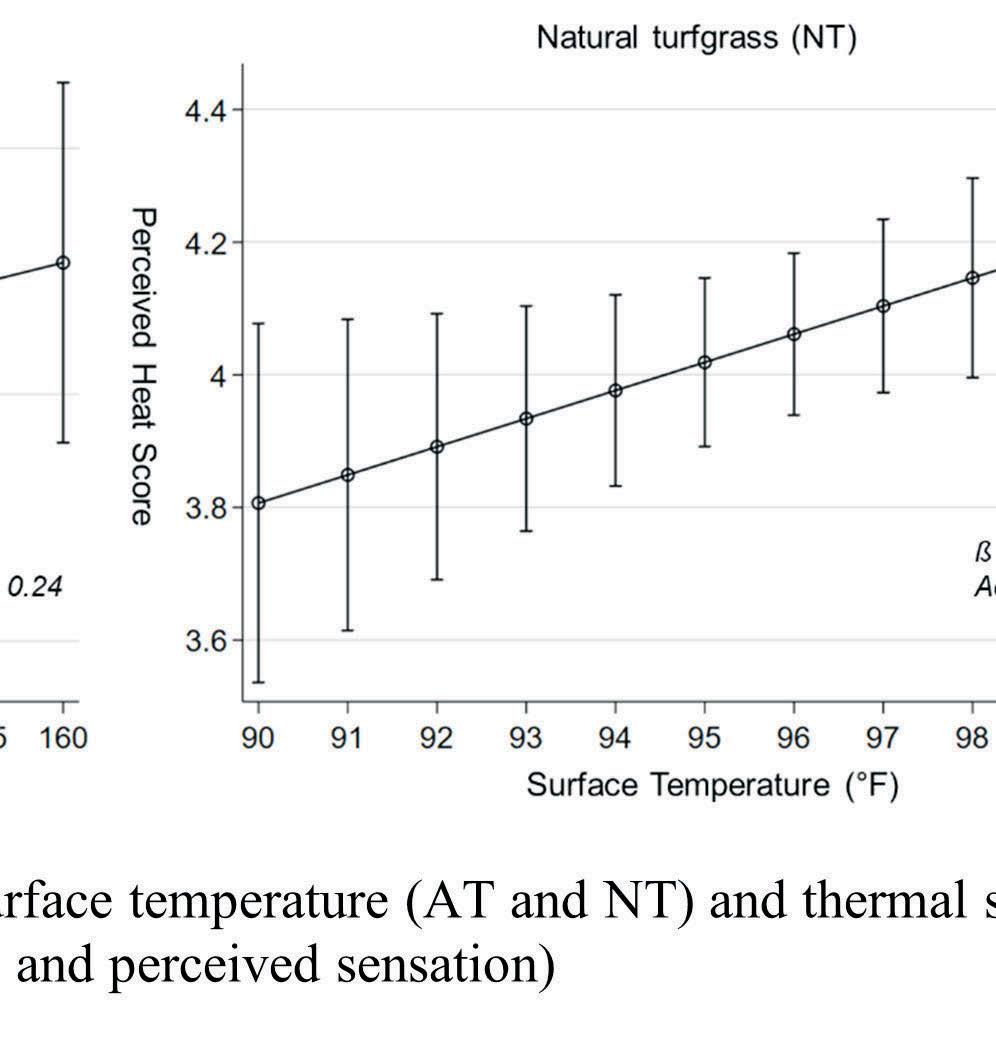

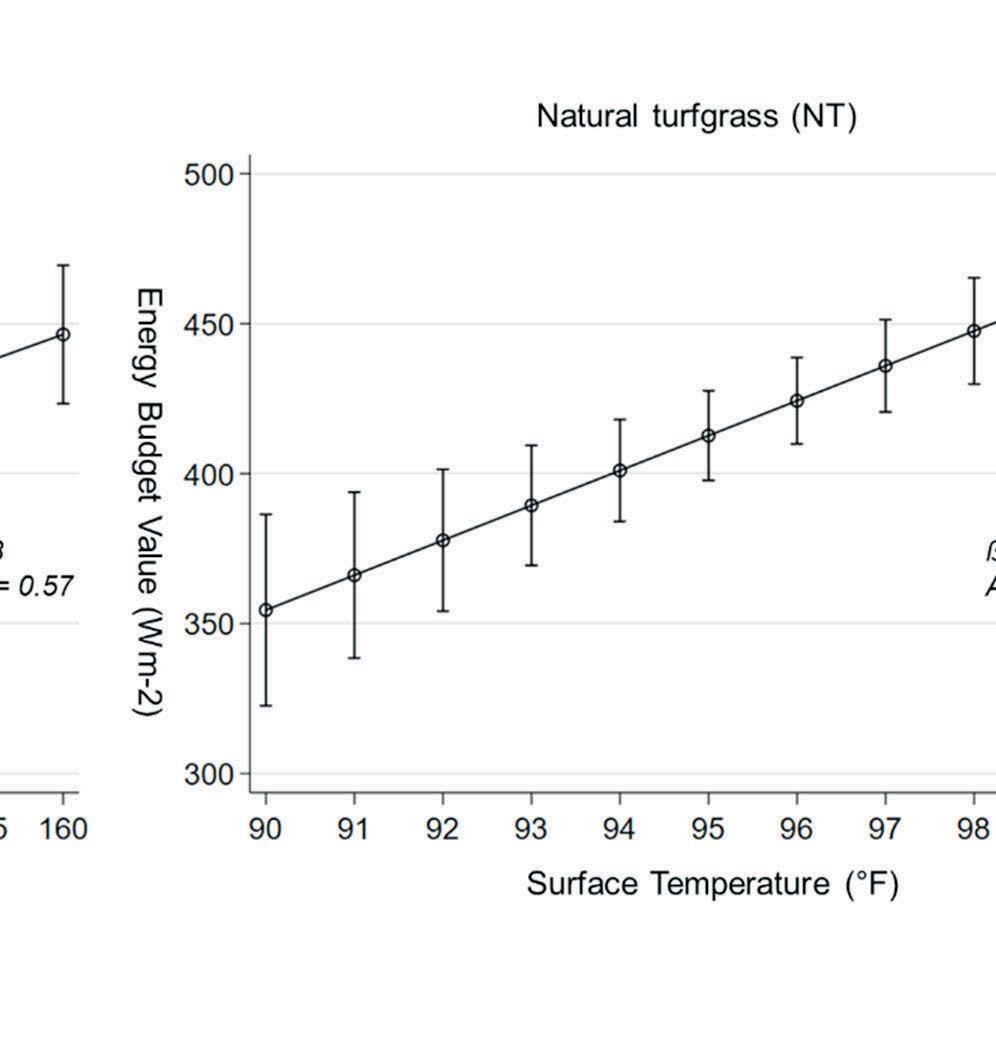
19TPI Turf News September/October 2022
Effects of AT and NT surface temperate on player’s thermal stress (continued from page 19)
The impact of AT and NT surface temperature on players' thermal stress was estimated using a statistical modeling procedure called multiple linear regression, where time of day and day of week were considered. Two sets of models were developed for players on each field type—physiological thermal stress and perceived thermal stress. The Figure 5 graphic showing this data in on the previous page. Particular attention was given to (1) the comparison of the impact of turf surface temperature on different types of thermal stress, as well as to (2) investigate the explanatory capacity of turf surface temperature as a proxy of thermal stress. Upper plots showed the predicted changes in physiological thermal stress (W/m2) by an increase in one Fahrenheit degree of AT and NT surface temperature, whereas the bottom plot indicated the predicted shifts in perceived thermal stress. All models were statistically significant, indicating that both field types affect physiological and perceived thermal stress significantly.
The impact of surface temperature on athletes' thermal stress is higher on NT than AT. The coefficient slope of NT is 11.6 for physiological thermal stress, meaning that the one-degree F increase in surface temperature led to 11.6 growth in energy budget values (W/m2). The coefficient slope of AT was 6.9 which was three times less than NT. Interestingly, a similar outcome was found in perceived thermal stress, where NT's coefficient slope (0.014) was higher than AT’s (0.008). These findings indicate that both the perceived and physiological thermal stress of the players are more sensitive when they are performing on NT. We assume that this is mainly due to the higher thermal stress level on AT that may result in the reduced performance (or amount of activity) and lower metabolic rates leading to decreases in thermal stress of players compared to NT.
Explanatory power of surface temperature for thermal stress varies on the types of thermal stress. In this study, explanatory power indicates the ability on how much variations in players' thermal stress can be explained by the surface temperature. Overall, the surface temperatures showed better performance in explaining athletes’ physiological thermal stress than the perceived thermal stress model. In the physiological thermal stress model, the explanatory power (or adjusted r-squared) values are 57 percent and 49 percent for AT and NT respectively, which are around 30 percent higher than the perceived thermal stress model. This implies that, considering their high explanatory power of around 50 percent, surface temperature can be considered a superior proxy when it is used for measuring the physiological thermal stress of soccer players.
Conclusion
This study compared the perceived and physiological thermal stress of soccer players performing on AT and NT. Microclimate was measured on each field type during four hot, sunny, summer days in 2021. Questionnaire surveys and the COMFA model were adopted to measure perceived and physiological thermal stress, respectively. Our findings confirmed that surface temperature is the main driving factor that leads to an increase in both perceived and physiological thermal stress of the soccer players in summer daytime. The highlights of the key findings are as follows:
• Mean AT-NT difference in surface temperature was over 68.0 degrees F (20 degrees C), which tends to be more pronounced when the direct solar beam is stronger, and the time reaches solar noon at around 1:00 PM CST
• Athletes performing on AT had higher perceived and physiological thermal stress than those on NT. Compared to AT, NT can reduce the physiological thermal stress by up to 20 percent in a setting of a clear, hot, and sunny day. The findings of this study are useful for biometeorology and sports field management to enhance the athletes’ safety from heat stress and increase their match performance. Future studies need to address how the difference in thermal stress induced by AT and NT affects the athlete’s physical performance and physiological body changes, such as hydration.
REFERENCES
Francis, R. A. (2018). Artificial lawns: Environmental and societal considerations of an ecological simulacrum. Urban Forestry & Urban Greening, 30, 152-156.
Guyer, H. (2020). Athletic Surfaces’ Influence on the Thermal Environment: An Evaluation of Wet Bulb Globe Temperature in the Phoenix Metropolitan Area. Arizona State University, Temple, AZ
Harlan, S. L., Brazel, A. J., Prashad, L., Stefanov, W. L., & Larsen, L. (2006). Neighborhood microclimates and vulnerability to heat stress. Social science & medicine, 63(11), 2847-2863.
Jim, C. Y. (2017). Intense summer heat fluxes in artificial turf harm people and environment. Landscape and Urban Planning, 157, 561-576.
Kenny, N. A., Warland, J. S., Brown, R. D., & Gillespie, T. G. (2009). Part A: Assessing the performance of the COMFA outdoor thermal comfort model on subjects performing physical activity. International Journal of Biometeorology, 53(5), 415-428.
20 TPI Turf News September/October 2022
Long-term Environmental Impacts and Energy Balance of Lawn Removal and Conversion to Alternative Landscapes (2021-23, $30,000)
As population growth in urban areas continues to rise, water conservation is becoming a key priority for many municipalities. In recent years many municipalities have begun to offer rebate programs which incentivize removal of natural turfgrass areas and conversion to alternative ‘waterefficient’ landscapes, with the goal of reducing outdoor water use. In fact, the environmental impacts and changes to ecosystem services associated with such landscape alterations are still not well understood. As a result, ‘Ecosystem Services and Impacts’ of lawns was recently identified as one of the top research priority areas through the NTF/FFAR National Turfgrass Stakeholder Summit.
A two-year The Lawn Institute/Scotts Miracle-Gro funded research project was conducted at the Urban Landscape Runoff Research Facility at Texas A&M during 2018 and 2019. The results of the initial two-year study highlighted many differences in rainfall capture and runoff dynamics, surface temperatures, and management requirements between natural turfgrass lawns, xeriscapes, mulched, and artificial turf landscapes. However, as these landscape treatments continue to mature, there is a need to evaluate longer-term environmental impacts/runoff dynamics, and to characterize energy balance, greenhouse gas emissions, and soil nutrient pools. This progress report provides a summary of results of the first year of the currently funded project.
This two-year study is being conducted at the Urban Landscape Runoff Facility located at the Texas A&M University Soil and Crop Sciences Field Research Laboratory, College Station, TX. The facility consists of 24 individually irrigated 13-foot by 27-foot (3.962-m by 8.229-m) plots originally established in 2012 with ‘Raleigh’ St. Augustinegrass. Each plot has its own runoff collection system composed of an ISCO flow meter and sampler, which provides full documentation of the amount of water lost to runoff as well as collection of water samples for subsequent measurement of the chemical content of the runoff. In August 2018, 16 of the formerly natural grass plots were converted to the following alternative waterefficient landscapes. The treatments were then:
1. St. Augustinegrass Lawn: Original ‘Raleigh’ St. Augustinegrass (non-converted)
2. Water Efficient Landscape: Xeriscape: Native plants (covers 50 percent of the entire plots) planted on 3 inches (7.62 cm) of compacted decomposed granite following sod removal.
3. Water Efficient Landscape: Mulch: Native plants (covers 50 percent of the entire plots) planted on 2 inches (5.08 cm) of dark shredded wood mulch following sod removal.
4. Artificial Turf: Synthetic turf installed atop of compacted decomposed granite base, with grit silica sand infill following sod removal.
5. Sand-Capped Lawn: Washed Raleigh St. Augustinegrass sod laid atop of a 4-inch (10.16-m) sandcap layer following sod removal.
Data collection for this project was initiated in April 2021 and will continue until June 2023. Parameters of interest in this study include:
Runoff and Rainfall Capture Dynamics(pH, electrical conductivity (EC), Nitrogen (Total N, NO3-N, NH4-N, organic N) and orthophosphate-P concentrations),
Nutrient losses through denitrification and volatilization
Energy Balance – Net radiation, albedo, spectral irradiance (400 to 1100 nm), spectral reflectance, surface temperature, soil heat flux density, atmospheric humidity, and wind speed). Sensible heat flux density (rate of heating or cooling of air) and latent heat flux density (rate of evapotranspiration) will be estimated by energy balance theory.
Soil nutrient dynamics - Soil nitrate-N, ammonium-N and total Carbon will be analyzed on the soil cores to understand the long-term implications on soil nutrient pools.
Runoff dynamics have been continually monitored since the start of the study. To date, 10 runoff events have been measured in the study. Total and cumulative runoff volumes for each date and landscape type are shown in Figure 1. Not surprisingly, runoff volumes have been highly correlated to rainfall depth, and a minimum of 20 mm (.787 in.) of rainfall has been required to generate noticeable runoff from most of the landscapes. The effect of landscape type on total runoff volumes from treatments appears to be consistent with the prior two-year study with Artificial turf (AT) and Xeriscaping (XE) consistently generating the most runoff among all landscapes (Figure 1).
St. Augustinegrass lawn plots occasionally show similar volumes of runoff as AT and XE, but usually only when rainfall occurs within 24 hours of irrigation. However, when rainfall amounts are greater than 60 mm (2.362 in.), differences in runoff volumes between St. Augustinegrass lawn and AT and XE become more apparent. Also
21TPI Turf News September/October 2022
consistent with the previous project, the Sand-Capped lawn plots continue to provide excellent rainfall retention (i.e., runoff mitigation), during the majority of rainfall events.
In terms of runoff quality analysis, samples for each runoff event have been collected, filtered, and frozen for future testing at the end of the project. Analysis of these samples was delayed slightly due to the retirement of our former water quality specialist, Dr. Aitkenhead-Peterson. Following this season, samples will be analyzed and provided in next year’s final report.
Figure 1. Total Runoff (L) and Cumulative Rainfall (mm) for each runoff event and total runoff (L) of all landscapes for each runoff event during the study period. Error bars represents standard error.
Greenhouse gas emissions including CO2, N2O, CH4, and NH3 were monitored several times during 2021 using a portable gas analyzer (Figure 2). The first measurements were conducted on 7/28/21, which showed the background level of gaseous emissions prior to fertilization (of St. Augustinegrass lawn and Sand-Capped plots) and irrigation (of all plots). On 8/2/21, all turf plots were then fertilized at a rate of 1 lb. N per 1000 sq ft. [.454 kg. per 92.903 sq. m.]) using Scotts Turf Builder (32-0-10), plots were irrigated that evening (.5 inch [1.27 cm.] of water). Subsequent gas measurements were collected at one day (8/3/21), seven days (8/10/21), and 14 days (8/17/21) afterwards.
Figure 2. Measurement of gaseous emissions being taken for St. Augustinegrass Lawn plots during the Texas A&M landscape study.
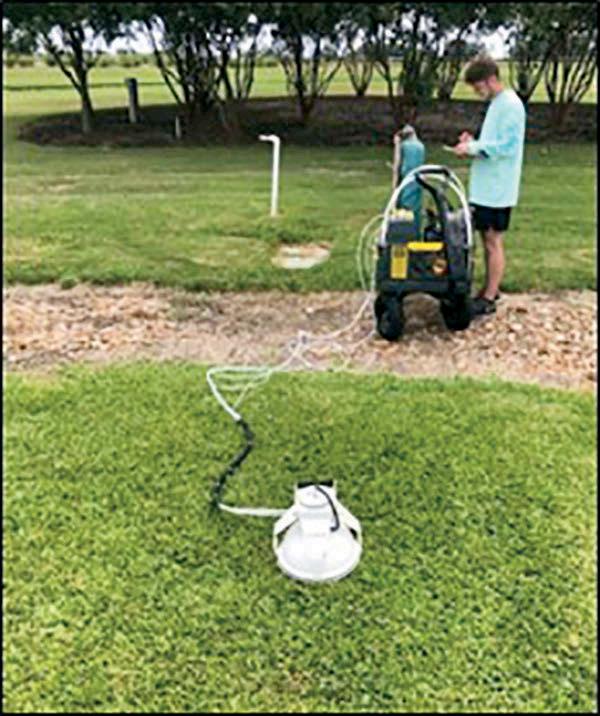
Figure 3. CO2 flux of each landscape type, measured prior to (7/28/21) and at one-day, seven-days, and 14-days after the 8/2/21 fertilization and irrigation event. Measurements were conducted in the morning on each day. Error bars represent standard error.
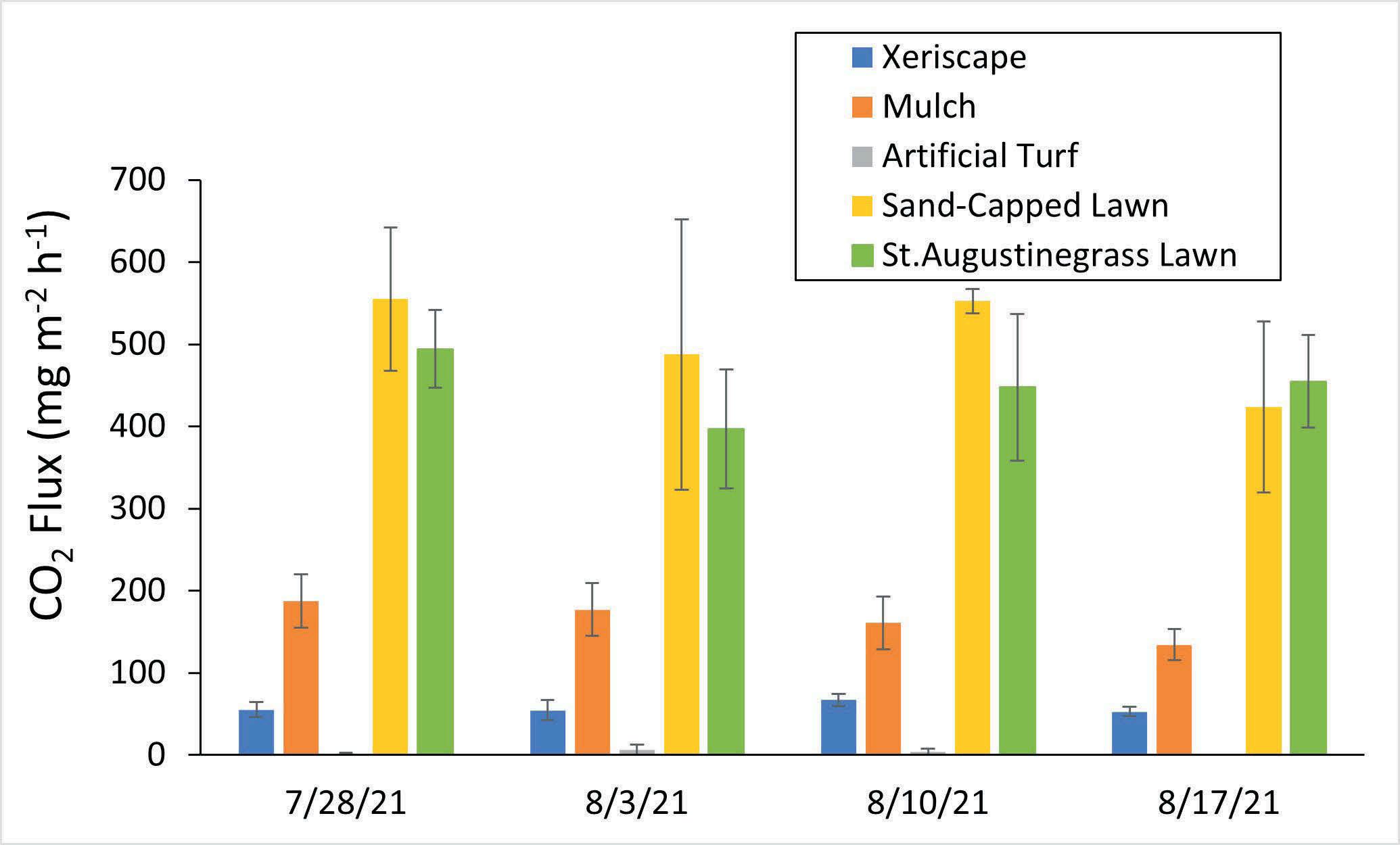
Neither CH4 nor NH3 were detected for any landscapes on any measurement date, and thus, only the results of CO2 and N2O are presented. The CO2 flux appeared to be correlated primarily with the presence of plant biomass and associated decomposing clippings/thatch, as well as the overall soil organic pool associated with a given landscape type. The highest CO2 flux level was found for Sand-Capped Lawn and St. Augustinegrass Lawn treatments, which we attribute to greater amounts of soil carbon and microbial activity (Figure 3). Even though the same plant palette was used for xeriscape and mulch, CO2 flux was higher on Mulch compared to Xeriscape plots. This is likely to be related to the elevated amounts of
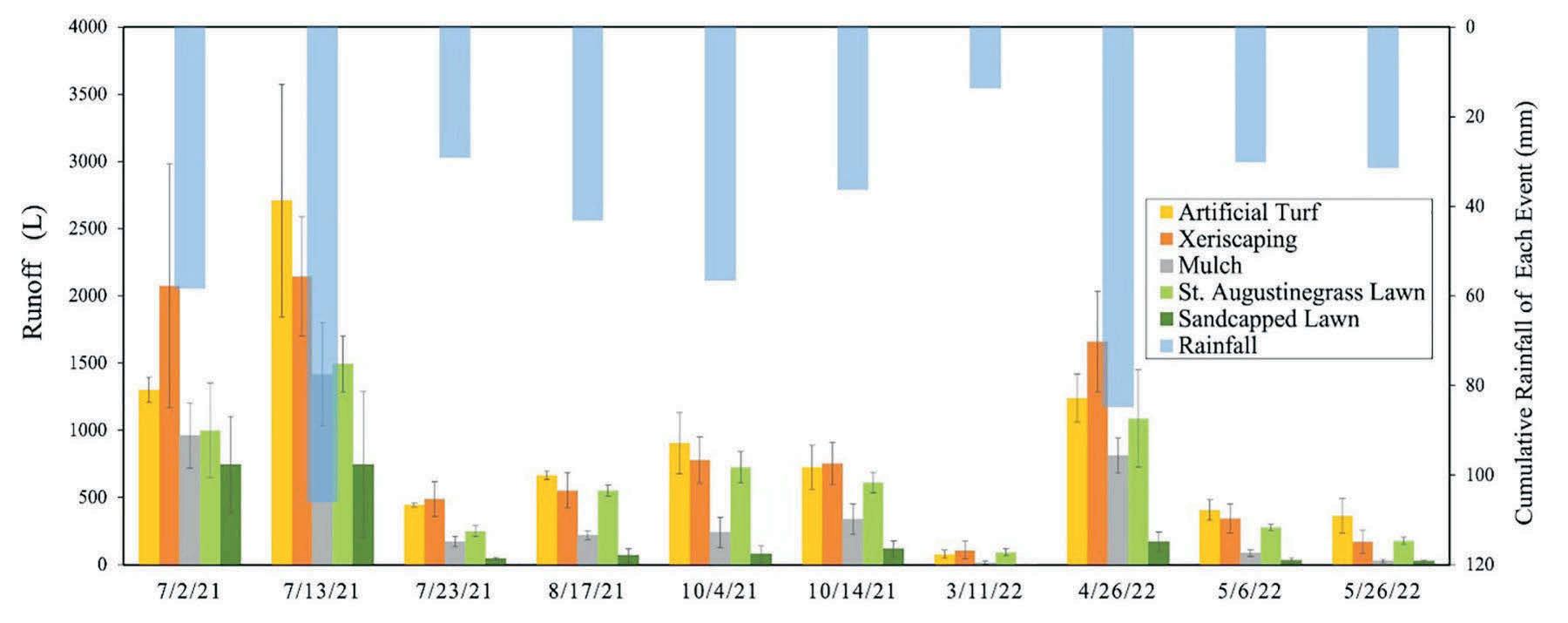
22 TPI Turf News September/October 2022
organic matter in the hardwood mulch plots as compared to the decomposed granite-based xeriscape plots. In addition, the CO2 flux seemed unaffected by fertilization/irrigation, as measured emissions did not increase beyond the baseline for any treatments including St. Augustinegrass or Sand-Capped Lawns. It should also be noted that the measured CO2 flux reported here should not be confused with net carbon balance of a given landscape system. This is because the chamber used to measure gas emissions blocked sunlight to the turf, which would have resulted in stomatal closure and prevented gas exchange from the turf during the measurement period.
Mulch showed the highest N2O flux among all landscapes over all four measurement dates (Figure 4). This finding suggests that hardwood mulch may produce intermittent anaerobic soil conditions that intensifies N losses through denitrification. Further, irrigation appeared to contribute to elevated N2O flux measured in mulched plots. In addition, except Mulch, N2O flux primarily occurred following irrigation and decreased over time, with no detected amounts two weeks after irrigation/fertilization for any landscapes. Interestingly, there was no N2O flux occurring from the SandCapped Lawn Treatment. Gas emission measurements will be repeated during the summer of 2022.
Subsurface temperatures were monitored from January to August 2021 at the 2 in. (5.08 cm.) soil depth. Data were collected as daily high, low, and average temperatures for all landscapes. As seen in Figure 5., xeriscaping and artificial turf are more sensitive to ambient temperature changes than the other landscapes. For example, during an unusually cold period in February 2021, the lowest temperatures were observed on Xeriscape and Artificial turf (AT). However, during the warmer times of the year, their temperatures became greatly higher than that of the Sand-Capped lawn and St. Augustinegrass lawn, especially when with respect to daily high and daily average temperatures. The daily high temperature for the two lawn types never exceeded 30 degrees C (86 degrees F) during the summer, and in comparison, the daily high temperature of Xeriscape and AT were regularly within the 30 to 45 degree C (86 to 113 degrees F) temperature range. The high subsurface temperature of Xeriscape and AT could have an influence on surface thermal comfort and also may alter the soil microbial activities, which are worth a further investigation in the future study. More extensive measurements including radiation measurements will also be taken during summer 2022.
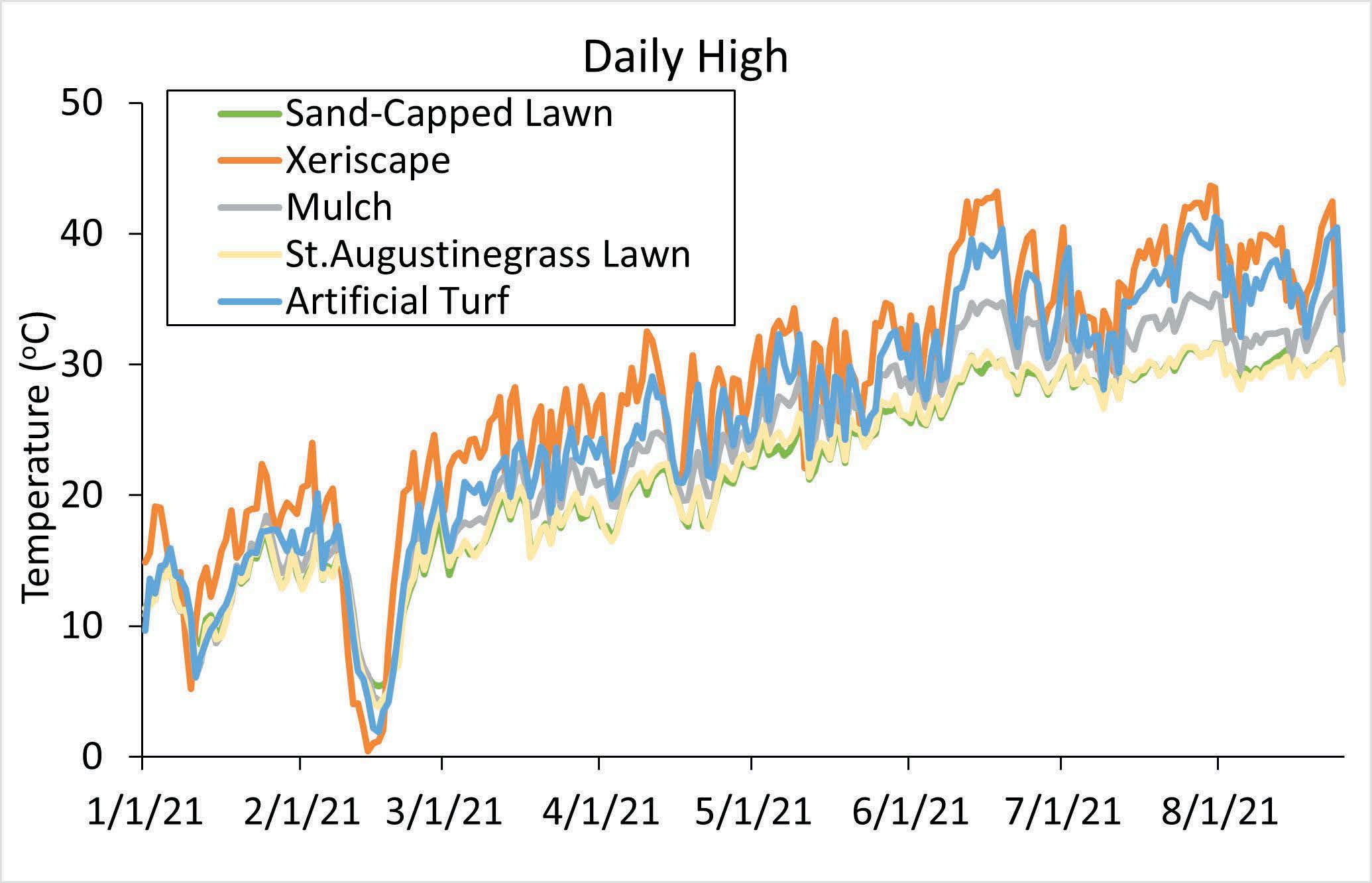
Figure 4. N2O flux of each landscape type, measured prior to (7/28/21) and at one-day, seven-days, and 14days after the 8/2/21 fertilization and irrigation event. Measurement was conducted in the morning on each day. Error bars represent standard error.
Figure 5. Daily high subsurface (2 in. [5.08 cm.] soil depth) temperature of all landscapes in the Texas A&M Landscape Study.

23TPI Turf News September/October 2022
Recent research has shown that elevated soil nitrate levels may be a concern in the years following removal of turfgrass in landscape conversion plots. In order to better ascertain soil nitrogen levels in plots, soil samples (0-6 in. [0-15.24 cm.] depth) were collected from each plot on 10/19/21, with two cores removed from the center of each plot. Soil cores were divided into upper and lower depths and composited per plot for a single upper and lower sample.
The soil sampling approach taken should provide us an ability to monitor the subsurface nitrogen status of each landscape. It seems that the top layer of SC, Xeriscape, and AT are stable three years after the installation, as the depth of sand and granite used for those landscapes have not noticeably changed over time. The only plot onto which surface materials are annually topdressed are Mulch, which is reapplied at 1-in. (.454-kg.) depth annually due to mulch decomposition and vulnerability to water and wind erosion/runoff.
For soil nutrient dynamics, all soil samples have sent to the Texas A&M University soil testing lab for analysis. Requested testing parameters include NH4-N, NO4-N, and organic matter, and samples are still being analyzed. Results will be available in our final report. We are also planning to take soil samples one more time in October 2022.
Sod Strength Characteristics of 24 Fine fescue Cultivars (2021-23, $20,351)
Editor’s Note: This project has been delayed a year due to a field trial failure. Below is a recap of the research activity to date, along with an overview of what is planned as the project moves forward.
There is a clear desire for lower-input sod species, such as fine fescue (Festuca spp.) from consumers (Hugie et al., 2012; Yue et al., 2012). In addition, increasing concerns over the environmental impacts of soil erosion from industrial and infrastructure development are also expected to be rapidly increasing sources of demand for sod. However, despite the fact that many different turfgrass species exist, most sites today in the northern U.S. are planted as sod with the same varieties of Kentucky bluegrass (Poa pratensis), regardless of site management.
Recent genetic improvements in low-input turfgrass species now provide sod farms other options when selecting what to plant (Braun et al., 2020). Since the selection of turfgrasses (either low- or high-input) by sod farms ultimately impacts the level of input required by those receiving sod installations (homeowners), decisions made by sod farmers and landscape contractors can have a tremendous impact on the environment and efforts to manage turf sustainably.
Preliminary 2019-2020 data from collaborative research at Purdue University and University of Minnesota investigating low-input sod production funded by USDAAMS is showing some promising results with fine fescue sod production, especially with strong creeping red fescue (Festuca rubra ssp. rubra) because of its rhizome system.
Results from this USDA funded sod research also show us that there is much variability in horizontal spread between genotypes of strong creeping red fescue. This indicates there may be potential differences among cultivars within a fine fescue species or subspecies.
In addition, preliminary results from a The Lawn Institutefunded experiment in 2020 at Purdue University titled “Identification of Successful Nitrogen Fertilization Establishment Regimes for Fine Fescue Sod Production” is showing that strong creeping red fescue is producing the highest sod strength, slender creeping red fescue (F. rubra ssp. littoralis) is the next highest, and then Chewings fescue, and hard fescue (Festuca brevipila) is the lowest sod strength among fine fescues. Preliminary results from this experiment are also demonstrating that plant genetics and not nitrogen fertilization has the greatest impact on sod strength.
Overall, the preliminary results from these previous experiments consistently show there are differences in sod strength among the fine fescue taxa (i.e., species and subspecies). New release of fine fescue cultivars, as well as variable cultivar performance in differing environments (NTEP, 2014, 2018), necessitates further sod strength research to continue to provide more information and options for sod producers. Therefore, the objective of this experiment is to identify the best performing cultivars of fine fescues for sod production.
As originally scheduled, this field experiment was to be planted in early September 2021 and again in September 2022 with harvests to occur the following year. The experiment will include 24 cultivar treatments arranged in a randomized, complete-block design with four blocks. All plots will receive the same rate of starter fertilizer at planting and the same annual Nitrogen (N) rate of 2.5 lb. N/1000 sq ft. (1.134 kg. N/92.903 sq. m.) per year. The cultivars in the study include nine varieties of Strong creeping red fescue, six varieties of Slender creeping red fescue, five varieties of Chewings fescue, and four varieties of Hard fescue.
Sod harvests will occur at 9, 11, and 14 months after planting (MAP). These sod harvest timings were selected based on preliminary sod harvest data timings from lowinput sod production experiments, which include various fine fescues and other cool-season turfgrass species at Purdue University at 11, 12, and 14 MAP funded by USDA-AMS. Data collection at each sod harvest timing will include measurements of sod tensile strength
24 TPI Turf News September/October 2022
(maximum tensile load and work required to tear sod) per the methods of Friell et al. (2017) and a categorical characterization of sod handling per methods of Gopinath et al. (2015), as well as turf quality and soil moisture. Purdue has a tensile strength device that we are currently using to conduct other research funded by USDA-AMS.
Results from this experiment will be incorporated into an extension publication on sod production, showcased at our turf field day, and also discussed at a future TPI meeting. A write-up of the project results will be published in Turf News. Further, results will be distributed via social media (Twitter, Facebook, etc.) and be shared with peers through an open-access, refereed publication, and scientific presentations.
use—but also compare irrigation requirement of the lawn (including different turfgrass species) with the other elements of the landscape (trees, shrubs, perennials).
Six different “front yard” landscapes (each approximately 1600 square feet [148.645 square meters] in size; 800 square feet [74.322 square meters] of lawn, 800 square feet of mulched ornamentals) will be constructed. Each landscape will be identical in size but will differ from the others in turfgrass type (bluegrass, tall fescue, buffalograss), landscape plant species (trees, shrubs, perennials, groundcovers), or level of irrigation technology. Lawn area size will be identical in each “yard”—as will planting bed size.
Home landscapes—of which lawns often comprise 50 percent or more of total area—provide numerous aesthetic, economic, environmental, recreational, sociologic, and psychological benefits to individuals and society. However, not all landscapes are equal in the benefits they provide and poorly designed and/or maintained landscapes can negatively affect the environment and be expensive to maintain. While only approximately three percent of all Colorado water is used to maintain urban landscapes, green landscapes and their irrigation (especially the lawn/ turfgrass part of landscapes) are a constant target of antiturfgrass/green landscape groups—who lobby for lawn replacement and limitations on the size of lawn area in landscape codes. Further, lawns, parks, and golf courses are the first landscape areas targeted for water restrictions or irrigation bans during drought events.
There are numerous unintended consequences of restricting or banning lawn/landscape irrigation—of which these groups and governmental agencies are unaware (or refuse to consider) when implementing restrictions on turfgrass area, turfgrass species, and when instituting irrigation bans. Providing homeowners, government agencies, and anti-turfgrass/landscape groups with factual information on irrigation requirements of lawns and other parts of green landscapes can help them make better management decisions, and will better inform policymakers on the benefits of green landscapes and the relatively small amount of water needed to keep landscapes healthy. Unfortunately, information on total landscape water requirement is lacking in the western U.S.—especially measuring lawn water requirement separate from/and in contrast to the rest of the landscape (trees, perennials, shrubs). This project will document total landscape water
Each landscape will be irrigated independently of the others—according to plant species’ needs and to provide acceptable/desirable plant vigor and aesthetics. The lawns and ornamental beds in each landscape will be metered separately to allow comparisons within and between the individual yards. Wireless soil moisture sensors (developed by and manufactured at Colorado State University) will be distributed throughout the landscapes, having the potential to drive irrigation controllers for each landscape and their respective lawn and landscape components. Soil quality development over time under lawns and ornamental beds will be monitored using CO2 respiration/burst, soil amino-N, and aggregate stability.
Visitors will be encouraged to complete short surveys on preference for landscape type, enhanced understanding of the value of green landscapes and lawns, and knowledge gained during their visit to the gardens. Robotic mowing of the lawn areas will be demonstrated. Construction and maintenance costs of each landscape will be provided to visitors, along with plant lists.
An unusual—and perhaps controversial—aspect of this study is that one of the lawns will be synthetic. The goal of including a synthetic lawn in the study is to document the true costs of installing and maintaining a synthetic lawn, and to demonstrate that synthetic lawns do not provide the environmental benefits/services that natural lawns do, including the synthetic lawns’ excessive heating effects of landscapes and potential negative impacts on soil health beneath the synthetic surface—and to demonstrate that synthetic lawns require considerable care to maintain their quality.
25TPI Turf News September/October 2022
Irrigation Requirements and Consumer Preference for Six Diverse Landscapes in the Arid Western U.S. (2022-24, $9,450)
Investigating Environmental Implications of Reclaimed Water Use for Turfgrass Areas (2022-23, $19,780)
Growing populations and declining water resources have forced many communities to critically evaluate how water is being used in the urban sector, particularly because a large portion (~ ≥50 percent) is used for landscape irrigation, which is considered nonessential. Reclamation of municipal wastewater shows promise as a means to meet the continued demand and growing pressure on irrigation water resources. Unlike potable water reserves, quantities of reclaimed wastewater continue to increase due to population growth and provide a readily available source of irrigation. Consequently, irrigation of landscape with treated effluent water (also called reclaimed, reused, recycled, or wastewater) has become a common practice in response to the increasing awareness of potable water shortages.
Because raw effluent typically contains significant quantities of many essential plant nutrients, particularly nitrogen and phosphorus, its use to irrigate landscapes could reduce the need and reliance on commercial fertilizers. Thus, irrigating with effluent may provide plants with similar quantities of essential plant nutrients to those delivered via fertigation with a dilute concentration of fertilizer. Conversely, the additive effect of effluent water and fertilizer application may result in enhanced nutrient leaching.
Changing the water source will not only affect the grass itself but might also have an impact on plant-associated microbial communities. The microbiome of plants, which is pivotal to both key components of the fitness of plants, growth, and survival, is mostly shaped by nutrient availability and drastic changes in nutrient content in the water will most likely alter their structure and function. The importance of healthy microbiomes for turfgrass is starting to be recognized in the industry, although neither solid data on community structure nor metabolic functions of turf microbiomes have been well described in the scientific literature. Detailed molecular analyzes will compare and contrast microbial communities before and after treatments.
The field study site was established using fresh water. Six irrigation zones of 20 ft. by 20 ft. (6.096 m.) were constructed on native soil in January 2021. ‘CitraBlue’ St. Augustinegrass was sodded on February 8, 2021. Within the irrigation plots, subplots consist of two N fertilization plots. Suction lysimeters were installed in December 2021, and half the area was switched to reclaimed irrigation in the Spring of 2022. Plots are mowed three times per week at 3 inch (7.62 cm.) and watered daily based on previous week evapotranspiration (ET). Nitrogen rates include low and high rates for St. Augustinegrass fertilization.
Plot Preparation—Trenching for installation—View one
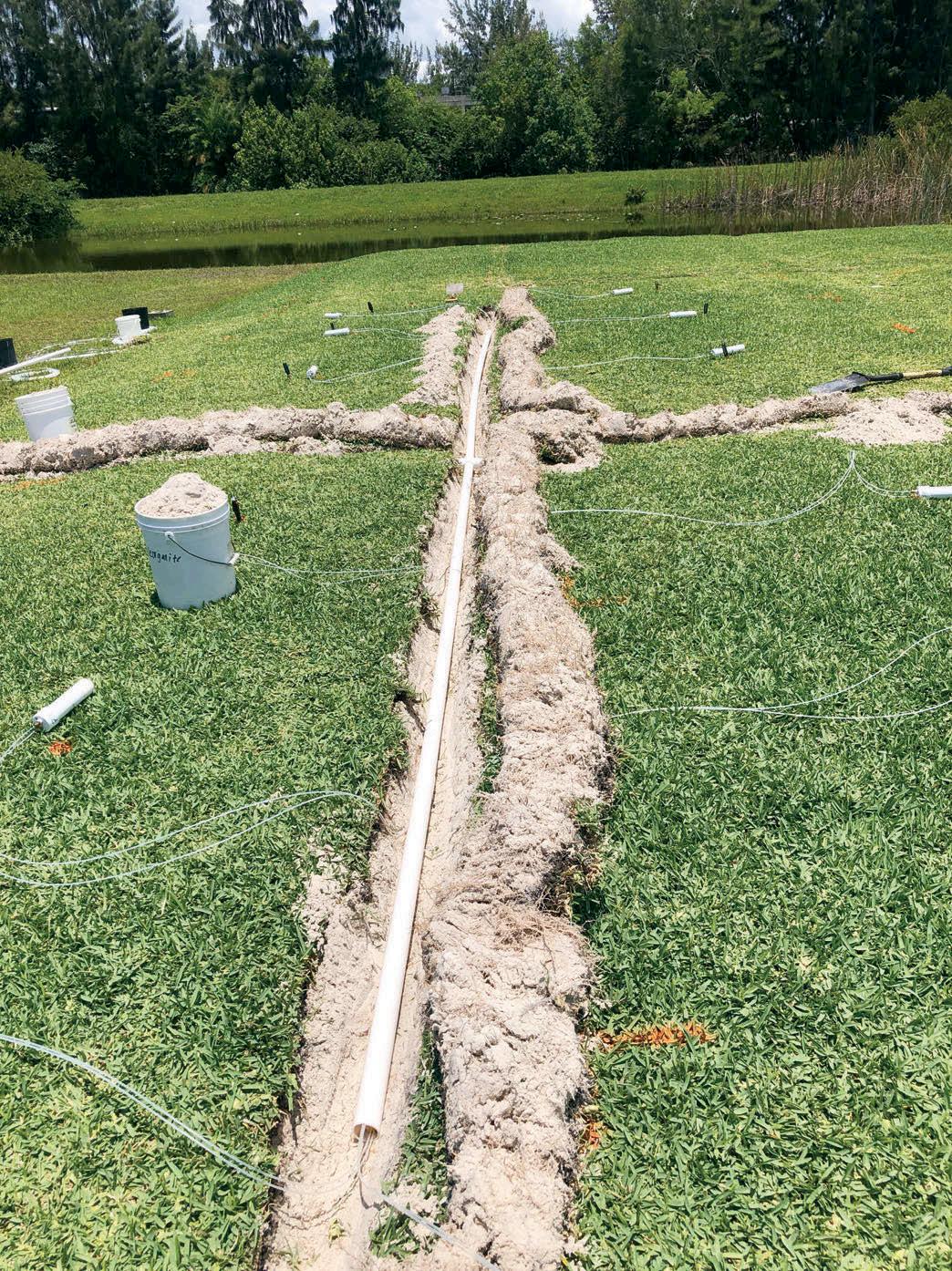
Plots will be evaluated every two weeks for visual turf quality (1-9 scale), volumetric soil water content (VWC) using time domain reflectometry (TDR), Normalized Difference Vegetation Index (NDVI), and percentage green coverage and dark green color index using digital image analysis. Leachate samples will be collected biweekly by removing all leachate by vacuum extraction for volume determination, and a 20-mL subsample will be analyzed for nitrate (NO3-N) and ammonium (NH4-N) and ortho P concentrations using a continuous segmented flow analyzer (SEAL Analytical, Mequon, WI) at the University of Florida FLREC chemistry laboratory. Tissue samples will be collected monthly to determine growth rate and N content.

26 TPI Turf News September/October 2022
Plots are ready for research
Rhizosphere samples for microbial community analyzes will be collected seasonally from individual plots with a standard 1-inch (2.54-cm.) corer. In this part of the project, researchers will analyze potential changes in microbial structure and function of the microbiome of turfgrass and general soil microbes as a response to treatment with effluent water. Results will help define “healthy” turfgrass microbiomes (when analyzed with fresh water), and identify changes associated with the use of impaired water sources over time.
Potential benefits include enhanced use of wastewater and development of Best Management Practices (BMP) for homeowners and landscapers when reclaimed water is used to irrigate turfgrass, and ultimately decreasing fertilizer use. Studying turfgrass microbiome will lead to a deeper understanding of soil-water-crop dynamics and can lead to better acceptance of turfgrass as a ‘healthy’ environmentally friendly crop, where microorganisms are alive and active and could interact with the surrounding environment. Moreover, better understanding of bacteria and fungi and their function on the soil and their interactions with the host could potentially lead to development of biocontrol treatments.
Stress Response Characteristics Facilitated by Endophytes in Commercially Available Perennial Ryegrass, Tall Fescue, and Fine Fescue Cultivars in Oregon (2022-23, $20,000)
Endophytes are natural fungal symbionts of many important turfgrass species, including perennial ryegrass, tall fescue, and fine fescues. Endophytes provide several benefits to turfgrass, such as mediated disease resistance, drought tolerance, and insect predation tolerance. However, a current, comprehensive record of endophyte presence in commercially available cool-season turfgrass cultivars is not available.
Endophyte persistence from seed to established turfgrass can be difficult. Endophytes will often perish during the process of seed harvest, storage, distribution, and plant establishment. Turfgrass stress and environmental conditions once the plants are established can also diminish endophyte populations. An assessment of endophyte after turfgrass establishment would be useful to show which variety-endophyte combinations are most viable and easy to maintain.
Finally, comparing endophyte status and populations to available turfgrass data (germination/establishment rates, color, quality, drought tolerance and traffic tolerance) collected from a large number of commercially available turfgrass cultivars also would be advantageous in determining which endophytes can be used to improve turfgrass management.
Objectives
The objectives of this project are to
1) Identify endophyte presence and type in large scale fine fescue, tall fescue, and perennial ryegrass cultivar studies at Oregon State University, Corvallis, Oregon, and
2) Correlate endophyte presence with response variables (establishment, visual quality, visual color, drought tolerance, and traffic tolerance) collected from these cultivar studies.
This will be done by exploring endophytes present in 25 fine fescue cultivars in the 2022 Alliance for Low Input Sustainable Turfgrass (A-LIST) Fine Fescue trial. Fine fescue quality and drought tolerance will be compared to endophyte presence and type for this study.

Researchers also will explore endophytes in the 2016 NTEP Perennial Ryegrass Trial in Corvallis, OR. For this portion
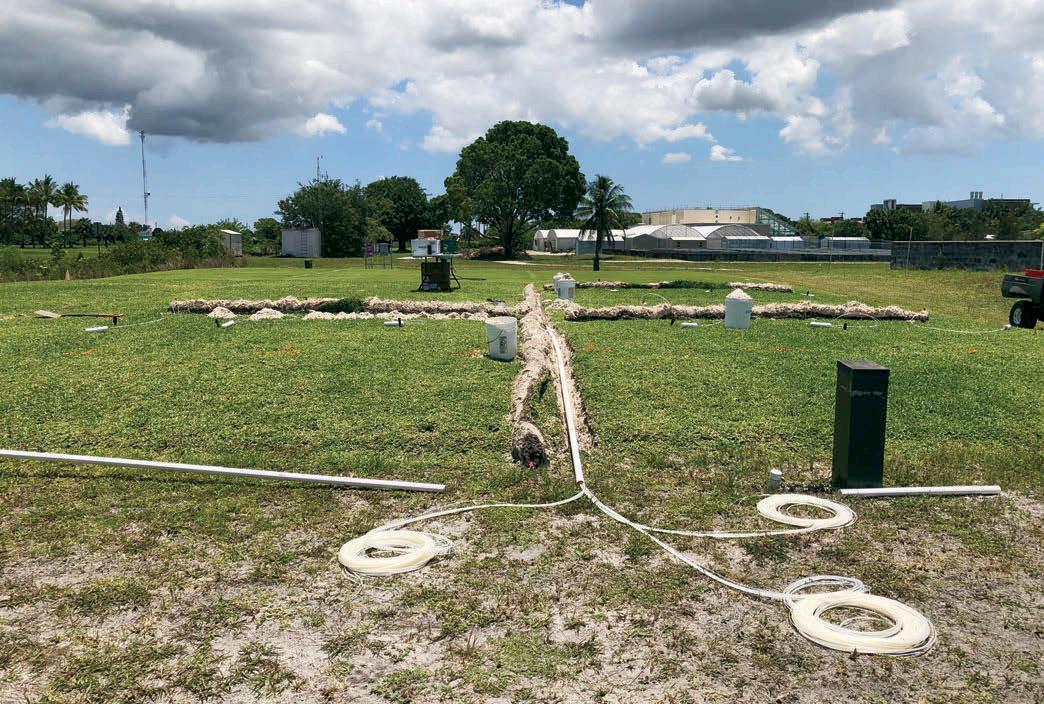
27TPI Turf News September/October 2022
Plot Preparation—Trenching for installation—View two
of the project, researchers will be evaluating the endophyte population for the 50 commercially available perennial ryegrass cultivars in the study. Tiller field samples will be collected for each plot for endophyte analysis. Establishment, monthly color, monthly quality, and traffic tolerance will be compared to endophyte presence and type for this study.
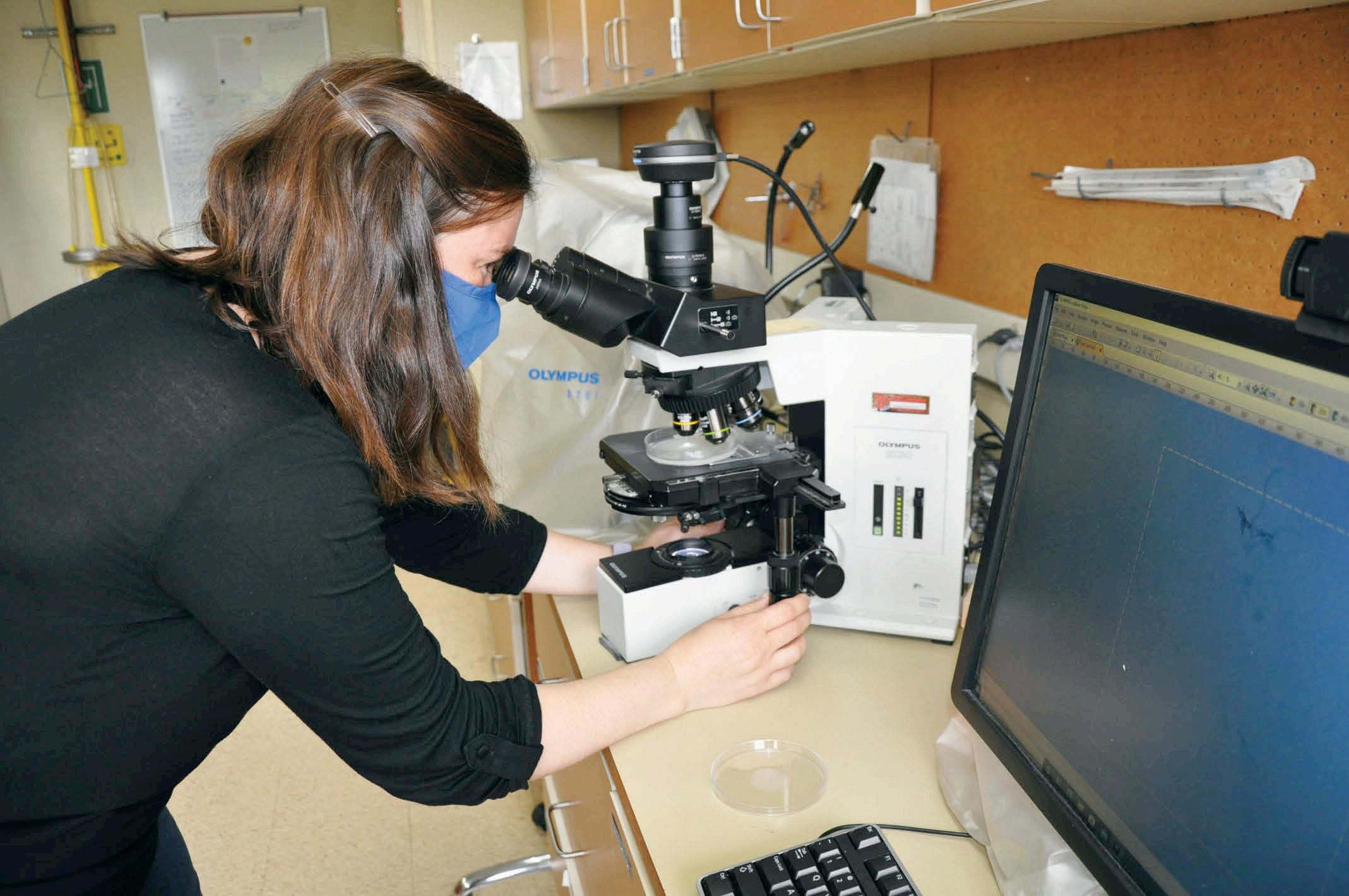
In the fall of 2023, endophyte exploration will occur in the 2018 NTEP Tall Fescue trials located in Corvallis, OR, which includes 42 commercially available cultivars. Tiller field samples will be collected for each plot for endophyte analysis. Establishment, monthly color, monthly quality, and cold tolerance will be compared to endophyte presence and type for this study. Polymerase Chain Reaction (PCR) will be used for evaluation of endophyte status and type.
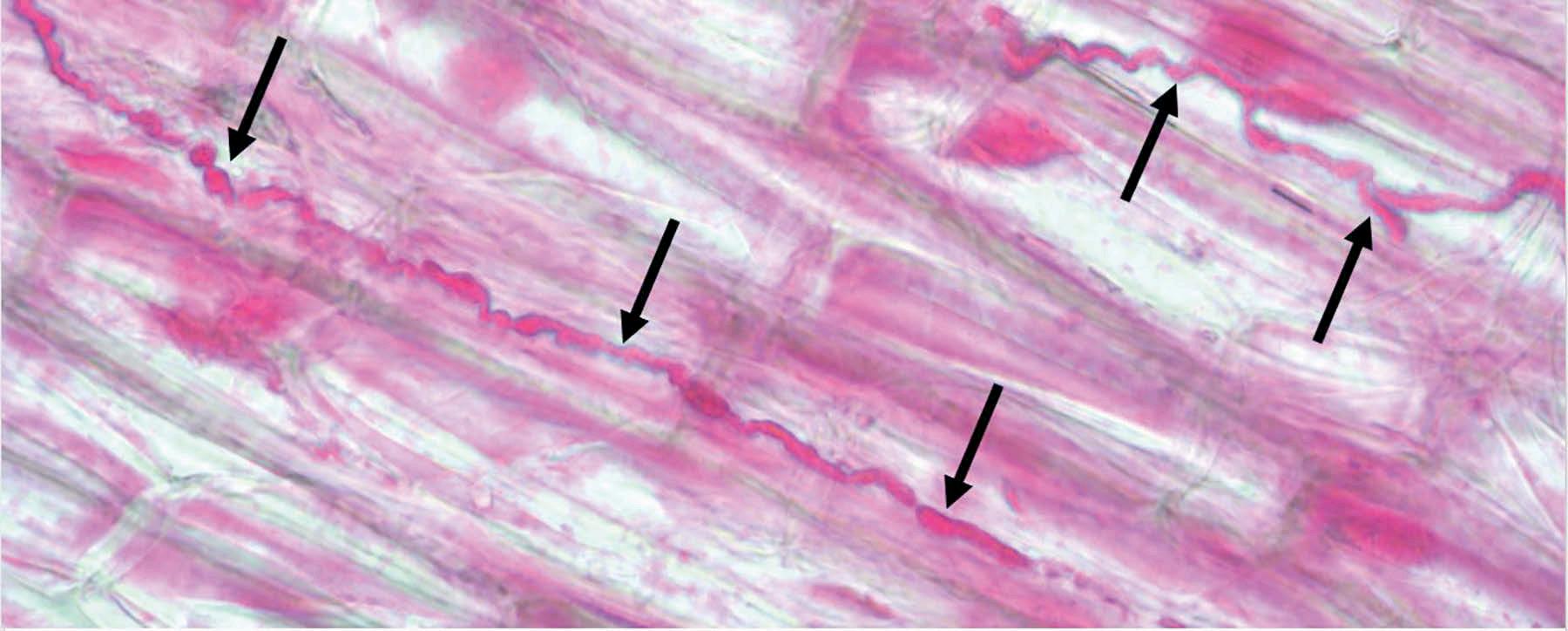
28 TPI Turf News September/October 2022
Image 1: Dr. Hannah Rivedal at the USDA-ARS Laboratory in Corvallis OR seeks visual confirmation of endophyte presence (top). The black arrows point to Endophytes within turfgrass cells under microscope magnification, photo provided by Dr. Ruying Wang, OSU (bottom).
Potential Benefits and Deliverables
Findings from this project will identify endophyte populations within commercially available perennial ryegrass, tall fescue, and fine fescue species. Cultivars with endophyte populations observed at this time will be excellent choices for those planning to seed turfgrass with endophytes as the endophyte has survived seed harvest, storage, and distribution, and displayed persistence within the host plant after establishment. Findings from this study will also correlate endophyte presence and type with turfgrass establishment, color, quality, drought tolerance, and traffic tolerance.




29TPI Turf News September/October 2022
Image 2: The endophyte DNA extraction process being performed by Robert Starchvick at the USDA-ARS laboratory in Corvallis, OR. NTEP perennial ryegrass samples were collected from the OSU Lewis-Brown Horticulture Farm in Corvallis, OR.
Step 1 Step 2 Step 3 Step 4
USGA/NTEP National Water-Use Trial – Warm-Season Species (2018-21,
Trials
As discussed at previous TPI Lawn Institute Research Committee meetings, the United States Golf Association (USGA) budgeted considerable funding to conduct a national water use and drought tolerance trial, utilizing the National Turfgrass Evaluation Program (NTEP) as its evaluation organization. USGA funded the building of rainout shelters and irrigation infrastructure at several locations, and is working with NTEP in determining testing protocols, data collection methods, etc. Besides data collection on water use and drought resistance parameters, the goal of this effort is for the EPA WaterSense® program to adopt these (or similar methods) and to agree to certify the first plant species with the WaterSense label. USGA has become a WaterSense partner, and we have talked to the WaterSense staff about certifying grasses. EPA is very interested in the concept (they have never certified a plant or plants as water saving) as we have met with them to discuss collaborative efforts. However, EPA needs to see more about the methods and tests, as well as we believe,
some successful trials. Also, they will need our help in solving some legal requirements when certifying a product (could be unique for plants, however).
Thirty-two cool-season grasses of Kentucky bluegrass, tall fescue, and perennial ryegrass, were evaluated from 2017-2020 at ten locations across the U.S. Five locations utilized rain exclusion shelters in the wetter eastern and midwestern U.S., and five locations were established under three replacement ETo levels in drier western U. S. locations. This data, available on the NTEP website (https://www. ntep.org/csl.htm) showed some significant water use differences among species, and some entries, with the below adequate quality often seen under the most restricted ET o replacement levels.
The warm-season version of this trial was established in summer 2018 at ten trial locations (five rain exclusion shelter, five using ETo -based deficit irrigation). This trial consists of seventeen entries: eleven bermudagrasses, five zoysiagrasses, and two buffalograsses. Due to the pandemic, some data collection had to be suspended (due to restrictions on access or available labor). One university (Kentucky) even eliminated their turfgrass program during the pandemic, which meant only one year of data was collected from the site.

30 TPI Turf News September/October 2022
The Griffin, Georgia, warm-season site under the rainout shelter.
Warm-season
$30,000)
The cost to run each trial location is high, and only a portion of that is covered by USGA’s donation ($250,000). Therefore, we sincerely appreciate the support received from The Lawn Institute (TLI) for the initiation of this trial. Without your support, this trial would not be conducted.
WARM-SEASON TRIAL
Due to slow establishment of some entries, data collection did not initiate until 2020. Data was collected at eight sites in both 2020 and 2021. Data from 2020 is available at https://www.ntep.org/wsw.htm, with 2021 data available later this summer.
APPROACH 1
Rain exclusion shelter sites (Approach 1) rewatered plots when percent green cover reached 65 percent. Rain exclusion shelters are used to simulate 120-to-150-day drought periods in higher rainfall regions. Under the rain exclusion shelters, we measure the amount of water needed to maintain 65 percent green cover, rate turfgrass quality, as well as evaluate recovery from drought when irrigation is resumed. Irrigation amounts needed to maintain 65 percent green cover varied considerably among entries, and in some cases was more than double the best entry.
Due to facility and staff changes, two sites did not submit 2021 data. The eight remaining sites collected and submitted 2021 data, allowing us to make inferences about second-year performance of this trial. Approach 1 sites (Mississippi State, MS; Griffin, GA; Jay, FL; Stillwater, OK) collected data on percent green cover, carefully watered plots with less than 65 percent green, recorded watering of each plot, and then presented total water applied per entry.
At the Approach 1 site in Stillwater, OK, the amount of water needed to maintain at least 65 percent green cover over the drought period varied from 0 – 67.7 mm (0 – 2.6 inches). Bermuda entries ‘FB 1628’, ‘TifTuf TM’, and ‘Tifway’ did not require any water to maintain 65 percent green cover. Joining those bermudas in the top statistical grouping were ‘Stellar’ zoysia (8.3 mm) (.327 in.), ‘Tahoma 31’ bermuda (8.3 mm) (.327 in.), and ‘FAES 1306’ zoysia (16.7 mm) (.657 in.). More water was required to maintain 65 percent green cover at the Approach 1 site in Mississippi State, MS. The lowest water users were all either bermudagrasses: ‘Monaco’ (50.7 mm) (1.996 in.), ‘Tahoma 31’ (51.0 mm) (2.009 in.), ‘Rio’ (67.7 mm) (2.665 in.), ‘ASC 119’ (93.0 mm) (3.661 in.), and ‘ASC 118’ (135.7 mm) (5.343 in.), or buffalograsses: ‘Cody’ (118.3 mm) (4.657 in.)and ‘Prestige’ (135.7 mm) (5.343 in.), where the entry with the greatest water use needed 313.7 mm (12.3 inches).
At the Approach 1 sites in Griffin, GA, and Jay, FL, statistical significance was much smaller than at the Mississippi State and Stillwater locations. At the Griffin site, ‘TifTuf ’ required the least water (8.3 mm) (.327 in.) of all entries, followed by ‘Meyer’ zoysia (13.3 mm) (.524 in.) and ‘Tifway’ bermuda (25.3 mm) (.996 in.), two standard entries in this trial. However, at Griffin, no statistical differences were noted in water use among entries with total water used ranging from 8.3 – 71.0 mm (.327 – 2.795 in.) (LSD=77.8 mm) (3.063 in.).
At Jay, FL, bermudas ‘TifTuf ’, ‘FB 1628’, ‘OKC 1221’, ‘Rio’, and ‘Tahoma 31’, along with ‘Meyer’ zoysia did not require any water during the test period. Other entries requiring only one-half inch (12.7 mm) of water or less at Jay include ‘Monaco’ bermuda (4.3 mm) (.169 in.), ‘Stellar’ zoysia (8.3 mm) (.327 in.), and ‘FAES 1306’ zoysia (12.7 mm) (.5 in.). These entries and seven others are included the Jay, FL, top statistical group for water use in 2021.
APPROACH 2
The drier climate ETo-based sites evaluated performance at three deficit irrigation levels for 120 to 150 day (1721 weeks) periods. The exception is the Fort Lauderdale, FL, location which ran its evaluation for 33 weeks. Data recorded includes percent green cover over time, turfgrass quality, and recovery rate after complete replacement irrigation is initiated. The ETo-based locations allow us to determine the minimum level of deficit irrigation appropriate for, and thus the water savings from, each entry. It was determined that 60, 45 and 30 percent ETo replacement levels would be utilized for data collection. The Ft. Lauderdale site’s growing season is twelve months therefore their Approach 2 testing period is much longer than the others. As in 2020, the surprising result from 2021 was how well the entries performed even at the 30 percent ETo replacement. On most turf quality rating dates, all entries had scores at or above the minimum acceptable quality level of 6 under the 30 percent ETo. As a result, sixteen of the seventeen entries finished the season in the top statistical group. This is the second year we have seen the lowest ET o level producing adequate for turf quality in south Florida. The entries finishing with the highest overall turf quality include ‘TifTuf ’ (TQ=7.0), ‘FB 1628’ (6.9) and ‘Tifway’ (6.9).
31TPI Turf News September/October 2022
The Riverside, CA Approach 2 location, again in 2021 reported much different results from the subtropical Ft. Lauderdale site. Turf quality averages were below the minimum overall turf quality average of 6.0 under 30 percent ETo replacement. ‘TifTuf ‘, finishing with the highest overall quality at 5.2, posted an acceptable turf quality rating in five of the first eight weeks, the most of any entry. Over the twenty-week drought stress period, besides ‘TifTuf ’, ‘Dog Tuff’, ‘FB 1628’, ‘Tifway’, ‘Monaco’ and five others had statistically equal overall turf quality averages. At the 45 percent ETo replacement level at Riverside, ‘TifTuf’ (TQ=6.2) was the only entry to deliver acceptable turf quality averaged over all rating dates.
At the College Station, TX, and Las Cruces, NM, locations, the entries also performed surprisingly well under the 30 percent ETo level with several finishing at turf quality above 6.0. ‘TifTuf ’ bermuda and ‘Prestige’ buffalograss were the only entries in the top statistical group to maintain at least a 6.0 quality score on each rating date across the twenty-week trial period at College Station. Similarly, the Las Cruces, NM, 30 percent ETo level data showed five entries, ‘TifTuf ’, ‘FB 1628’, and ‘Tifway’ bermuda, and ‘FAES 1307’ and ‘Meyer’ zoysia, with a 6.0 or higher on each rating date. ‘FAES 1307’ and ‘TifTuf’ finished tied for highest overall turf quality (6.9) at Las Cruces. Warm-season water use and drought data can be found at https://www.ntep.org/wsw.htm
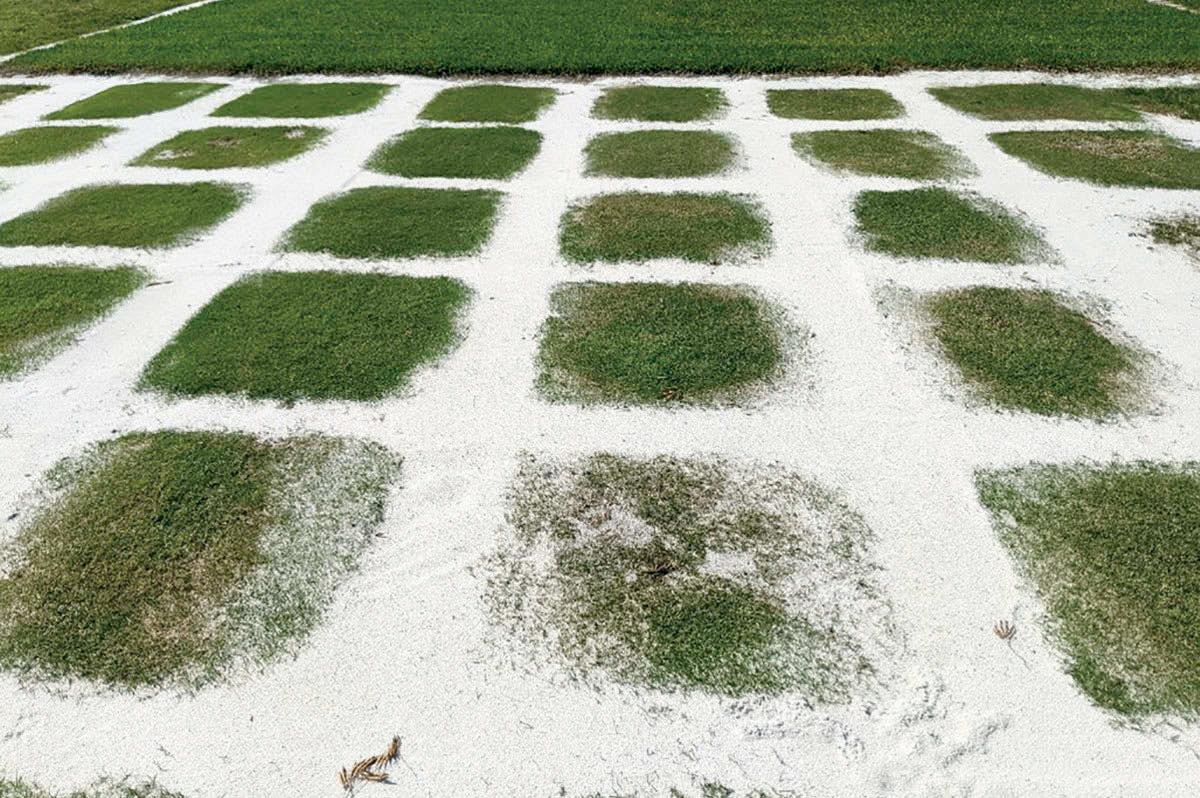
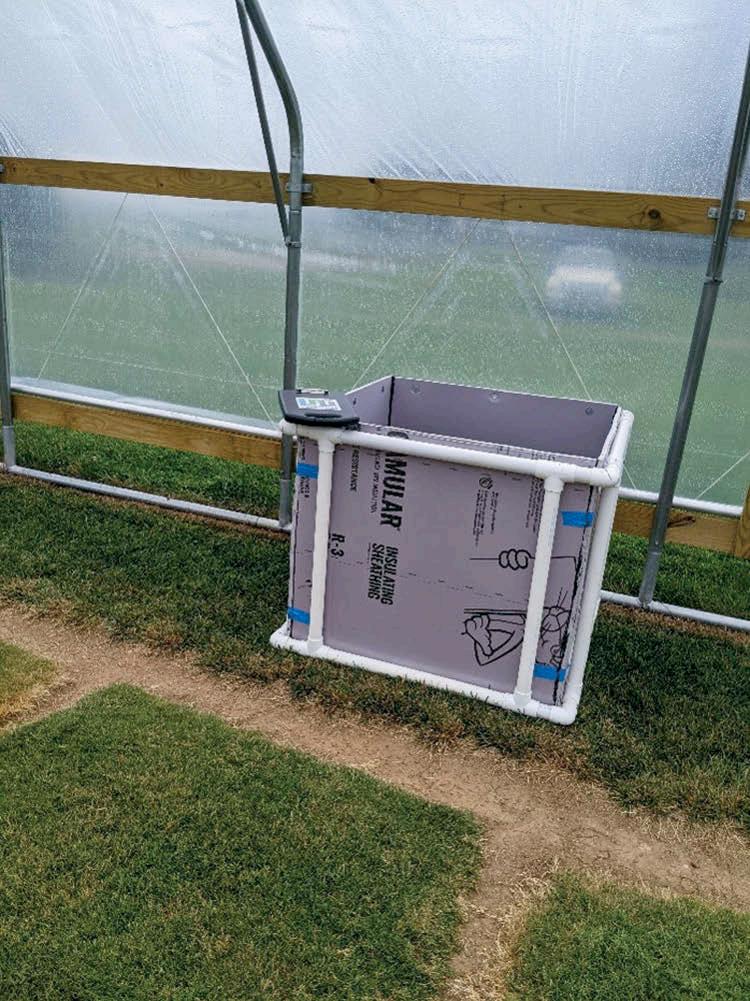
32 TPI Turf News September/October 2022
The “Irrigation” Box used to restrict water applications to only a one-meter square area in the middle of the plots.
Warm-Season Water Use Trial, Ft. Lauderdale, Fl, February 2022; 30 percent ETo replacement
Objectives and Deliverables
The objectives of this trial are the following:
1. Determine the 100-150-day, summer water use of coolseason and warm-season turfgrass species and cultivars. We now have three years of data from all ten cool-season sites, therefore that trial is complete. We have two years of data from the warm-season trial, collecting the final year of data in 2022. We have seen large differences among some entries, with overall greater statistical significance in the warm-season data as compared to the cool-season grass entries.
2. Determine turfgrass recovery of grasses after 30 days and 60 days without water.
Recovery has been measured, but as stated in question 1 above, not as much statistical significance with the coolseason grasses has been noted at some sites. The warmseason trial is providing much greater significance and excellent water use rates.
3. Determine the percent ET replacement required by each entry to maintain a prescribed level of green or quality.
Similar to question 1, for cool-season grasses, we have three years of data from all ten sites. One thing we can say is that all sites are not created equal, for example, the lowest (40 percent) and medium (60 percent) ET replacement did not deliver any acceptable entries at Riverside, CA, which means more breeding is needed for these grasses to be used with less water at an environment such as Riverside. At other sites, such as Las Cruces, NM, 60 percent ETo did show some entries with acceptable performance, probably because some summer rains occur there. The warm-season grass trial has delivered similar results, and in some cases surprising ones. The Ft. Lauderdale, FL, site has shown that the lowest ET o replacement level (30 percent) is often adequate for many warm-season grasses. This differs from the Riverside, CA, site where ETo level has a significant effect on performance.
4. Develop requirements for water use and drought tolerance/recovery to be certified as a low-water use turfgrass.
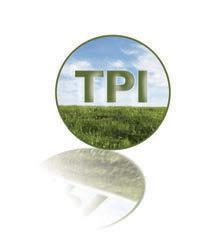
See answer to questions 1 and 3…we need three years of data to make determinations.
5. Work with U.S. EPA WaterSense or another organization to develop and apply a national water saving certification to qualified turfgrasses. We are in contact with the WaterSense office, but since EPA has been struggling with funding, it has been impossible for WaterSense to move forward with turfgrass certification. However, we did help and support Congressional authorization of WaterSense, which passed in 2020. Authorization helps protect the WaterSense program from elimination while also allowing EPA to request separate WaterSense funding in their budget requests (they have never had a separate budget line item for WaterSense, which has restricted the program’s growth). We feel that eventually, a WaterSense turfgrass certification program may be possible.
We are working now with the Metro North Georgia Water Planning District about a potential turfgrass water-conserving recommendation program for their region, based on NTEP data. This program, if implemented, could be a pilot program for a national WaterSense certification program.
As a follow-up to these trials, we have secured USGA funding for a new cool-season grass water use trial, to be planted at six locations in 2022. This trial will focus on bentgrasses, fineleaf fescues, and other species for fairway use, using similar approaches and with similar goals: that is to measure water needed to maintain a prescribed level of green cover, as well as performance under various replacement ETo levels.
Call for Research Proposals
The Lawn Institute will continue to release its annual Call for Research Proposals each August and work hard to fund research that is impactful to TPI members. If you have questions or comments about this process; or about specific research interests, please contact Dr. Casey Reynolds at creynolds@TurfGrassSod.org.
33TPI Turf News September/October 2022
Casey Reynolds, PhD, is executive director of Turfgrass Producers International.
All photos and graphics for this article have been supplied by the research team of the research project in which they appear.
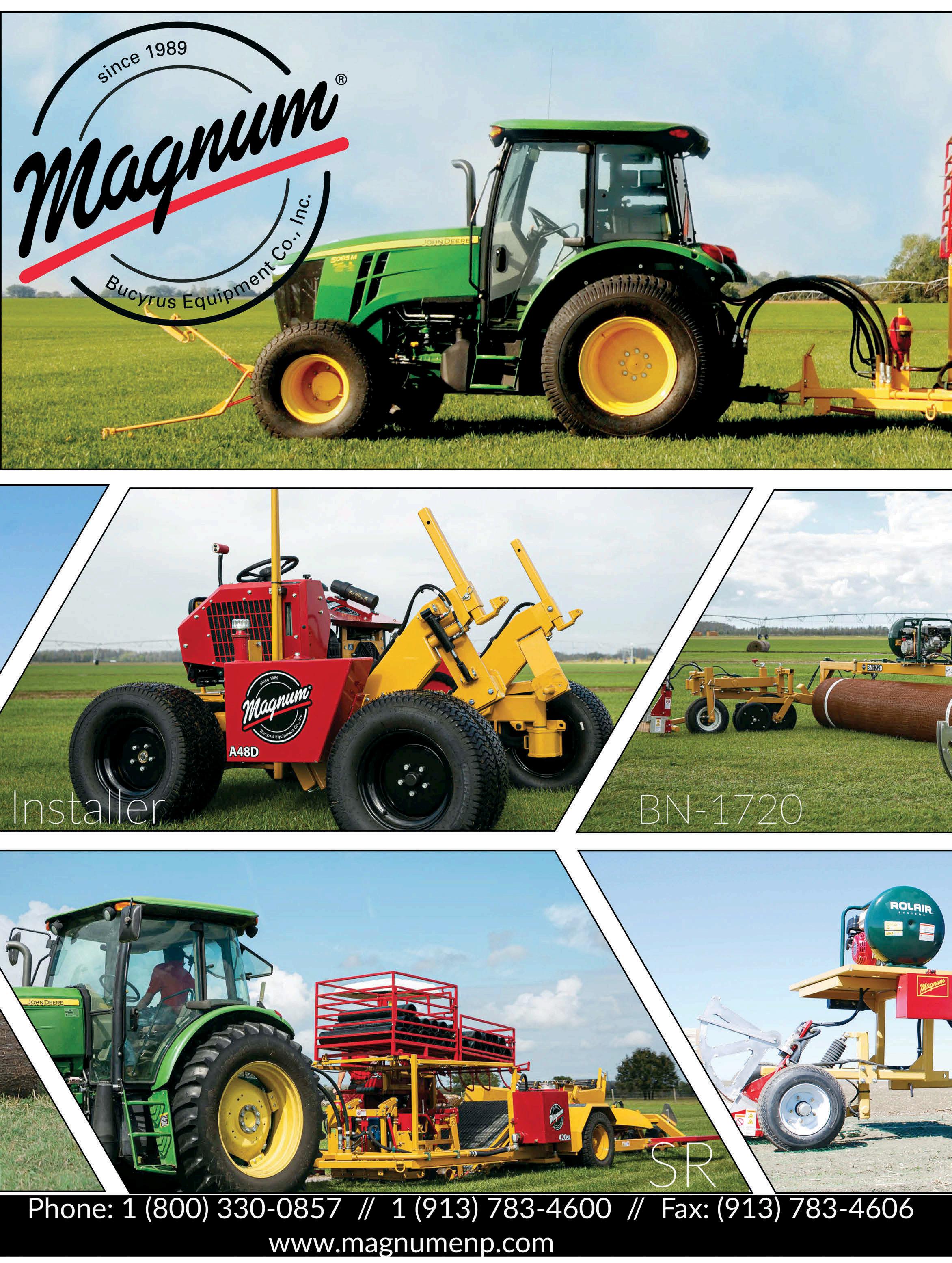

ROOTED IN RESEARCH
DATA DRIVEN GROWTH: MODELING FACTORS AFFECTING KENTUCKY BLUEGRASS AND TALL FESCUE LEAF AND ROOT GROWTH
 By Cale A. Bigelow, PhD
By Cale A. Bigelow, PhD
It’s time for another installment of “Rooted in Research,” where we take a deep dive into turf research you can use or at least gain an appreciation for the science behind the art of turf systems management. Increasingly turf managers are interested in using data to help implement management decisions. This is especially true with respect to timing cultural inputs to manage/promote shoot production or anything that might enhance root growth/health. For this article I pondered the question, “How do cool-season grasses grow?” and dug into the classic vinyl LP section of the turfgrass literature. In my search, I identified three experiments that studied key factors affecting tall fescue and Kentucky bluegrass leaf and root growth.
Question #1: How does temperature affect leaf growth of diverse populations of tall fescue? (Nelson et al., 1978). In this experiment the researchers k new that, in general, total above ground leaf biomass was controlled by the leaf growth rate and length of time and temperature with a previously reported temperature optimum of about 77 degrees F (25 degrees C). It was also reported that leaf growth responses were more affected by changes in daytime than nighttime temperatures. What was not well studied, however, was how much of a difference there was among plants collected from different geographic regions. From a practical standpoint, plants capable of producing a lot of biomass may require more frequent mowing. Alternatively, these might be just what an athletic field manager may desire because they might be more traffic tolerant. Further, if the plant grows more vigorously in cold or warm weather, this could be very desirable in certain situations.
So, researchers collected plants from Mediterranean, Continental Europe as well as some experimental lines including a selection from the transition zone (Missouri) of the USA. They subjected the plants to a range of temperatures (50, 59, 68, and 77 degrees F) (10, 15, 20, and 25 degrees C)
with a 16 hour daylength as well as a cooler temperature, 46 degrees F (7.78 degrees C), with an eight hour daylength. They then painstakingly measured “leaf elongation rates,” by watching for when collar formation occurred on select new leaves and measuring the distance from the collar to the leaf tip for various leaves as they emerged each and every day. This information was then mathematically manipulated to determine leaf elongation rates. Not surprisingly, what they found was that tall fescue leaf area, weight, and elongation rate were highest at 68 or 77 degrees F (20 or 25 degrees C) with a 16 hour daylength that steadily decreased with decreasing temperature. They also found that there were different responses to temperature among tall fescues from different geographic regions. The authors suggested that these differences may be useful when breeding tall fescues for use in different climates. For example, if you planned to plant tall fescue in a warm-humid/transition zone and need vigorous growth in late-spring or summer, cultivars developed from plants native to a warmer region may be more appropriate.
Question #2. Can Kentucky bluegrass root growth be predicted by using a degree-day accumulation technique? Researchers in Central Ohio (Koski et al., 1988) were interested in how soil temperature changes from January to June affected spring root growth. Prior work reported that 60-70 percent of the bluegrass plant’s total seasonal root growth occurred during those months. For this study, they were interested in how much rising spring soil temperatures affected root growth. The field experiment was conducted in the Ohio State University Rhizotron facility.

36 TPI Turf News September/October 2022
Figure 1. Overview of generalized cool-season seasonal shoot and root growth.
Figure 2. Diagram of the rhizotron experimental laboratory from: Karnok and Kucharski “Design and construction of a rhizotronlysimeter facility at The Ohio State University.”
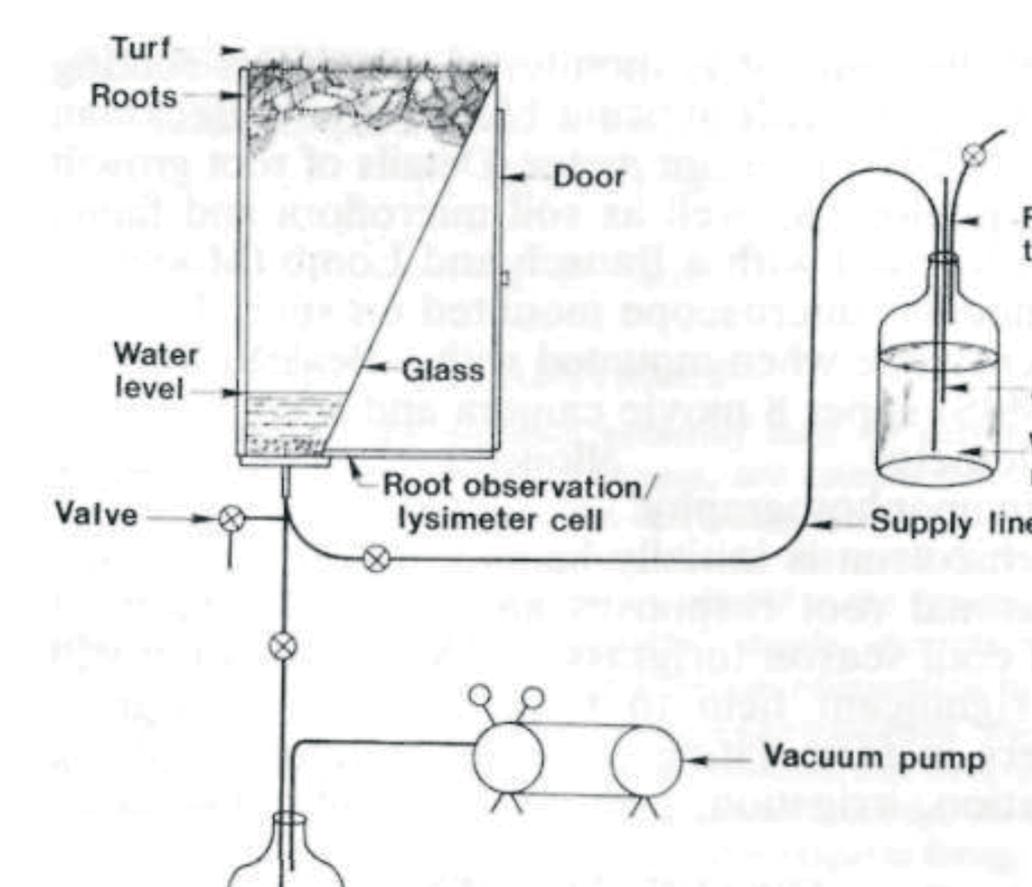
You might ask, what the heck is a Rhizotron? Briefly, a rhizotron is a below-ground laboratory facility that allows for the ability to continuously observe roots and factors affecting root growth without destroying the plant and under a field environment setting. Grasses are planted in small cells containing a consistent rootzone media, often a porous sandy media. In the below ground laboratory, each cell has a small door to exclude light and the door opens to a slanted glass root observation window. As roots grow down, they encounter and imprint themselves on the glass, allowing researchers to observe and measure characteristics of interest like root number, appearance/disappearance, length, and diameter. Using the Rhizotron, researchers can manipulate above ground cultural inputs like mowing height and fertility, or study below ground factors like rootzone temperature.
In the present study, researchers monitored the effect of soil temperature at 4 inches (10.16 cm), for three winter-spring seasons on ‘Baron’ Kentucky bluegrass. The intent was to develop a mathematical model to predict how roots might change based on temperature. They found that 15 percent of root production occurred from January to March, 40 to 45 percent during April and May, and the remaining 40 percent in June, with a high correlation (95 percent) of root growth to rising spring soil temperatures. Based on their model, they suggested that monitoring soil temperature could be used to optimize cultural input timings like water or nutrient applications to enhance use and uptake efficiency.
Question #3. Can tall fescue leaf appearance be modeled based on environmental data? In this experiment (McCarty et al., 1991) researchers wanted to develop a mathematical model to help determine and predict leaf appearance/growth; building on the research
conducted in question #1 (Nelson et al., 1978). These scientists wanted to better understand how photoperiod, temperature, plant age, and duration of exposure might be affecting leaf growth. The researchers’ methods were the following: “plants were observed each day (between 0900 and 1000 hr), the youngest leaf tip was tagged by loosely placing a cloth string attached to a numbered clip at the base of the plant.” Following data collection, a mathematical regression model was developed that predicted (78 percent accuracy) daily leaf appearance using solar radiation, precipitation, soil moisture, maximum/minimum air temperature, and leaf age. They also measured soil temperature at 4 inches (10.16 cm) but found that data did not correlate well with leaf appearance. The authors surmised that this type of model could be used to identify rate limiting steps for leaf growth and/or to implement cultural practices that significantly influence leaf appearance.
What does it all mean?

First, not surprisingly, plant growth rates are strongly a ffected by temperature and increasing temperatures increased leaf and root growth, at least up to an optimal temperature threshold. BUT …there are substantial differences among species and cultivars. If you’ve heard me talk about advances in species and cultivar selection I often mention, “Better ingredients = better lawns.” Now more than ever it’s important to do your homework to select for optimal species/cultivar performance. Data, from cultivar/variety trials by organizations such as the National Turfgrass Evaluation Program (NTEP), for your specific region can be found online (www.ntep.org).
We are increasingly in an era of niche cultivars and breeders continue to develop and introduce superior cultivars for specific situations based on consumer desires. Secondly, these aforementioned studies helped provide a basis for the development of more data driven decision making tools to optimize turf health. Until next time, be well, be safe, and as autumn approaches, be sure to gently feed your cool-season turfgrasses. This will ensure a steady supply of nutrients to help build those all-important carbohydrate reserves.
References:

Nelson, C.J., K.J. Treharne and J.P. Cooper. 1978. Influence of temperature and leaf growth of diverse populations of tall fescue. Crop Sci. 18:217-220.
Koski, A.J., J.R. Street and T.K. Danneberger. 1988. Prediction of Kentucky bluegrass root growth using degree-day accumulation. Crop Sci. 28:848-850.
McCarty, L.B., J.R. Haun and L.C. Miller. 1991. Daily tall fescue leaf appearance rate in relation to environmental factors. HortSci. 26:114-117.
Cale Bigelow, PhD, is a professor of Turfgrass Science and Ecology in the Department of Horticulture and Landscape Architecture at Purdue University in Indiana. Mike Fidanza, PhD, is a professor of Plant and Soil Science at Pennsylvania State University, Berks Campus. They are teaming to provide a Rooted in Research article for each issue of Turf News
All graphics courtesy of Cale Bigelow, PhD.

37TPI Turf News September/October 2022
TPI GERMANY
 By Allie Shriver
By Allie Shriver


There's truly something magical about traveling to another country to immerse yourself in the culture and learn the history; TPI members were lucky to do just that with our most recent trip to Germany. With the help of European Turfgrass Producers (ETP) President and TPI Board Member Albrecht Knigge, we embarked on an excursion throughout the Lower Saxony region of Germany to visit local turfgrass producers and historical enterprises.

ETP Expo
Every two or three years, ETP gathers from across Europe for a large field day and networking. TPI was excited to bring this group to this year's event in Pattensen, Germany, at Albrecht's farm, Rasenland Pattensener. The group has finally arrived in Hanover, Germany, just in time to join the opening reception for ETP's Expo. Eager to start our journey, we descended on the hotel lobby with glee. We enjoyed dinner and drinks with fellow turfgrass producers and industry peers late into the evening.
Fighting heavy jetlag, the group woke early to enjoy breakfast together before heading to the farm for a day of heavy machine demos and comradery. We arrived as the gates opened to a gracious and welcoming ETP staff.

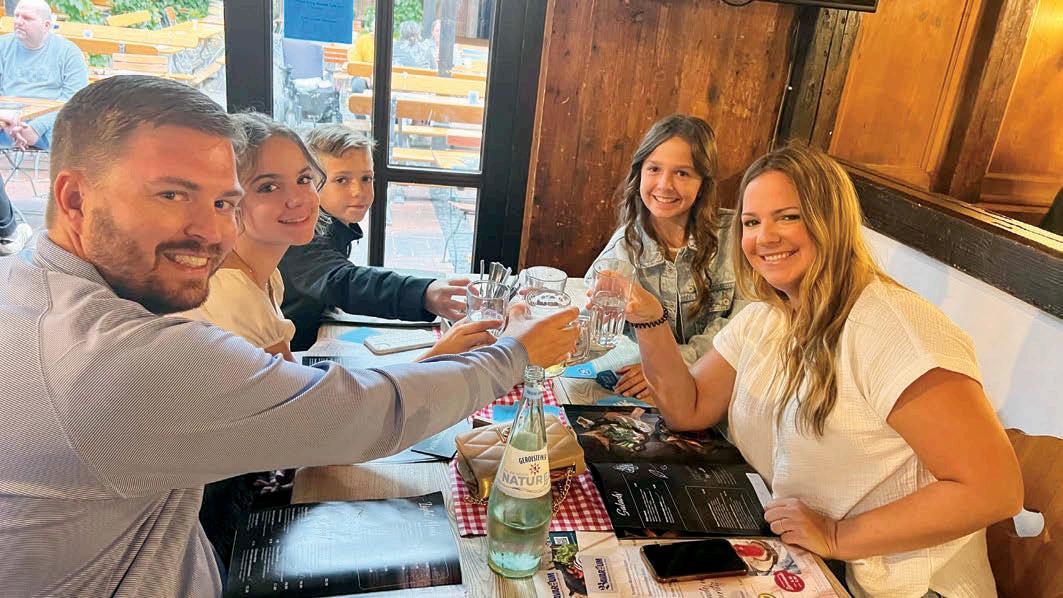
Many TPI members headed straight for the equipment outside the gates to kick some tires while the rest headed straight for the coffee. We wandered around a bit, getting the lay of the land before the equipment demonstrations began.
We stood in awe as we watched demos of new harvesters and mowers. The technology in Europe is incredible. We saw several TPI supplier members take the "stage" to show off the latest equipment they brought with them.
It was an excellent display and a great reminder that we could once again connect in person. Throughout the day, many TPI members connected with old friends and made new ones.
38 TPI Turf News September/October 2022
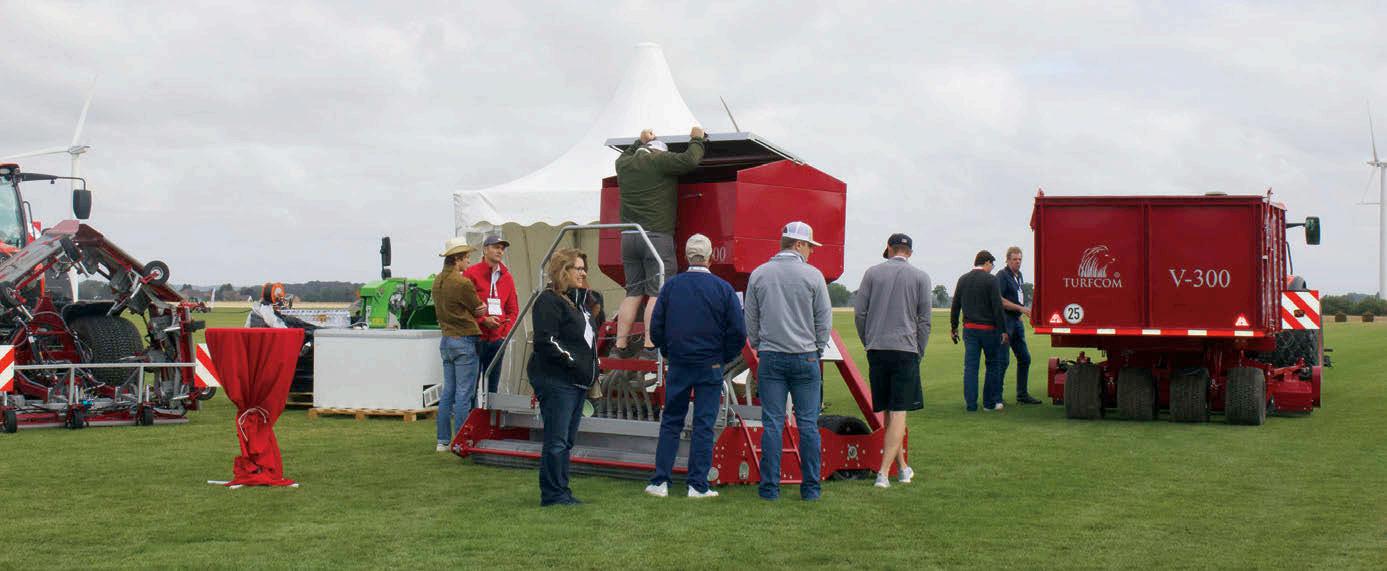

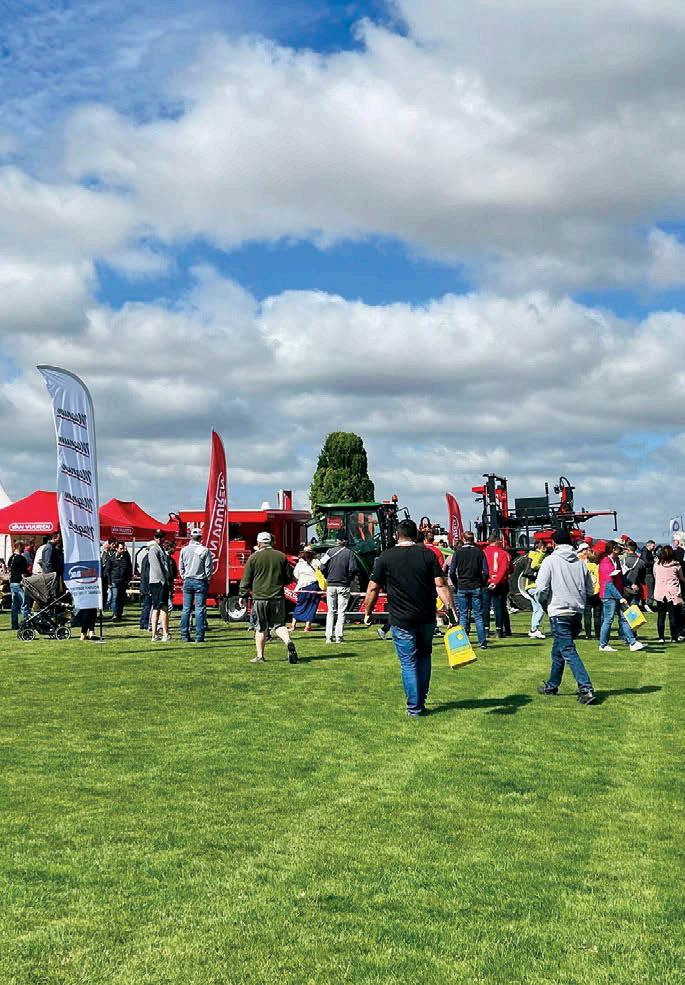
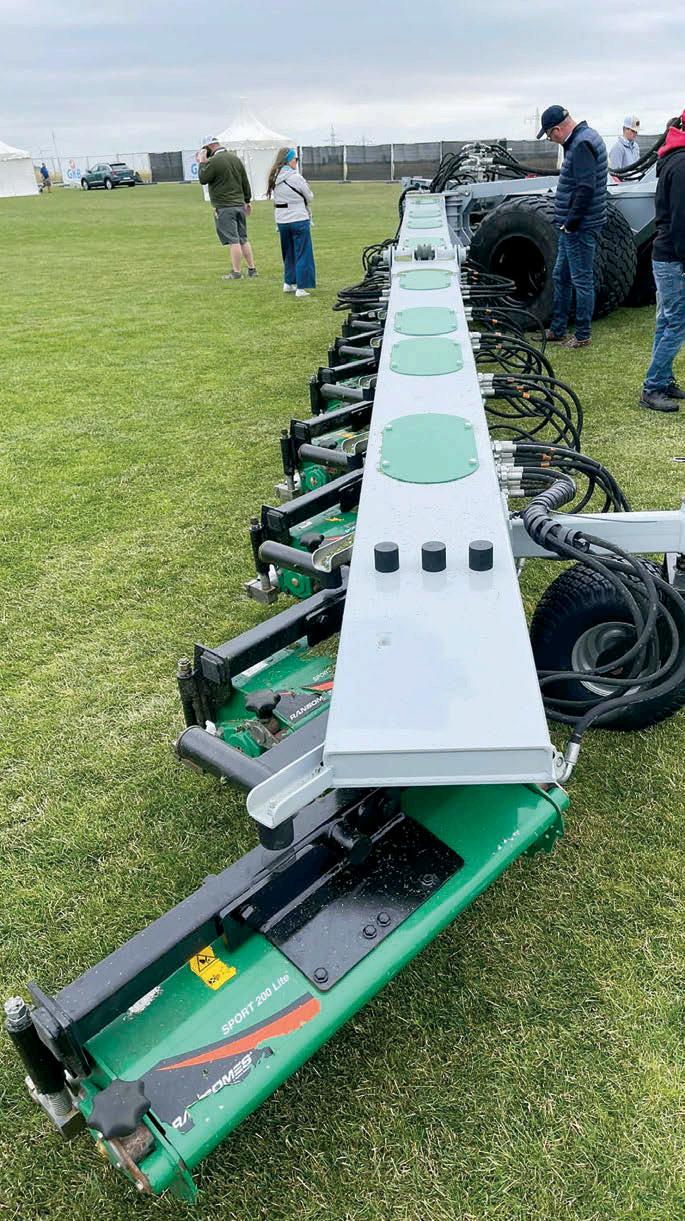

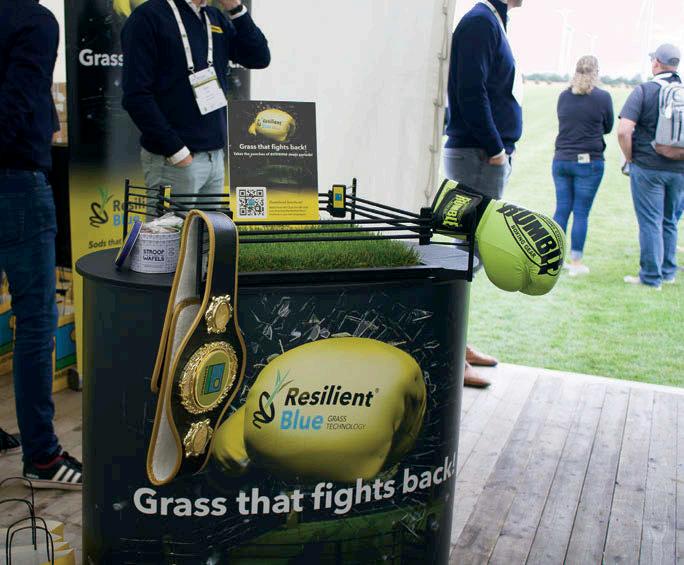
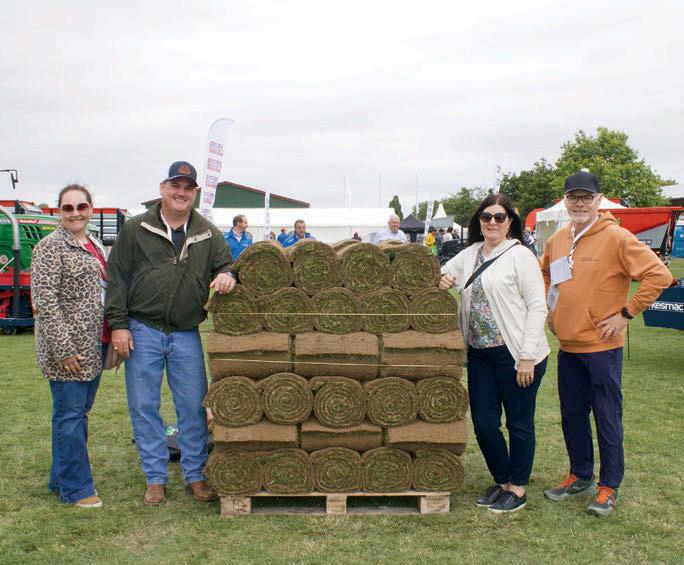

39TPI Turf News September/October 2022
Local Enterprise Visits

We had the pleasure of visiting four local enterprises in the Lower Saxony region—a castle, two farms, and a forestry operation. We were welcomed with open arms at each location and given a grand tour of all four operations. As we explored each site, one thing was abundantly clear; in Germany, the family is above all. Each owner expressed to us the importance of setting the next generations up for success in their current family ventures.
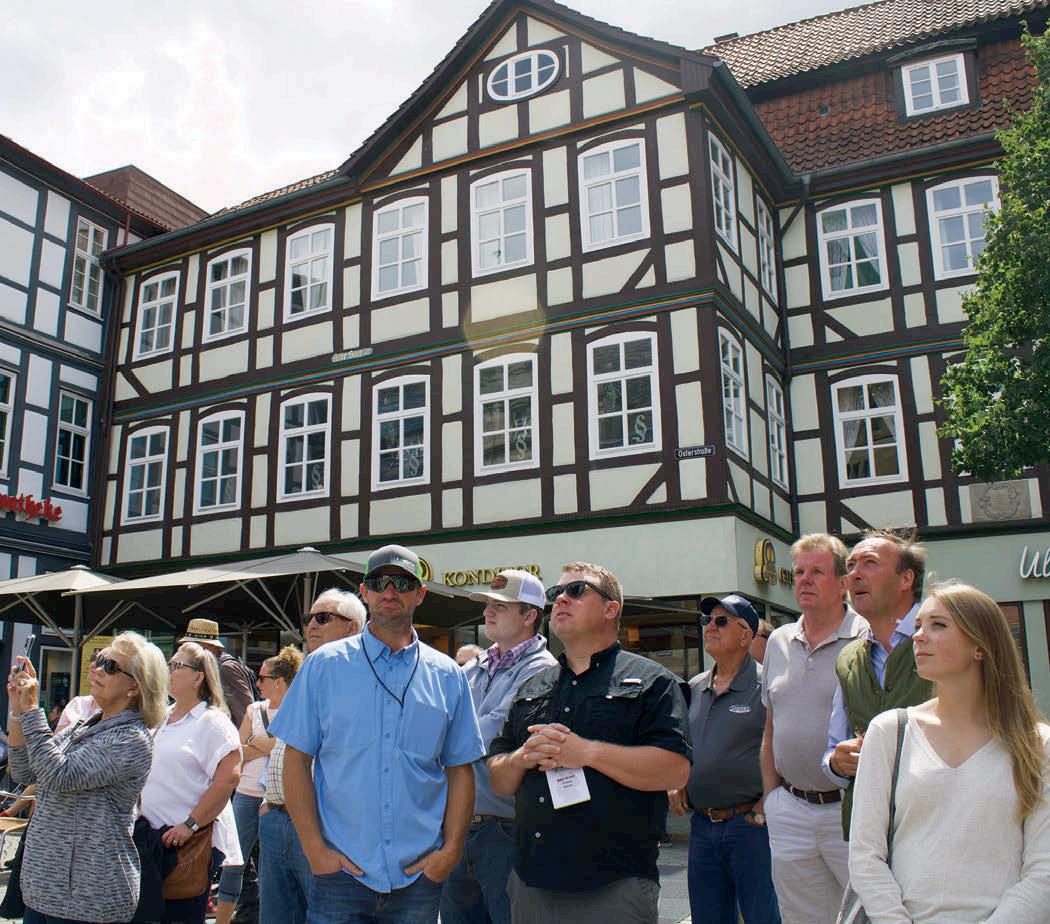
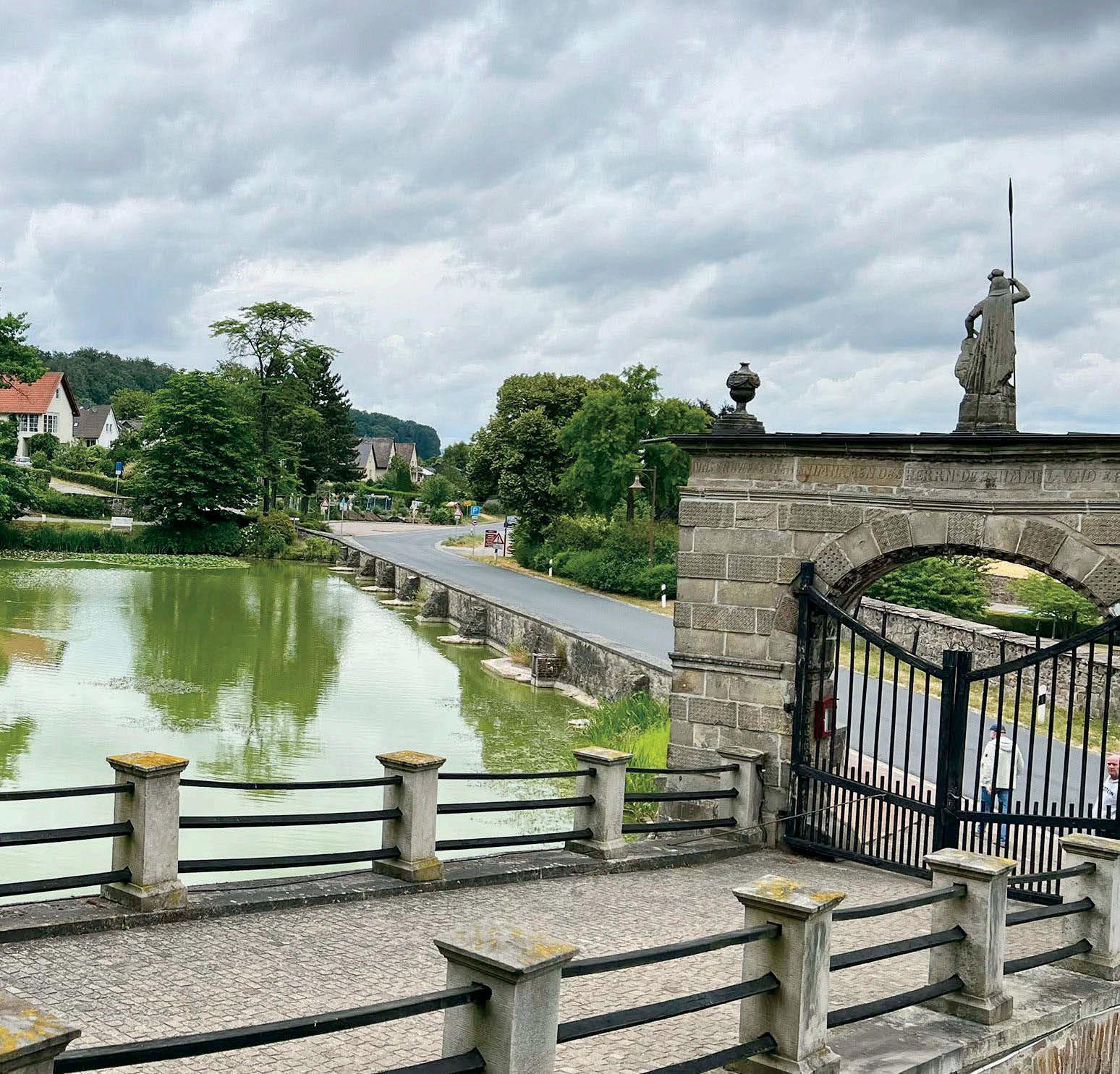
Schloss Hämelschenburg
We had the most beautiful tour of this family-owned castle. The Hämelschenburg manor has been owned by the von Klencke family since 1437. The castle was built about 150 years later and is wholly preserved today. Lucky for us, the current von Klencke, who owns the castle, asked his mother, an American, to give us a tour. We thoroughly enjoyed her knowledge of the property and of her husband's family.

40 TPI Turf News September/October 2022
BOFERA – Der Rollrasen
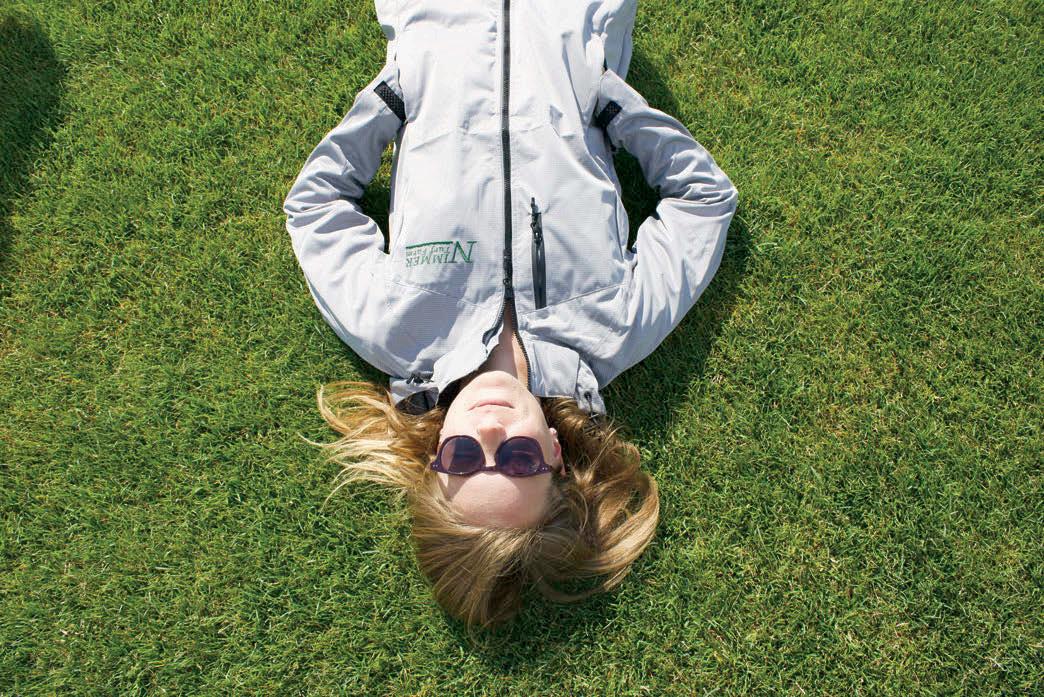
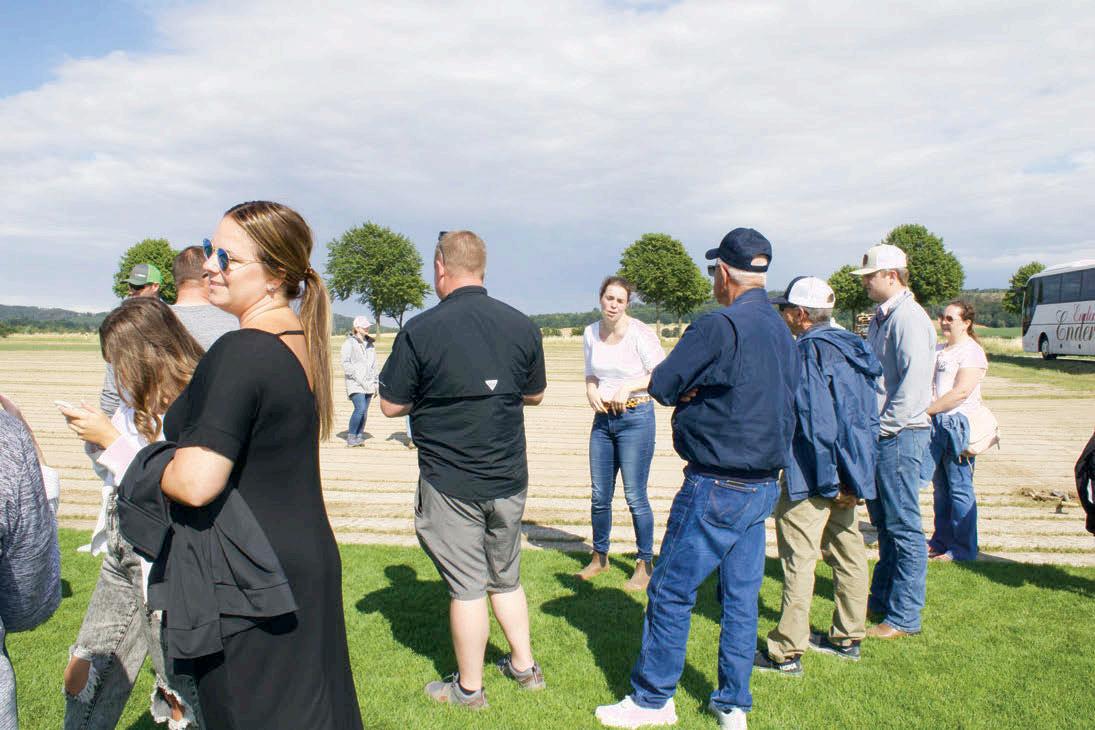
BOFERA's roots have been in agriculture for centuries. This family-run operation has specialized in the production of rolled turfgrass for over ten years. Based on the latest knowledge and with the latest special technology, they can produce turfgrass on clay. We had the opportunity to see their fields and test the clay they grow on. They also sell their seed and fertilizer to locals.

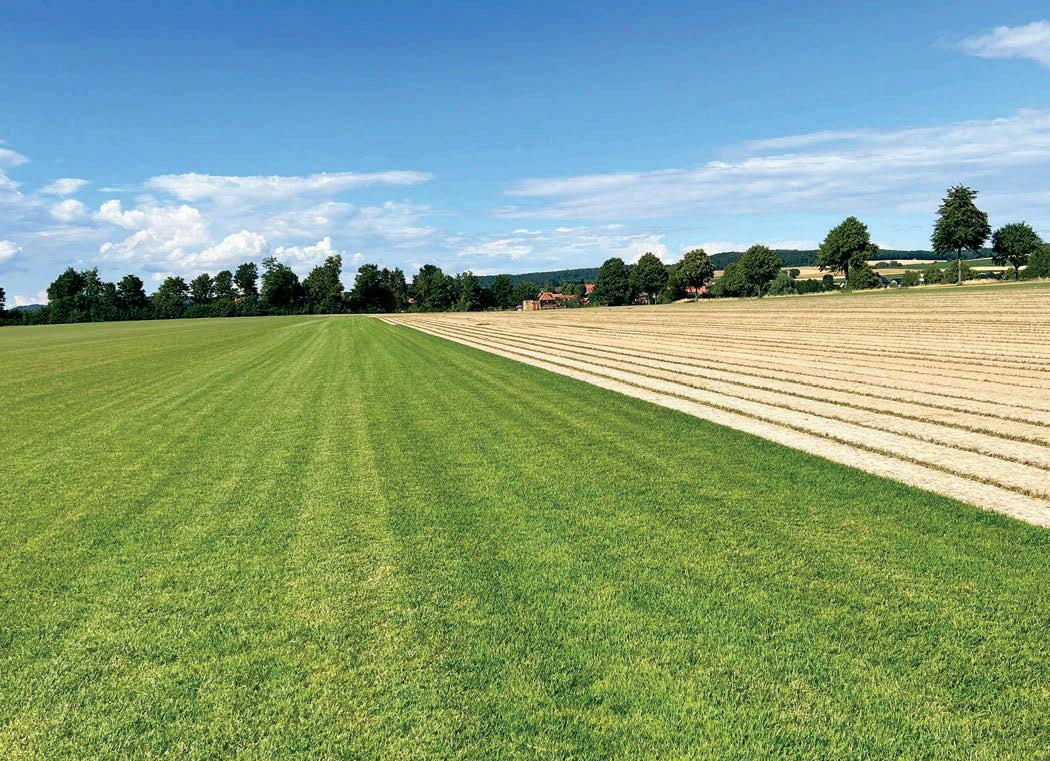
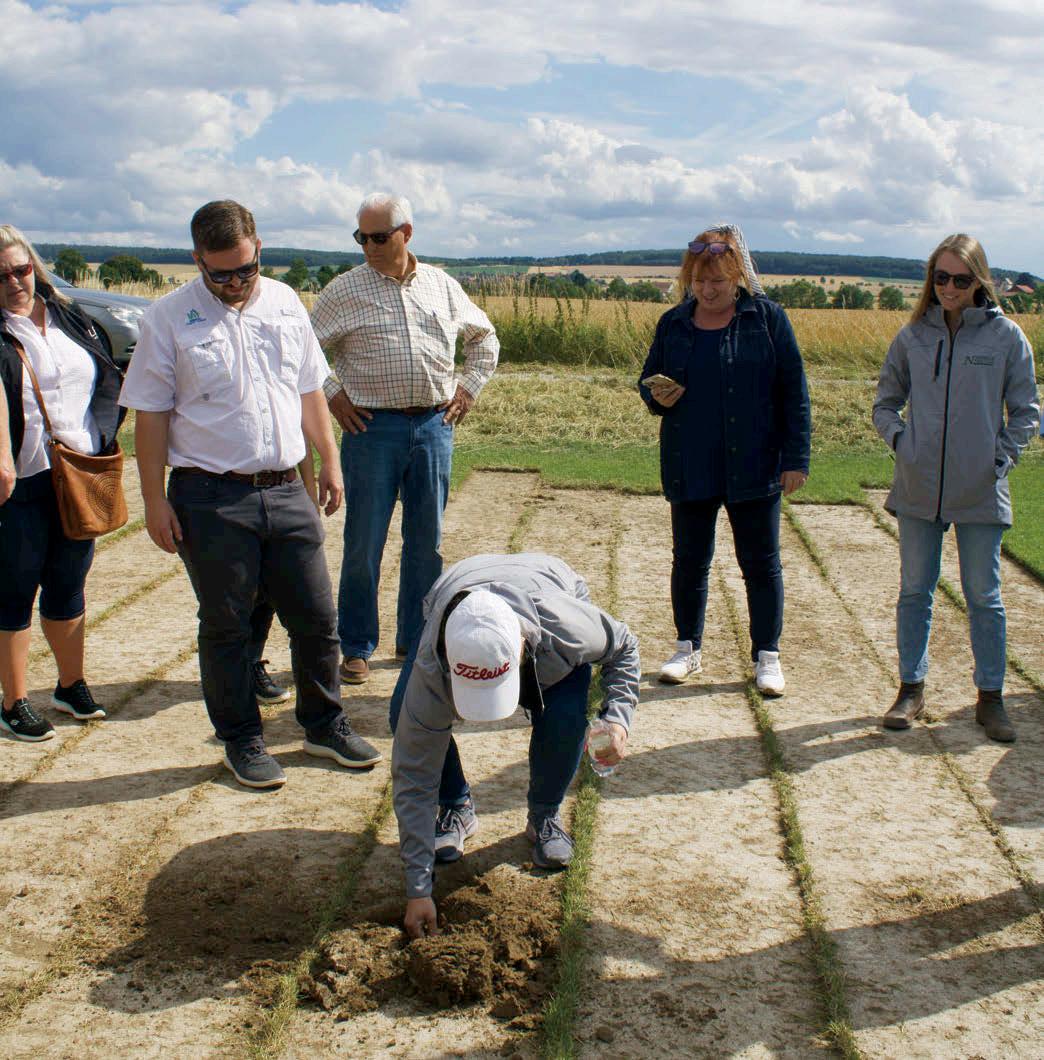


41TPI Turf News September/October 2022
Ruheforst and Knigge Family Farm

The Ruheforst is a new way to say goodbye to your loved ones. The Knigge family rents trees from their medieval forest as a final resting place for local citizens. Here you can share a tree with your family. This peaceful location is maintained to high standards for up to 99 years after ashes are buried at the base.
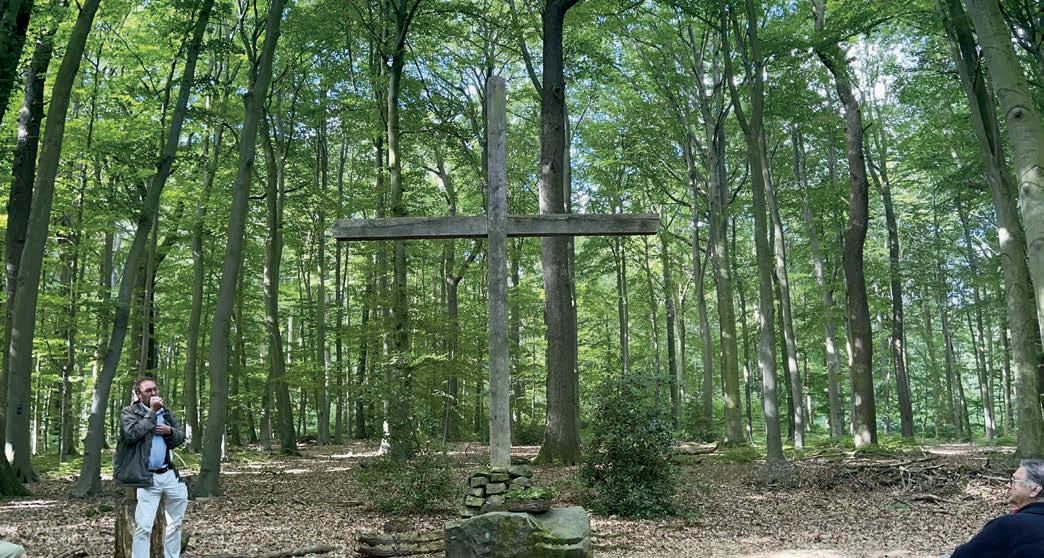
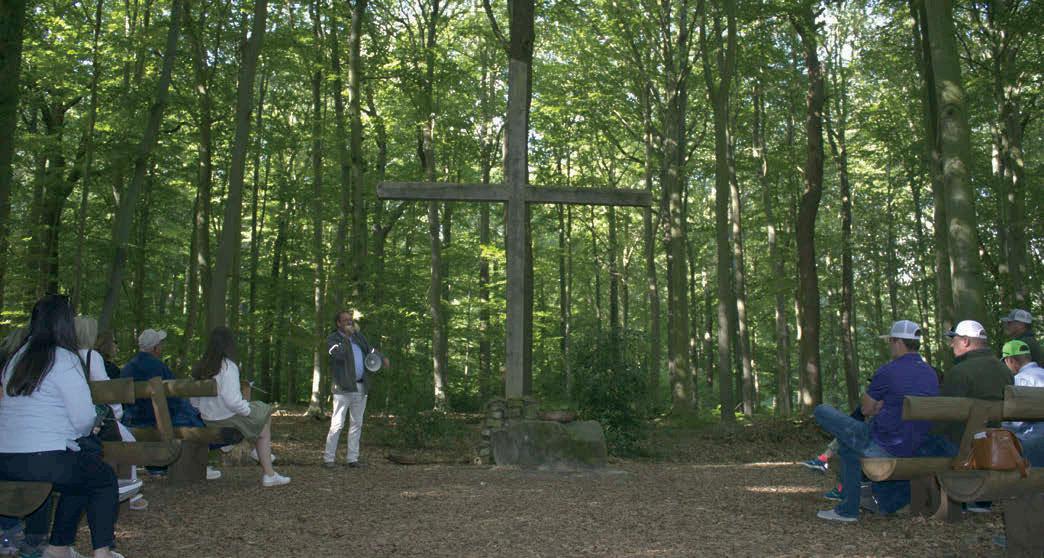
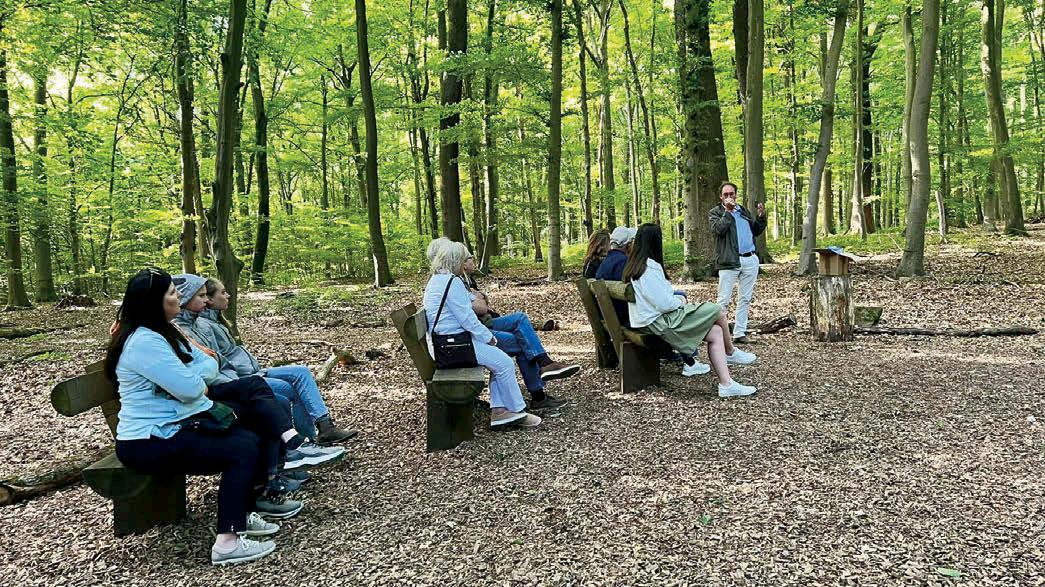
We enjoyed our stroll through the peaceful location, and Albrecht explained in other regions of the forest, they can cut old trees for logging practices. However, unlike in other parts of the world, clear-cutting is not allowed, and they must go into the forest and remove trees based on strict criteria one at a time.
Albrecht also led us on a tour of the family farming operation, where a wide range of crops are grown.


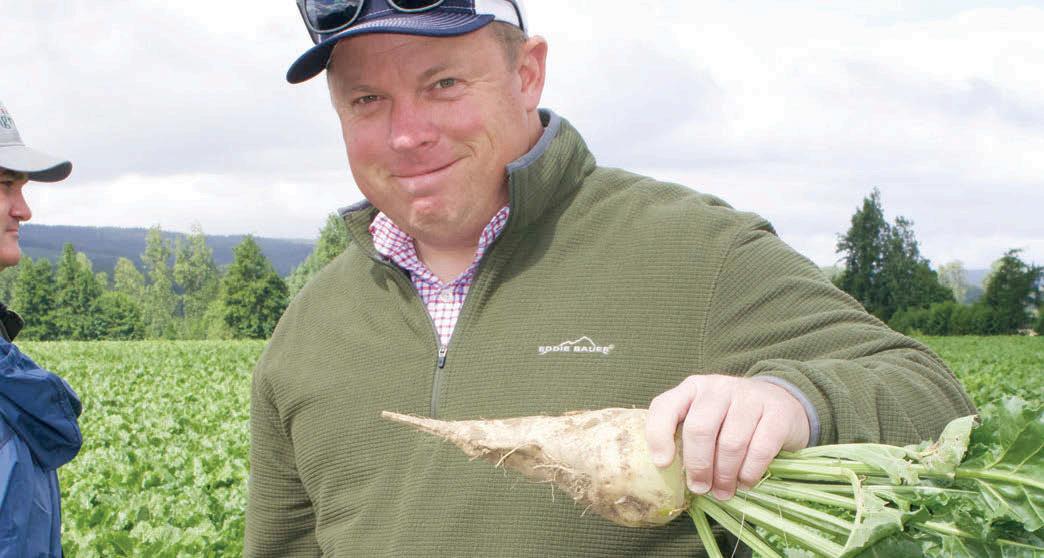
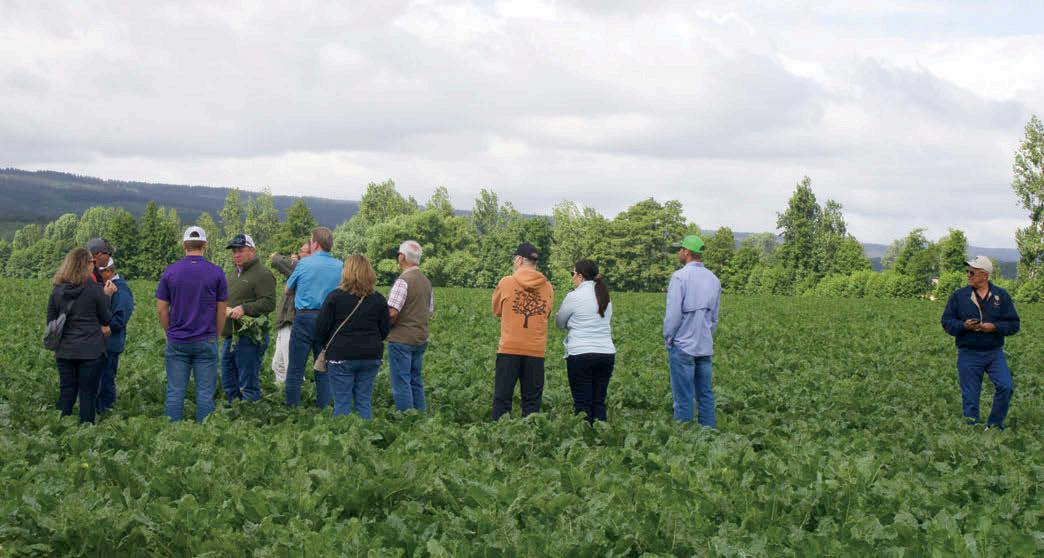
42 TPI Turf News September/October 2022
Matthies Landwirtschaft


Matthies is a traditional family business. They have been farming in Wenzendorf, just outside Hamburg, for over 400 years. Today, they are the nineteenth and twentieth generation of farmers in their families. We had the distinct pleasure of meeting everyone, including the youngest addition at just four months old!
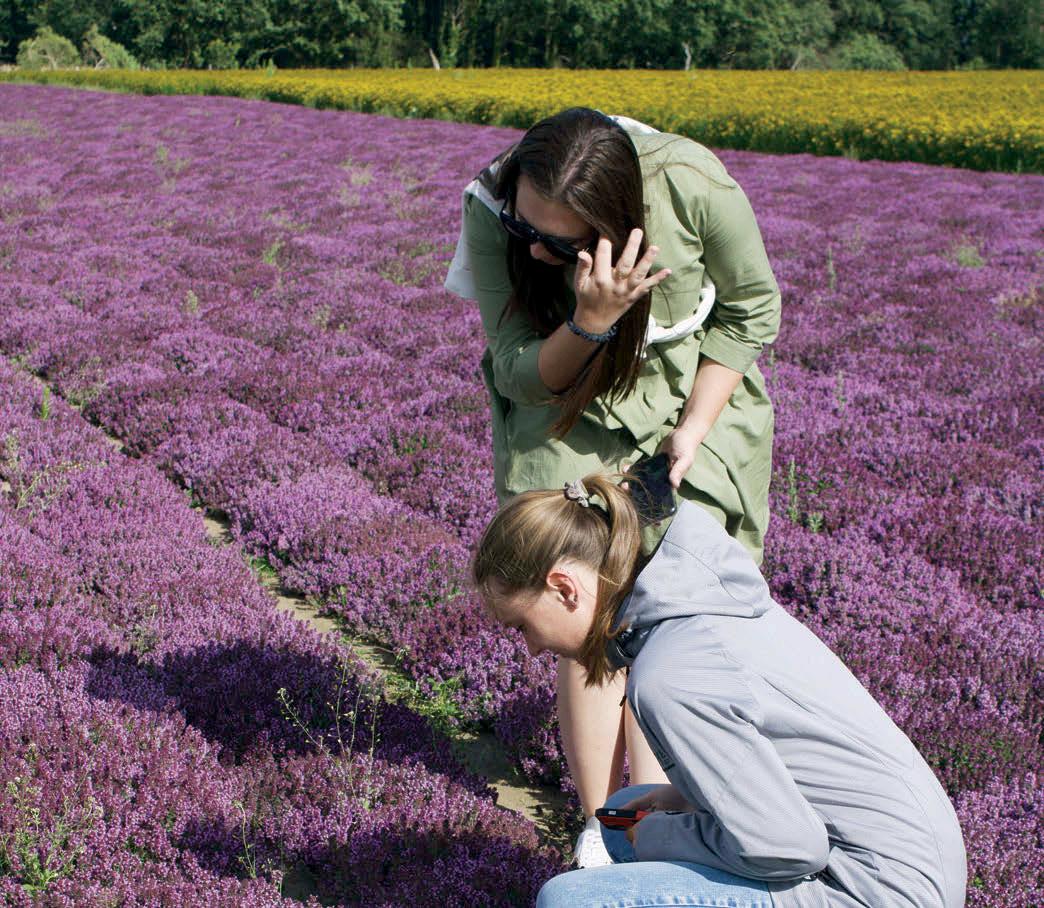
The Matthies family drove us around their property to show us their turfgrass, corn, potatoes, sugar beets, and Christmas Tree fields! A unique portion of their business they shared with us was wildflowers seeds. They are currently the largest distributor of seeds in their region.




43TPI Turf News September/October 2022
Worldwide Connections


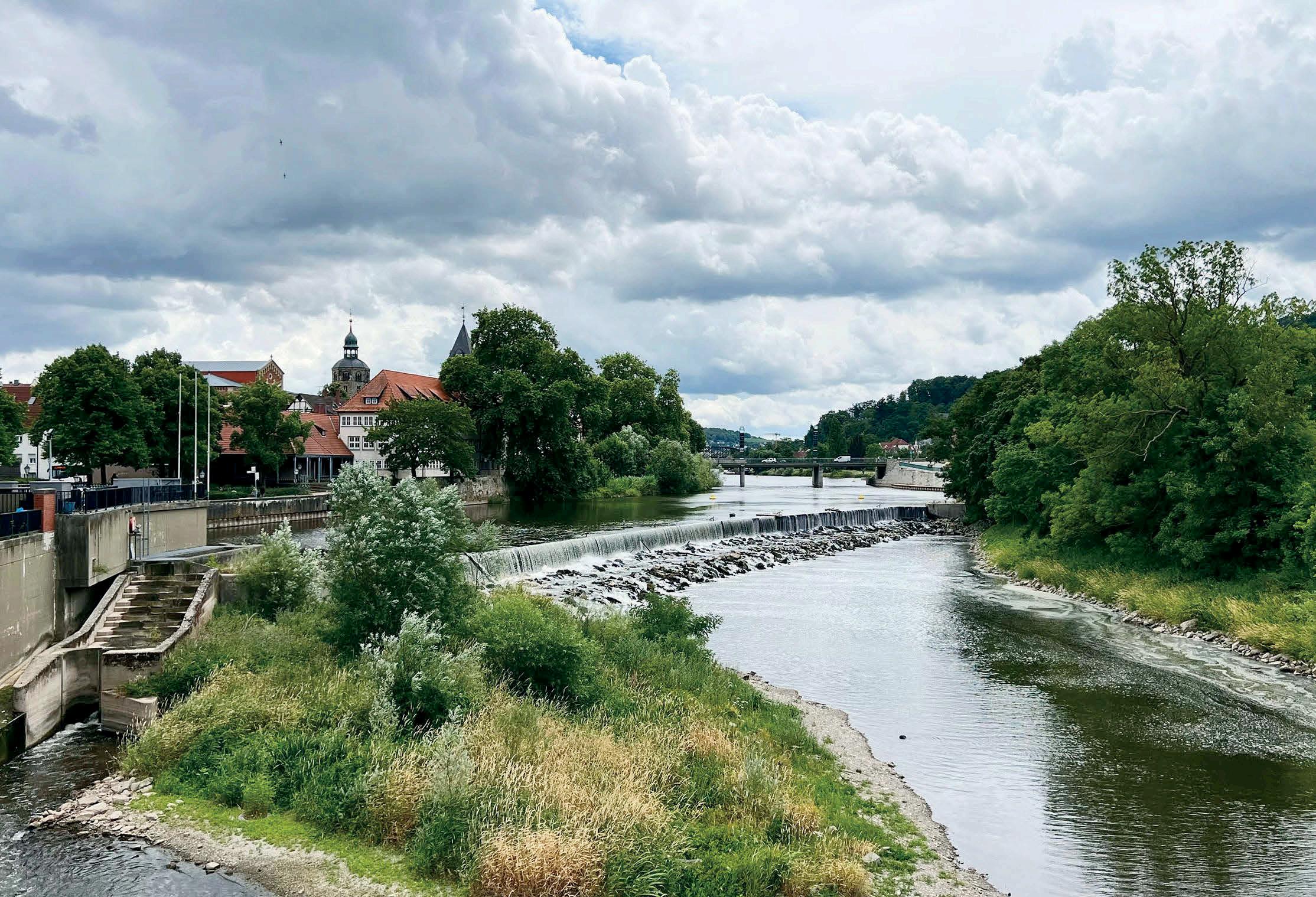
Turfgrass Producers International truly prides itself on being an international organization. This trip allowed some U.S. and Canadian members to see how our industry peers thrive in a different part of the world. We had the best time connecting with members from all over Europe during the ETP Expo. We couldn’t have asked for a better host than Albrecht Knigge and the wonderful families that opened their lives to us.

We look forward to the next opportunity to travel abroad!
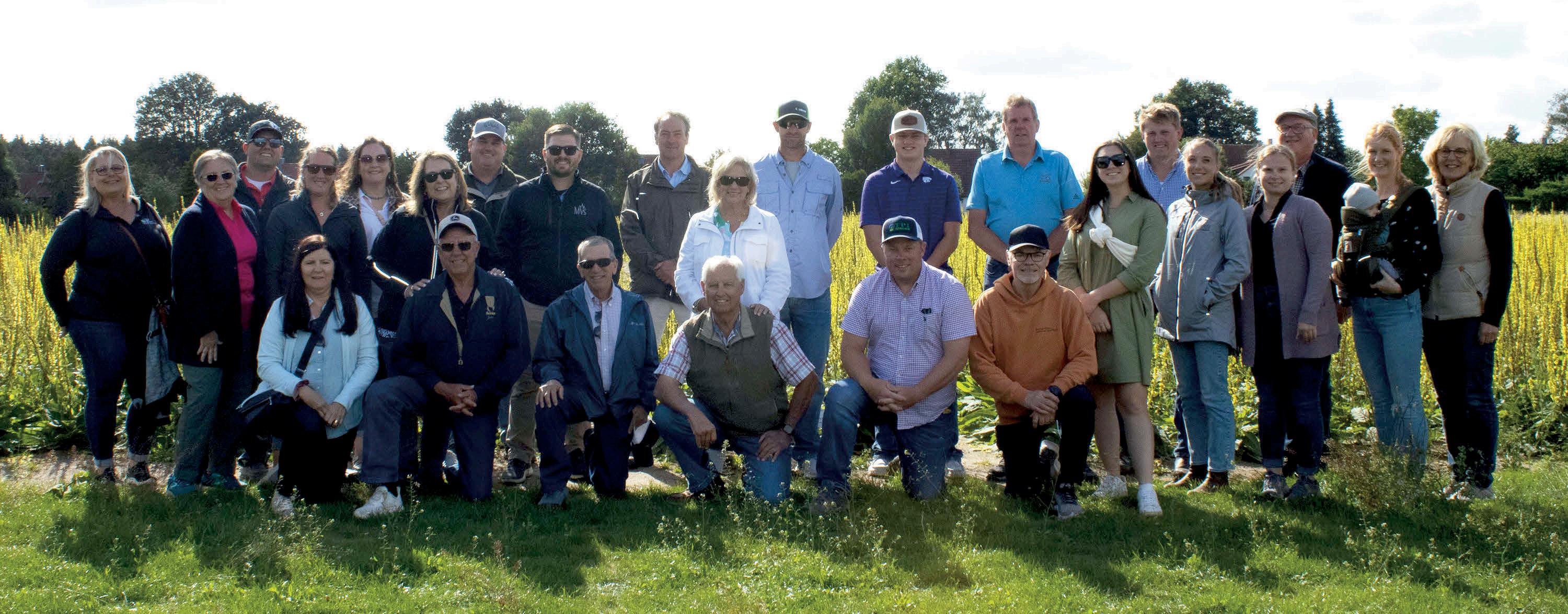
44 TPI Turf News September/October 2022
2 022
Allie Shriver is membership and marketing manager for Turfgrass Producers International.
Photo Credit: All photos by Allie Shriver.
QUALITY SEED FOR SOD PRODUCTION
Gold Tag Certified Seed




Gold Tag certified seed is the highest standard for seed purity in the industry, however at Pennington Seed we go beyond the industry standard by requiring our seed be free of many more contaminants. We ensure that our seed is free of all crop and weed seed* when sold as Pennington® Gold Tag Seed. Our increased scrutiny ensures our customers are receiving the best sod quality seed available.
*Our Pennington® Gold Tag seed is verified as free of all crop and weed seeds in two independently drawn samples and submitted to two separate seed testing labs. While guaranteeing any lot of seed as being completely free of crop and weed seed is not possible, our testing procedures offer the highest verification offered.
Sod Wrap & Field Net
Sod Wrap
• Used for wrapping large turf rolls
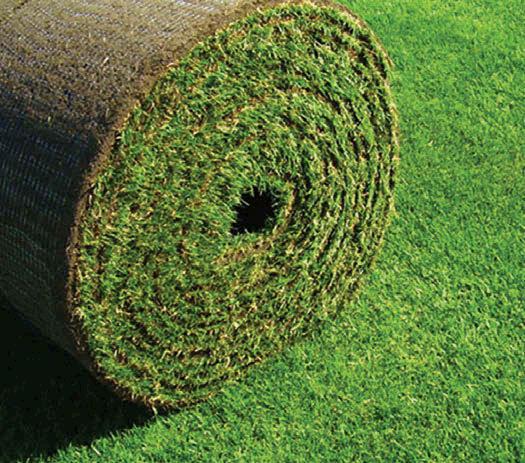
• Protection from weather conditions
• Reduces turf loss during harvest, transport, & install
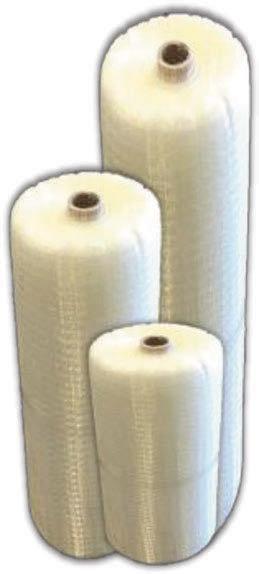
• Can remain on sod or be removed during install
• Consistently reduces waste, labor, and costs by providing a faster installation than slab method
Available Sizes: 29” X 12,000’ | 40” X 12,000’ | 46” X 12,000’
Available in clear on 3” cardboard core
Field Net
• Installed immediately after seed has been planted
• Helps seed grow in consistent strong structure
• Roots intertwine with netting for stability and to help prevent separation from soil when rolled
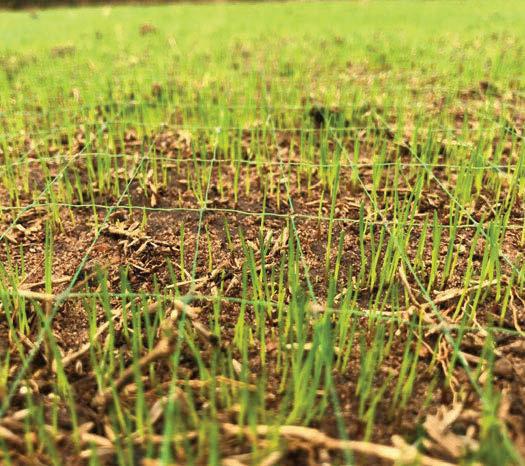

• Less time for growers to harvest crop, reducing costs
Available Sizes: 17’ X 20,000’ | 17’ X 25,000*
Available in green & brown** on 6” PVC core
* Special order item
**Direct ship only
Pennington,
Pennington with design are registered trademarks of Pennington Seed, Inc.
PT140v4 | 08/22 MICHAEL GANTT 803-608-5627 MGANTT@PENNINGTONSEED.COM
CALL FOR HONORS AND AWARDS NOMINATIONS
By Geri Hannah
The TPI Board of Trustees feels it is important to acknowledge individuals for their contributions to TPI and the turfgrass industry. If you know someone who deserves to be honored, you are encouraged to submit their name for consideration.
Watch for the easy-to-use award nominations form coming to you via email from TPI Headquarters or access it at the following link: https://www.surveymonkey.com/r/T3WGDLS. If you have questions or would prefer to submit a nomination via email or mail, please contact TPI Administrative Manager Geri Hannah at 847-649-5555 or ghannah@TurfGrassSod.org.
Award nominations open on October 1, 2022. The deadline for submitting a recommendation is November 13, 2022. The honors and awards categories and the criteria for them follow.
HONORARY MEMBER
Outstanding contribution to the research, planting, growing, and marketing of turfgrass sod. (Need not be a current TPI member.) See the list of past recipients.
YEAR HONORARY MEMBER RECIPIENTS COMPANY
2022 John Addink A-G Sod Farms, Inc., Riverside, CA
2019 Dr. Richard White Texas A&M University, College Station, TX
2017 Ray Weekley (deceased 2022)
2016 Dr. John R. Hall III Professor Emeritus, Virginia Tech, Blacksburg, VA
2008 Dr. Harry D. Niemczyk (deceased 2020)
2006 Dr. Wayne Hanna University of Georgia, Tifton, GA
2005 Kenneth E. Dawson Rolawn Limited, York, N. Yorkshire, England Douglas Fender (deceased 2012) Ike Thomas Granbury, TX
2004 Doyle Jacklin Jacklin Land Company, Post Falls, ID Peter McMaugh Carlingford, NSW, Australia
2002 Dr. Glenn Burton (deceased 2005) Earl Nystrom (deceased 2012) Woodrow Wilson (deceased 2001)
2001 Dr. Wendell G. Matthews (deceased 2016)
1999 Dr. Paul Ricke Michigan State University, Lansing, MI 1992 Robert W. Garey (deceased 1995) Dr. Thomas L. Watschke (deceased 2020)
1987 Dr. C. Reed Funk, Jr. (deceased 2012)
1986 Dr. Richard W. Smiley Oregon State University, Pendleton, OR
1981 Dr. William Daniel (deceased 1995)
1979 Tobias Grether (deceased 1985) Gene Johanningsmeier (deceased 2011) Wiley Miner (deceased 1997) J.E. Ousley, Sr. (deceased 1982) Ben Warren (deceased 1992)
1976 Parker Shirling (deceased 1986)
1975 Dr. James B Beard (deceased 2018)
1973 Dr. Henry W. Indyk (deceased 2005)
46 TPI Turf News September/October 2022
DISTINGUISHED SERVICE
YEARDISTINGUISHED SERVICE RECIPIENTSCOMPANY
TURFGRASS INDUSTRY INNOVATION AWARD

INNOVATION RECIPIENTSCOMPANY
TURFGRASS EDUCATOR AWARD OF EXCELLENCE
47TPI Turf News September/October 2022
Outstanding devotion of time, talent, and energy to TPI, its programs and objectives for five or more years. (Need not be a current TPI member.) See the list of past recipients.
2017Michelle WilliamsSiteOne Landscape Supply, Clinton, NJ 2016Dr. Michael KennaUnited States Golf Association, Stillwater, OK 2013Don HeslopBiograss Sod Farm, Sandy, Utah 2012Mike BlairGreen Velvet Sod Farms, Bellbrook, OH 2008David Doguet, Sr.Bladerunner Farms, Inc., Poteet, TX 2006Louis and Ginger BrookingBrookmeade Sod Farm, Inc., Doswell, VA 2005Randy L. TischerGreen Velvet Sod Farms, Bellbrook, OH 2004Ben I. CopelandPatten Seed Co./Super Sod, Lakeland, GA
Unique and significant achievement that advances turfgrass sod production through research, engineering, training, marketing, public relations, or environmental improvement, etc. (Must be a current TPI member.) See the list of past recipients. YEARTURFGRASS
2017Ken EnsorQuality Corporation, Denver, CO 2008Dr. Doug BredeJacklin Seed of the J.R. Simplot Co., Post Falls, ID 2006Gary DoverBucyrus Equipment Co., Inc., Hillsdale, KS 2005Don, Mike & Gregg TveteneTrebro Manufacturing, Inc., Billings, MT 2004Gerry BrouwerKesmac, Inc., Keswick, Ontario, Canada
Outstanding contribution to the turfgrass industry in one or more of the following areas: academics, public outreach, involvement with turfgrass associations, turfgrass producers, suppliers, manufacturers, researchers, etc. (Need not be a current TPI member.) See the list of past recipients. YEAREDUCATOR EXCELLENCE RECIPIENTSFACILITY 2019Dr. J. Bryan UnruhUniversity of Florida, Jay, FL 2017Dr. Clint WaltzUniversity of Georgia, Griffin, GA Dr. William MeyerRutgers University, New Brunswick, NJ 2016Dr. Grady MillerNorth Carolina State University, Raleigh, NC 2014Dr. M. Ali HarivandiUniversity of California Cooperative Extension, Alameda, CA 2008Dr. Lauire TrenholmUniversity of Florida, Gainesville, FL All the award recipients will receive recognition in Turf News, the Turfgrass Producers International 2023 Membership Directory, and during the TPI 2023 International Education Conference in Nashville, Tennessee. Geri Hannah is administrative manager for Turfgrass Producers International. ghannah@TurfGrassSod.org
DR. HENRY W. INDYK SCHOLARSHIP OPPORTUNITIES
 By Geri Hannah
By Geri Hannah
The application process for the 2023 Dr. Henr y W. Indyk Scholarship began on May 1, 2022. The deadline for receipt of applications is October 31, 2022.

The Dr. Henry W. Indyk Scholarship was established by The Lawn Institute (TLI) Board of Trustees in 2006 to honor a founding father of Turfgrass Producers International (TPI) while demonstrating TPI’s commitment to education and offering a valuable member benefit. For 2023, TLI will be awarding two scholarships: a one-time $2,500 scholarship and a four-year scholarship valued up to $10,000 (U.S.), which consists of an initial award of $2,500, renewable up to three times, pending certain criteria.
Any current TPI Class A Turfgrass Producer or Class B Supplier/ Manufacturer member in good standing is eligible to apply. Furthermore, the immediate family of a Class A or Class B member, or an employee, or their family member, is eligible to apply. Scholarship applicants can major in any given field but must plan on attending or be attending an accredited educational facility as a full-time student to be eligible.

For more information, visit www.TurfGrassSod.org. To access the application, please go to the link that follows. https://files.constantcontact. com/2f3c209b001/d094f7e5-a5ce-45708ddc-469804462516.pdf?rdr=true
Obviously, the scholarship funds are a huge benefit to the students and their families. TLI’s investment in the future of these young people also reaps huge benefits for the future of the turfgrass industry. Past recipients are listed here. These outstanding Dr. Henry W. Indyk Scholarship recipients make the future even brighter for natural grass!
48 TPI Turf News September/October 2022 YEARRECIPIENT COMPANY 2022Andrew James SmithSandy Plain Sod, LLC, Beulaville, NC Krystal DixonDeBuck’s Sod Farm of New York, Inc. Pine Island, NY 2021Carlie GardnerDMG Turf and Farms, Angier, NC Lillie GardnerDMG Turf and Farms, Angier, NC Aidan CooperRed Hen Turf Farm, Inc., Carlisle, IN 2020Nathan HeuverEagle Lake Prof. Landscape Supply, Alberta, Canada Mikhail KiddCloverdale Nursery & Turf Farm, Boise, ID 2019Sara LechliderLaytonsville Landscaping, Inc., Laytonsville, MD Krista BouchardKingston Turf Farms, West Kingston, RI 2018Lanie Carl Carl & Son Turf, Harrisonville, MO Emma HedgpethColumbia River Seed, Plymouth, WA 2017Amy Wilber Oakwood Sod Farm, Inc. Delmar, MD Sara LechliderLaytonsville Landscaping, Inc., Laytonsville, MD 2016Andrew AposhianFireFly Equipment, Farmington, UT 2015Adam AposhianFireFly Equipment, Farmington, UT 2014Cody AndersonK’ntucky Turf, Othello, WA Molly MaroneyHope Plantation Turf, Telephone, TX Taylor ThompsonRed Hen Turf Farm, Inc., New Carlisle, IN 2013Cameron BlairGreen Velvet Sod Farms, Bellbrook, OH Grant YoumansGreen Acres Turf Farm, Furman, SC 2012Chase CochranTurf Merchants, Inc., Tangent, OR William WarpinskiCentral Sod Farms, Inc., Centerville, MD 2011Trevor SmithSouthwest Sod Inc., Maricopa, AZ Christopher UtterbackUtterback Sod Farm, Sacramento, CA 2010Michael AndersonK’ntucky Turf, Othello, WA Sarah WilberOakwood Sod Farm, Inc., Delmar, MD 2009Amanda BushBush Sports Turf, Milan, IL Kelsey Lain Pine Island Turf Nursery, Pine Island, NY 2008Kevin CoombsCoombs Sod Farms, LLC, Elmer, NJ 2007Jaclyn ThorsonTodd Valley Farms, Inc., Mead, NE Nathan BushBush Sports Turf, Milan, IL Michael AndersonK’ntucky Turf, Othello, WA 2006James (Jay) McCurdyMcCurdy Farms, Dyer, TN Mindy BrandtAmerican Sod Corp., Palatine, IL
022
Geri Hannah is administrative manager for Turfgrass Producers International. ghannah@TurfGrassSod.org




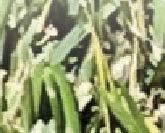

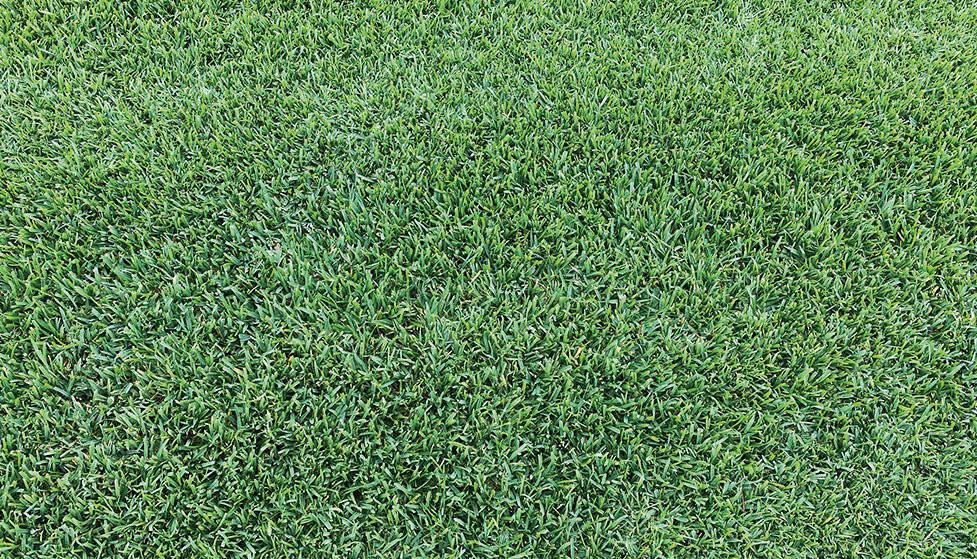

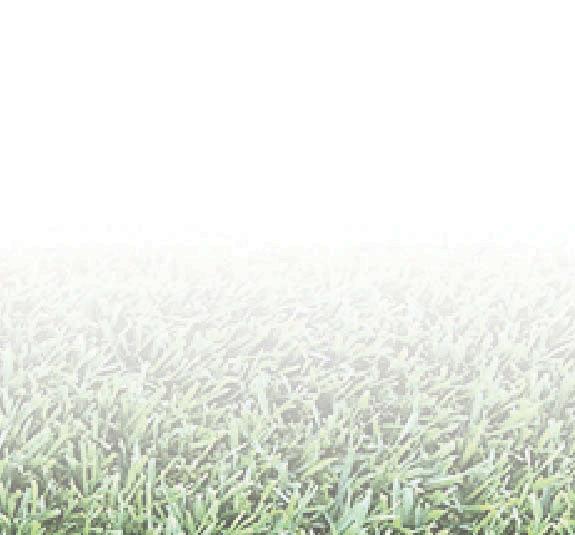



MARKETING CUSTOMIZED FOR YOU
By Casey Reynolds, PhD
If you had the resources to work with a national marketing agency to promote your sod farm and could ensure that consumers in your area and around the country could understand the many benefits of natural grass, would you take advantage of that opportunity? Now is your chance. One of the highest priorities of the U.S. Sod Checkoff is promoting sod to consumers and increasing the preference for natural grass.
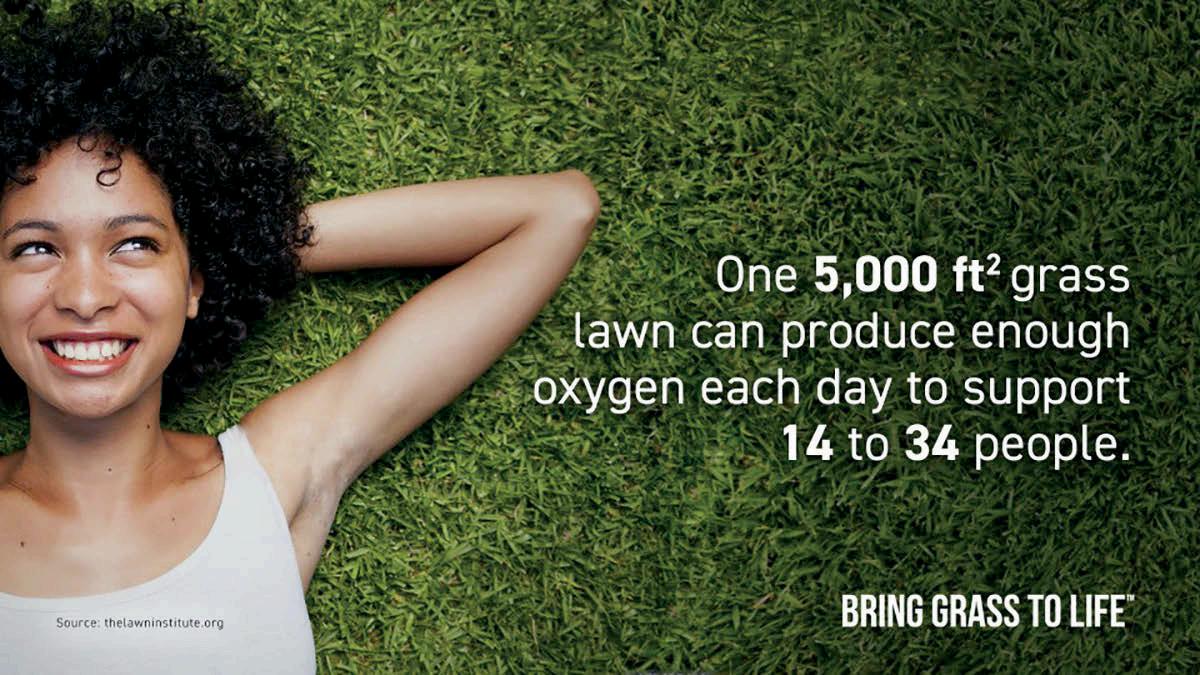
How Would a Sod Checkoff Work?
A board of sod producers, nominated by fellow sod producers like you, will invest checkoff dollars in local and national advertising, agronomic and consumer research, promotional kits that can be customized and localized by growers, and customer and regulator education and outreach, all to increase the value of every square foot of sod in the U.S.
Promoting Sod
Here are just a few of the high-impact programs the Sod Checkoff can bring to life.
• Working with nationally recognized brands and influencers to expand the checkoff’s reach.
• Partnering with youth sports associations to promote playing fields made of locally grown, natural grass sod.
• Marketing and advertising campaigns targeting consumers and customers, including sports field managers, city managers, golf courses, and school systems.

• Creating promotional toolkits that you can easily customize to promote your product locally.
Using images such as these on your social media platforms reach those already “following” you.
50 TPI Turf News September/October 2022
Now imagine the greater impact eye catching images like those and the one below would make as advertising on your local or regional television station and/or on area billboards and—for the “Real is Better” image below—in football stadium signage, and/or in the printed game day football programs of local high school and community college teams. U.S. Sod Checkoff funding could make that happen!

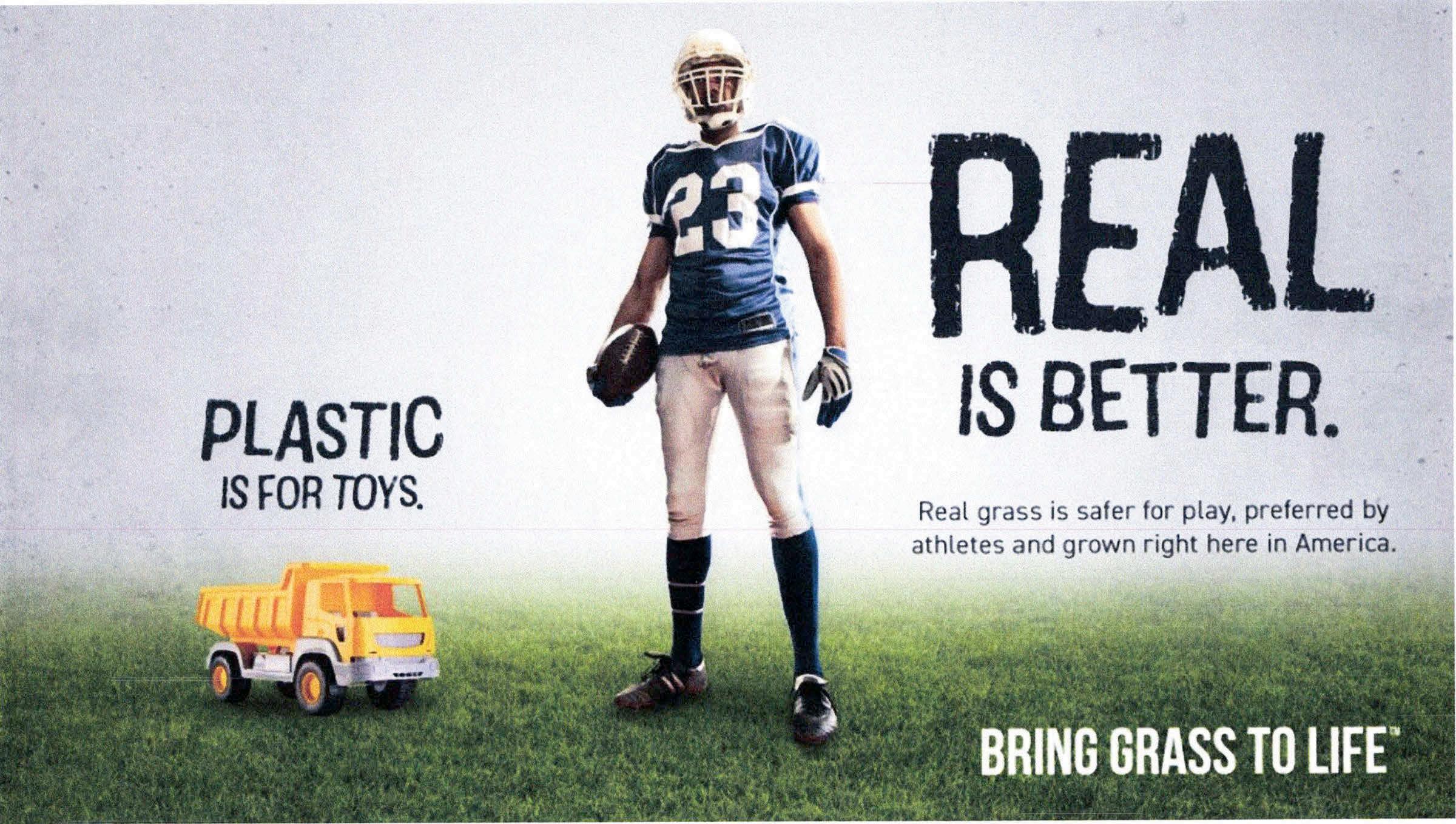
51TPI Turf News September/October 2022
IF YOU ARE INTERESTED IN LEARNING MORE ABOUT THE U.S. SOD CHECKOFF, PLEASE VISIT WWW.SODCHECKOFF.ORG
.
Casey Reynolds, PhD, is executive director of Turfgrass Producers International.
REALISTIC EXPECTATION OF ARTIFICIAL INTELLIGENCE— FOUR THINGS YOU SHOULD KNOW
By Susanne Tedrick
While we are still a few decades out from seeing most businesses and industries use artificial intelligence (AI) in their operations, there is certainly greater adoption than there has been in years past. According to a top IT training company, 2021 saw a sharp uptick in respondents for their annual AI Adoption in the Enterprise survey, (nearly three times than the previous year), as well as 61 percent of respondents showing that they are actively considering or evaluating AI solutions.
If you are interested in learning more about AI, here are four things you should know:

AI is Already Embedded in People’s Day to Day
While widespread and more sophisticated uses of artificial intelligence are perhaps slated in the not-sodistant future, people are already using or interacting with some form of AI every day. If you have used web-based email services, used ridesharing services, or shopped on e-commerce platforms, you’ve likely been interacting with artificial intelligence in some capacity— and didn’t know it.
There are currently no federal or state laws that require companies to disclose that they are using AI in their applications and, for applications that are used by the public, customers are more likely to be interacting with a very well programmed AI interface than with another human being.
However, many consumer advocacy groups are pushing to have more formal laws instituted for requiring disclosure, as they believe that there is the potential for customers to be deceived and misled. While this may not be a worry for simpler transactions, this can be more concerning where there is more at stake, like for financial services and telemedicine.
AI vs. Machine Learning vs. Deep Learning
The terms AI, machine learning, and deep learning are often used interchangeably, but each term has a specific meaning and is interrelated.
AI: General, high-level uses of AI, like text chatbots on e-commerce sites, are likely pre-programmed by humans
to mimic typical human interactions or calculations. The AI here depends on what is already programmed; it cannot “learn” on its own from mistakes or added information, nor can it start-up or power down on its own. It relies heavily on human interaction.
Machine Learning: Machine learning helps to address these scenarios. In machine learning, tools are put into place where the AI learns from the feedback and information it is given, and then uses it to improve its operations or performance in the future. Human intervention is sometimes necessary, but not at the same level as basic AI. Voice assistants are examples of machine learning in action.
Deep Learning: Deep learning takes this to the next level, where the learning that takes place mimics that of the human brain, using sophisticated algorithms called neural networks. Neural networks are currently being used in several applications, including aircraft fault detectors, guidance systems used by cars, and even ATM machines.
AI is More Accessible Than You Think
Two of the biggest barriers of entry for organizations to use artificial intelligence tools are overall costs and gaining the right set of skills to use these tools properly.
While the overall cost of an AI solution will largely depend on the targeted use case, or problem attempting to be solved, and the level of sophistication needed. Building a general AI chatbot will not be as expensive
52 TPI Turf News September/October 2022
as, say, building a self-driving car. That said, many cloud computing platforms offer cost effective AI and machine learning tools to people and organizations, as well as free or low-cost training to help them get started.
AI Requires Ongoing Investment
The costs that come with AI and related solutions are not a “one and done” affair. Although AI solutions can minimize the time and effort needed for monotonous, low-value tasks, they require monitoring to ensure that they are operating properly, biases are minimized, and that they comply with any industry regulations, as well as local, state, and federal laws. AI solutions, much like cloud computing-based solutions, should be considered an operating expense versus a capital expense. In addition, as AI solutions change and mature, ensuring that staff is properly skilled is crucial.

As leaders look to bring AI into their organizations, it is important that they have strong computing infrastructure in place to support its use. AI tools require a significant amount of computing resources— specifically, central processing units (CPUs), graphics processing units (GPUs), storage, and networking—to perform optimally.

Organizations also will need to have a clear understanding of what AI adoption will look like in their organizations and a solid strategy on how to make that adoption a reality.
Lastly, it is important that leaders have realistic expectations of the problems that AI can, and cannot, solve. AI solutions cannot fix antiquated or poor internal processes and systems. Throwing AI solutions on top of flawed systems will not only lead to failure but lead to failure more quickly—and with huge tangible and intangible costs. It is important that an organization reflect on their existing systems and culture before embarking on AI solution adoption.
Susanne Tedrick is an infrastructure specialist for Azure, Microsoft’s cloud computing platform. In her work, Susanne helps her clients address needs and challenges surrounding cloud adoption, migrating on premises workloads to the cloud, and cost optimization. Susanne previously worked as a technical specialist for IBM Cloud. For more information, please visit: www.SusanneTedrick.com
53TPI Turf News September/October 2022
TURFGRASS OUTREACH PROJECT TAKES ROOT IN NEW LOCATION
By Darrell J. Pehr
Editor’s note: This article originally appeared in the July 2022 issue of Golf Course Management magazine and is reprinted with the permission of the Golf Course Superintendents Association of America (GCSAA).
An outreach project at the U.S. National Arboretum that welcomed more than 150,000 people to the world of turfgrass will see another day, and a revamped version could lead to similar projects sprouting up across the country.
An Idea Becomes a Reality
The idea for a national display of all things turfgrass took root in 2011, and by 2014, tens of thousands of visitors to the Washington, D.C., area were visiting the Grass Roots turfgrass exhibits each year.
Geoffrey Rinehart, lecturer in turfgrass management at the University of Maryland’s Institute of Applied Agriculture, got involved in 2013, as did Kevin Morris, president of the National Turfgrass Federation (NTF) [and executive director of the National Turfgrass Evaluation Program (NTEP), the governing board of which gave him the goahead to get involved in the national initiative].
Through NTF, about $450,000 was raised, which funded the costs of construction and paid a coordinator for the duration of the project. Rinehart, a 15-year GCSAA member, took on the project with enthusiasm. The exhibit covered 1.2 acres near the entrance of the arboretum and included 12 displays. The project was so successful, the initial schedule of 2014-2018 was extended to 2020.
In his role managing the displays, Rinehart saw the impact Grass Roots had on people’s understanding of the benefits of turfgrass.
“When you experienced this exhibit, perceptions were influenced,” Rinehart says. “It was an eye-opening experience.”
Finding a New Home
As the project concluded and the arboretum leadership decided to move in a new direction, the Grass Roots project was momentarily without a home. But the commitment and momentum from Morris, Rinehart, and others would not be lost. As word spread about the need for a new location, help was soon to follow.
“I was very passionate about the original exhibit at the arboretum,” says Jon Lobenstine, director of agronomy for Montgomery County Revenue Authority since 2006, a GCSAA Class A superintendent, and 21-year association member.
Every time he visited the exhibit, Lobenstine was energized seeing people learn about turfgrass and get a deeper understanding of what goes into managing turf. Seeing how well Grass Roots worked led to the idea of relocating the exhibits and continuing the project.
“It’s our duty to look for ways to tell the good story of turfgrass,” Lobenstine says, and in his position, he was able to turn words into action. MCRA operates nine public golf courses across Montgomery County, MD. Among those are Needwood Golf Course, which offers golfers both an 18-hole course as well as a nine-hole executive course.
With the help of Rinehart, Morris, and Harlyn Goldman, CGCS, a 29-year GCSAA member, and superintendent

54 TPI Turf News September/October 2022
at Needwood, the exhibit is being set up behind the ninth green of the executive course, by a parking lot, so the public can easily access the site.
Eighteen museum-quality banners are being installed that will tell visitors about topics ranging from irrigation and responsible water use to the history of lawns and turfgrasses. Support from the turfgrass industry was provided, such as sprinkler heads donated by Ewing Irrigation, the local Rain Bird distributor.
“It was a natural fit at this site, which has been used over the years for in-house turfgrass research aimed at reducing turfgrass inputs,” Lobenstine says.

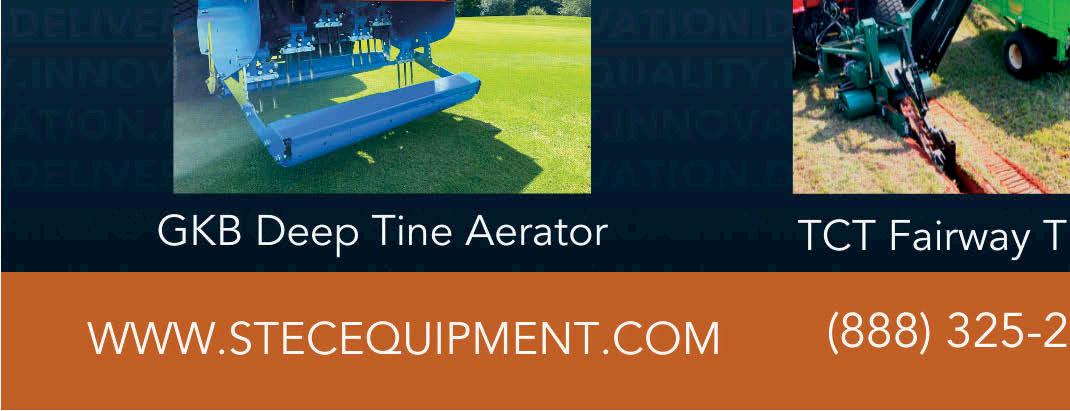


Morris, an eight-year GCSAA member, underlines the importance of projects like Grass Roots in creating more awareness and understanding.

“I think our industry is tremendously misunderstood and undervalued by the general public,” Morris says. “We all have a role to play in educating the public about the importance of the turfgrass industry, number of jobs created, the health benefits of turfgrass, the environmental benefits, how turfgrass filters water, reduces erosion, cools the air in urban areas, reduces the heat island effect, etc. Grass Roots helps to do that.”

Looking Ahead to Similar Exhibits
Rinehart says he hopes that people passionate about turfgrass in other states will consider establishing similar exhibits. He envisions projects spearheaded by Extension agents or people retired from turfgrass management and says advice and support, such as templates for display materials, are available for such initiatives.

The exhibit at Needwood is expected to open this summer. Morris says Grass Roots has created opportunities for people to ask questions on topics like organic production, use of pesticides and fertilizers on turfgrass, genetically modified organisms, and why golf courses cultivate greens, which can lead to good dialogue and teachable moments.
“Visitors to the original Grass Roots exhibit at the National Arboretum often walked by or through the exhibit while enjoying a day at Arboretum, taking the kids out for some walking and play time, or exercising themselves,” Morris says. “If they read one banner or looked at one display while passing by or through, it was an opportunity to educate them on the importance of turfgrass. Hopefully, this new site at Needwood Golf Course will provide the same opportunities.”
55TPI Turf News September/October 2022
Darrell J. Pehr is GCM’s science editor.
Photo courtesy of Jon Lobenstine and GCM.
NTEP TURFGRASS TRIAL EXPLORER NOW AVAILABLE

Compiled by Suz Trusty
The Turfgrass Trial Explorer was introduced on July 5, 2022, in a series of tweets from Kevin Morris, executive director of the National Turfgrass Evaluation Program (NTEP): “Five plus years of development have led us to this point: our database/search tool is now publicly available. The Turfgrass Trial Explorer is free!”
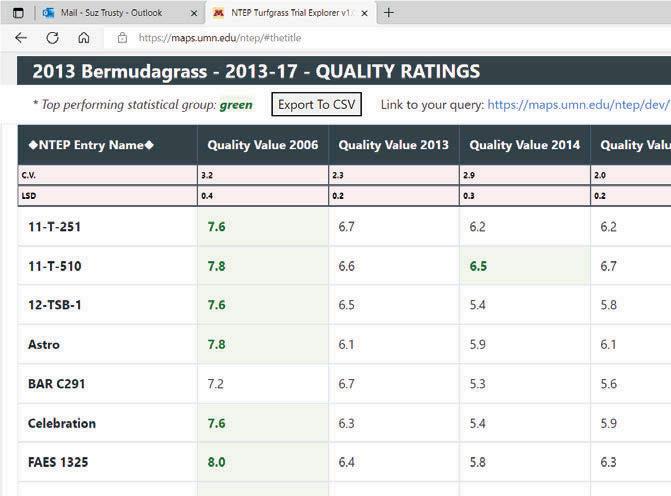

NTEP Turfgrass Trial Explorer version 1.0
Morris tweeted this link, ntep.org/database.htm, which leads to the Turfgrass File Explorer introductory page, with this information, “This search tool is linked to 40-plus years of data collected by NTEP and its university partners. The tool allows a user to efficiently locate the information needed to make smart and timely decisions on turfgrass cultivars and experimental selections. Please note: the tool currently only contains data from 1981-2020. We apologize that 2021 data is not yet available in the tool as we will be adding 2021 data later this year. Thanks for your understanding as we work to increase database uploading efficiency.”

How to Use It—Step by Step
To access the tool, click on the link that follows. https:// maps.umn.edu/ntep/ This link leads to the simple steps in the Figure 1 Screen shot.


Making a choice, such as the bermudagrass trial in the Figure 2 example, produces a table. This example has all the bermuda trial locations and can be sorted by any location. (This example is by the overall mean, ‘Table avg’)…pink cells are LSD and C.V. stats, green cells are statistically equal to the top entry in that column.
Another option, one or more locations can be selected and a mean of just those locations computed. Or, multiple variables can be selected and put in a single table. Also note, any table can be output to a .csv file (which can then import into Excel).

Try It—and Provide Your Feedback
Morris invites all to try the Turfgrass Trial Explorer tool. And he issues this reminder, “Please recognize that this initial release, version 1.0, will be continually improved with new versions released over time. Therefore, we have many plans for improvement, but we need your input and suggestions for future development. Please send any questions, comments, or suggested changes/enhancements, to the development team at kmorrisntep@gmail.com. Thank you!”
56 TPI Turf News September/October 2022
Suz Trusty is co-editor of Turf News.
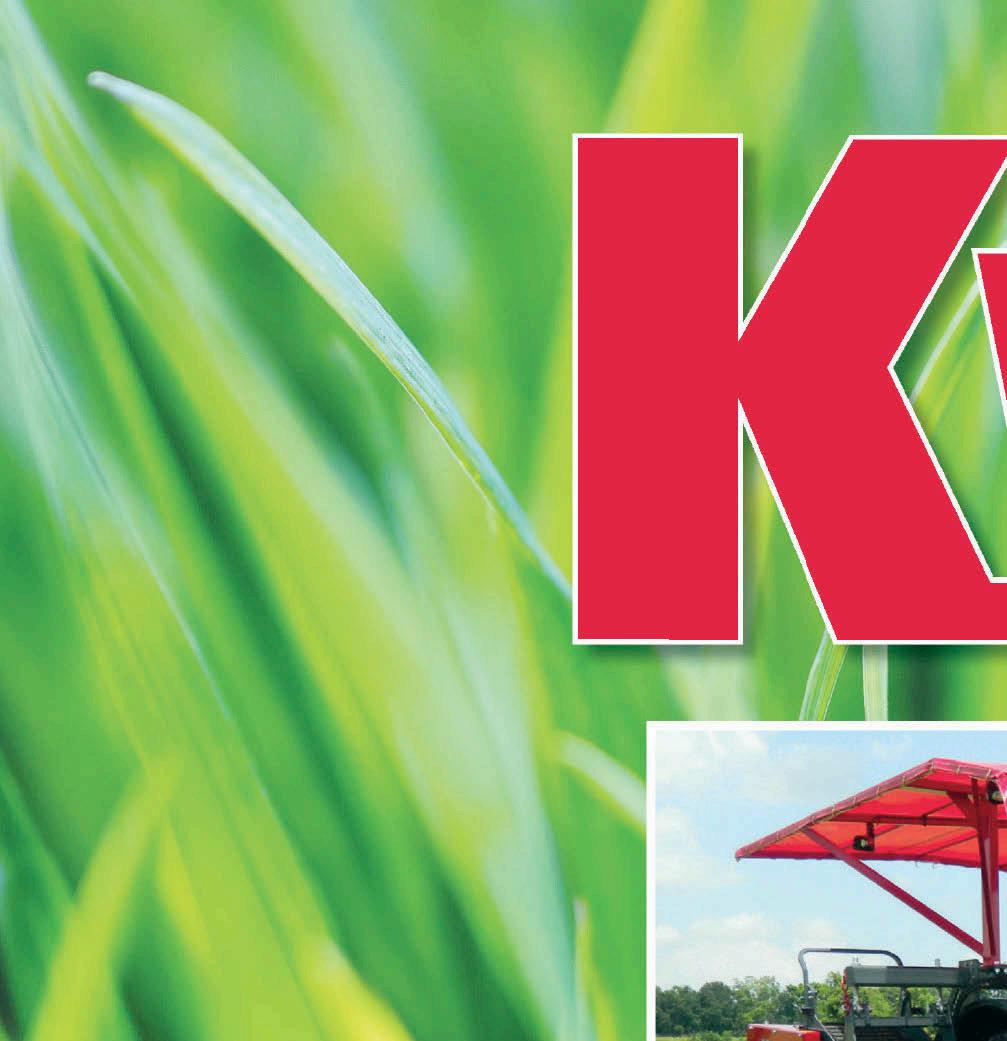
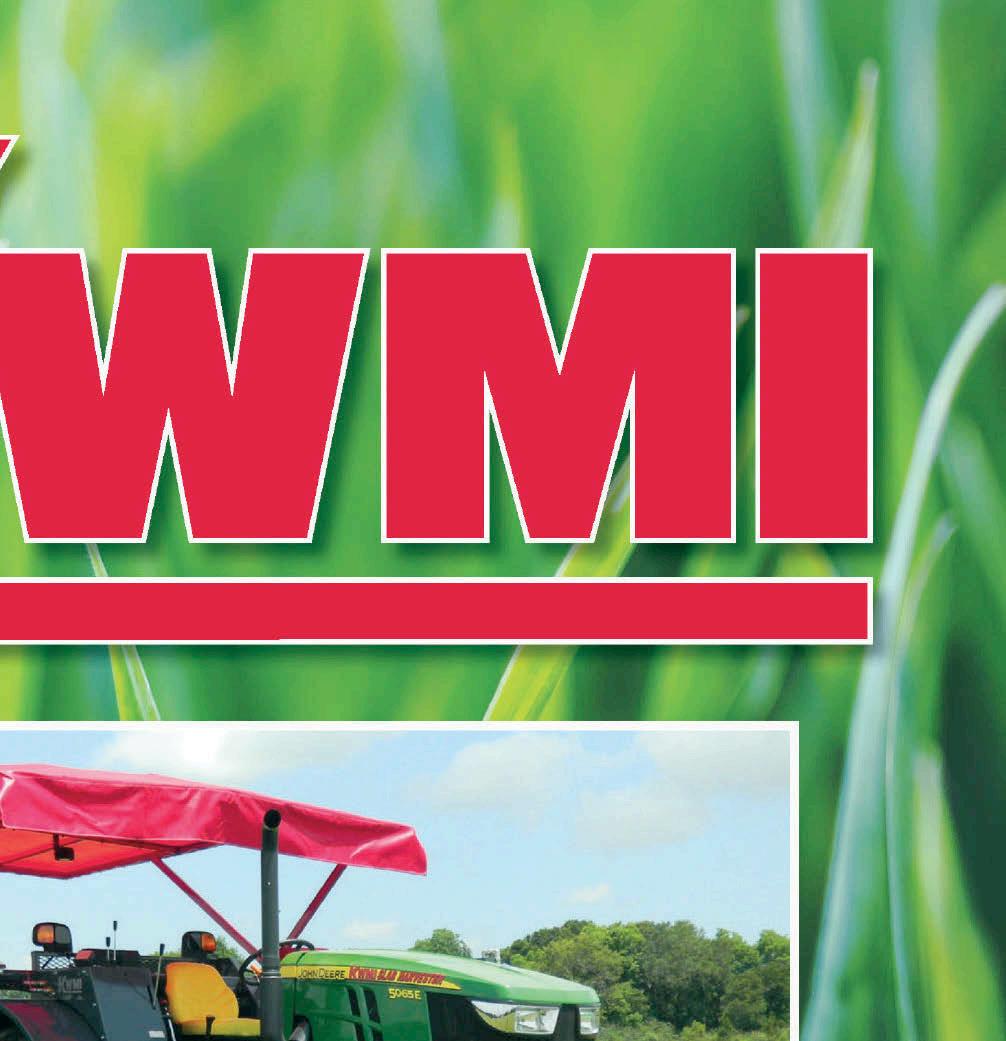

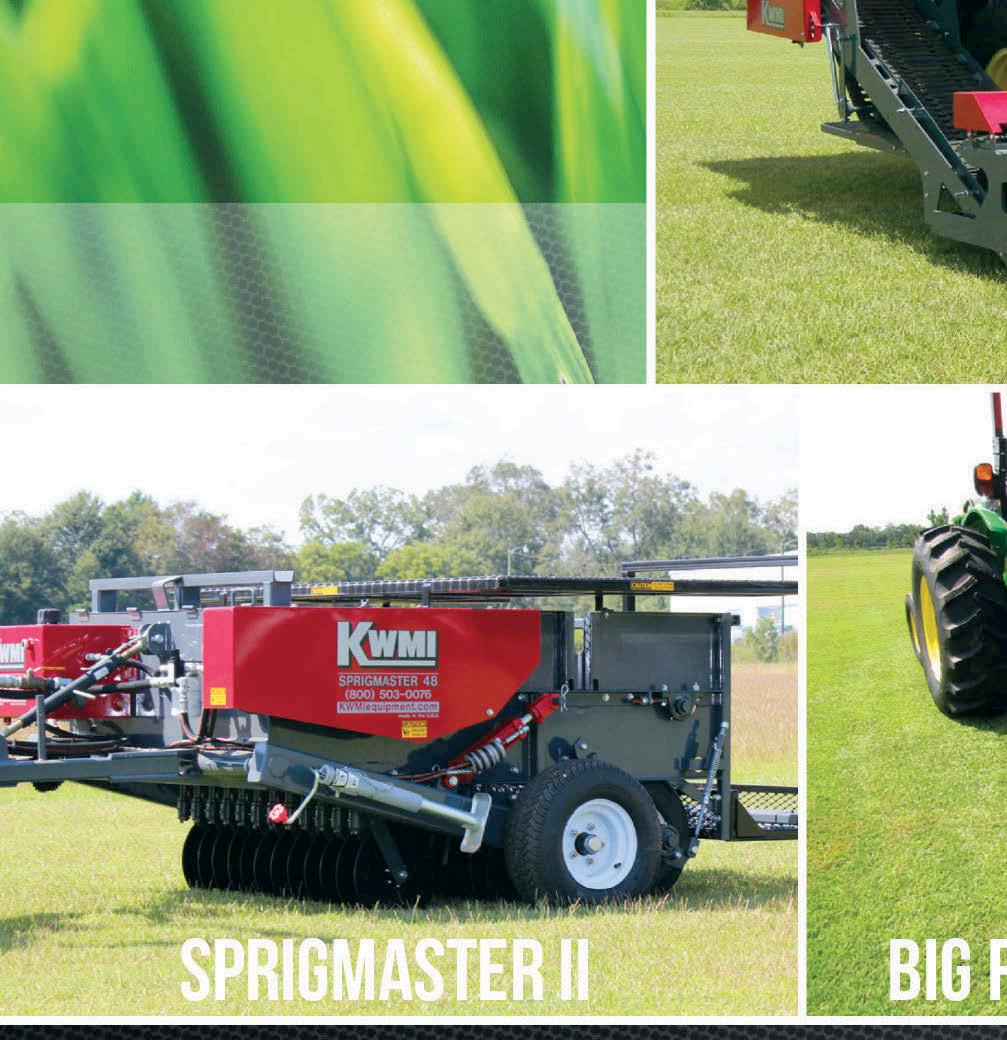
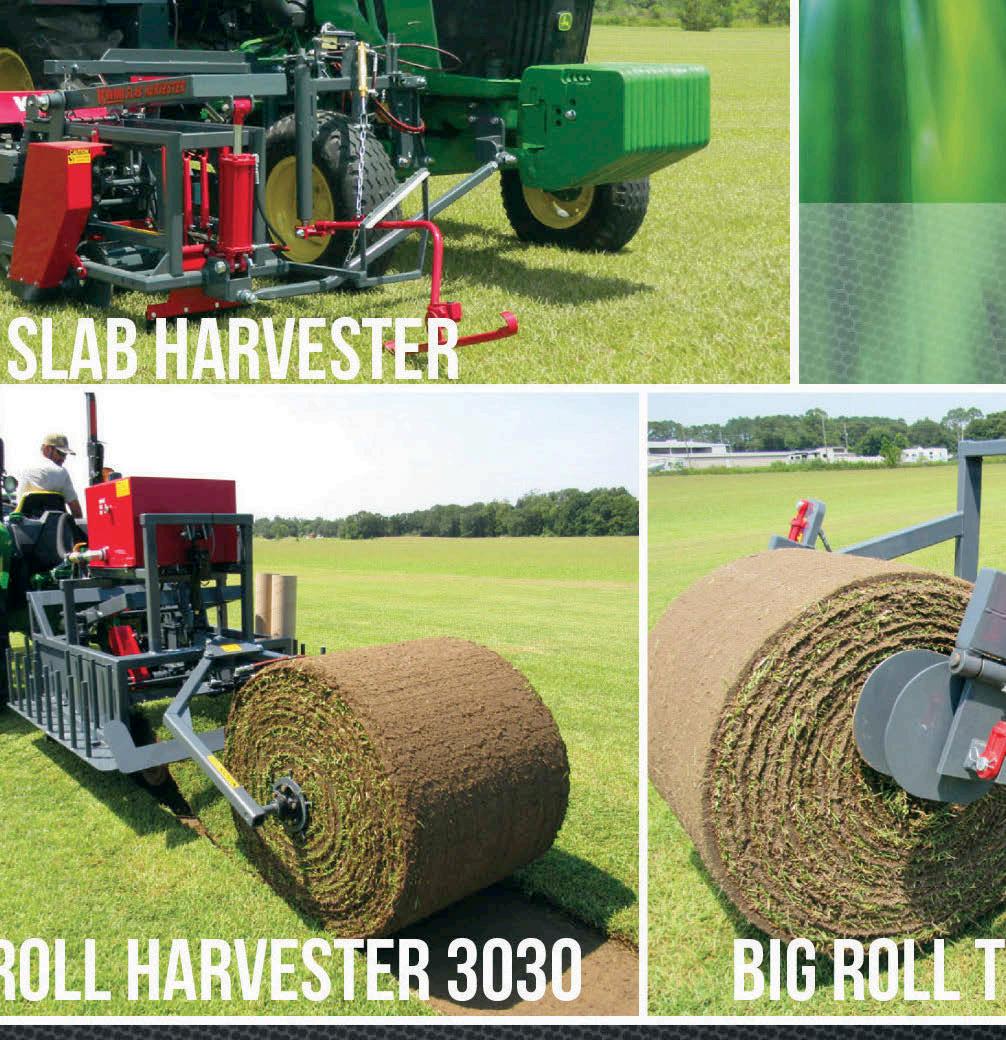



ASSOCIATION UPDATES
Turfgrass Growers Association Takes a Proactive Approach to Heat Challenges
On July 18, 2022, the Turfgrass Growers Association (TGA) issued a new release titled, “Brown lawns are cool,” with the opening line, “Turf experts urge homeowners to hold back on watering established lawns.”
That news release follows. Ahead of, what is predicted to be, one of the hottest summers ever recorded here in the UK, turf experts are advising homeowners to avoid watering established lawns during the upcoming heatwave. The Turfgrass Growers Association, whose members produce more than 70 percent of the turf grown in the British Isles, say that during hot weather, the watering of established lawns is, in most situations, wasteful and unnecessary.
“Our message to homeowners is not to worry if your lawn goes brown during the summer,” says Chief Executive Stacie Rae. “Going brown is the natural survival mechanism of grass. When water is in short supply grass responds by shutting down. The brown color shows that it has stopped growing until more favorable conditions return. Grass is remarkably resilient, and so long as you follow a few basic rules, most lawns will recover completely when the rain finally arrives.”
Top Tips:
•Increase your mowing height to 35-40 mm (1.3781.575 in.) – this creates deeper roots and more shade and shelter from higher temperatures
•Try not to concentrate wear in one place – move barbeques and toys like slides around
•No need to feed as grass will not be growing during hot, dry weather
•Avoid blanket weedkillers as these may damage the grass – use a spot weedkiller if necessary
•Keep mower blades sharp as blunt blades bruise the grass leaf and it loses more water
•Apply a light dressing of compost to help keep moisture in the soil and protect the grass from higher temperatures
•Scarify your lawn once a year to remove matted and dead growth – if allowed to build up this acts as a barrier to rainfall

Tips for looking after established and newly-laid lawns during the summer are available at www.turfgrass.co.uk and on Twitter @TGATurfandWater
Turfgrass Growers Thanks Water Companies for Hose Pipe Ban Exemptions on New-Laid Turfgrass
That title headed a news release issued August 5, 2022. That news release follows. The Turfgrass Growers Association (TGA), which represents turfgrass growers nationally, is pleased to see that water companies are including watering of newly laid turfgrass within their hose pipe ban exemption.

The current exemption allows for watering of newly laid turfgrass for up to 28 days after installation.
Freshly laid turfgrass needs water during establishment and without an exemption communities and landscape contractors would suffer hardship, as well as the turfgrass growers themselves. “In addition to that,” says Richard Owens, Chair of the TGA, “it would be perverse in the extreme to effectively curtail the planting of something which—apart from preventing soil erosion, preventing water run-off, and locking up CO2—is of positive benefit to individuals and communities both in private gardens and in the public realm.”
TGA Spokesperson Stacie Rae is also keen to stress that turfgrass growers recognize that they have a part to play in helping gardeners and landscapers get through the current situation. “Short term, our members are preparing advice for both the amateur gardener and the landscape professional on how they can establish new-laid turf with the minimum of water usage. This includes using recycled water and observing timings of watering.”
This news release again concluded with Rae’s contact information, encouraging media personnel to contact her for more information.
58 TPI Turf News September/October 2022
Huge fuel savings



Thanks to FireFly’s electric technologies harvesters typically use 1/3 to 1/2 the fuel of hydraulics-only machines. With today’s tens of thousands each year.


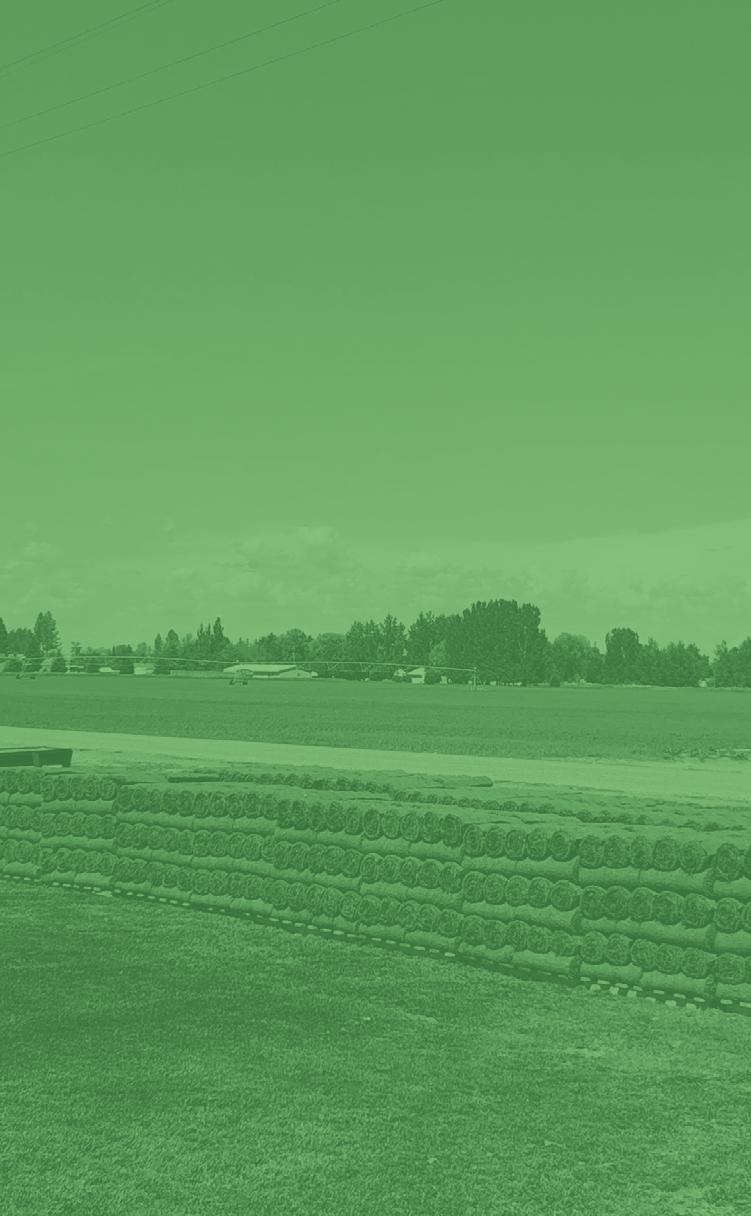

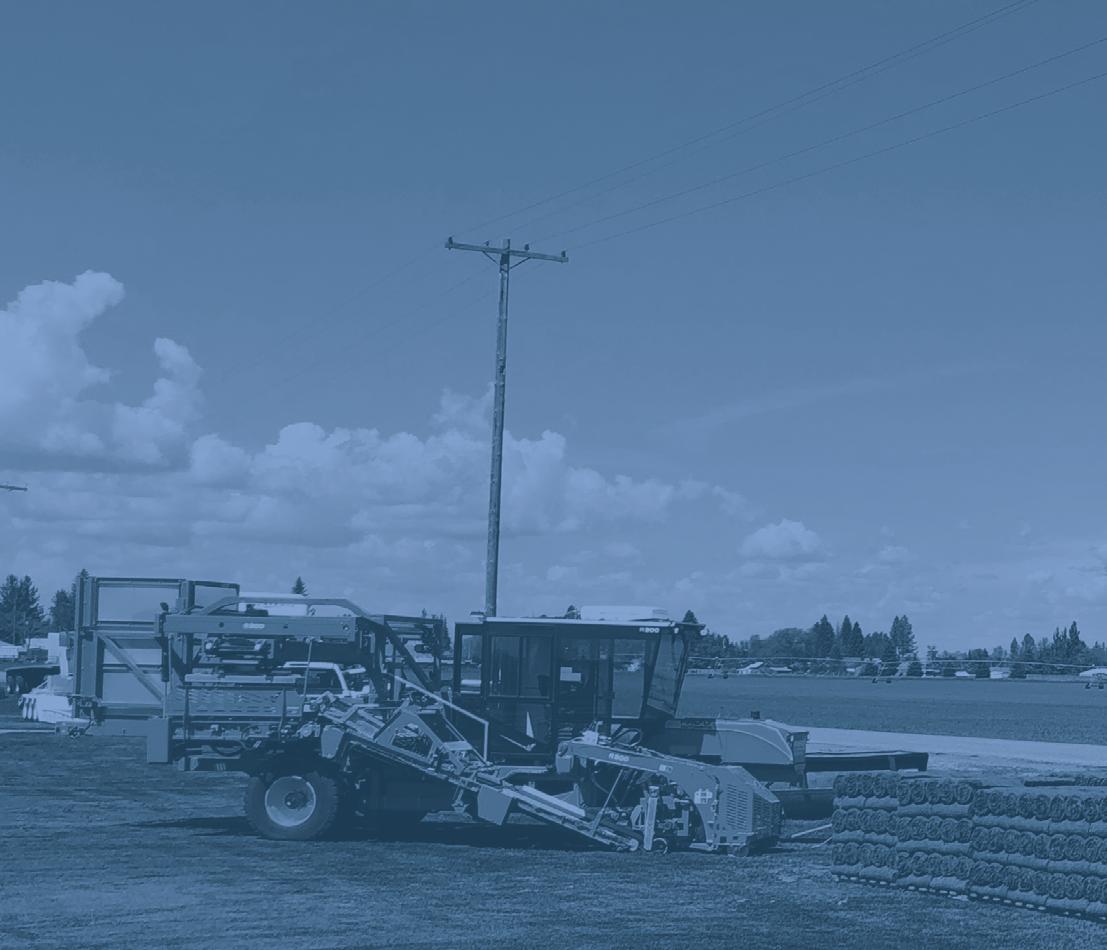



Harvest more grass


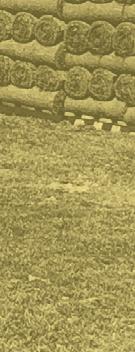


The R300—for rolls—and the ProSlab 155C and 160—for slabs—churn out perfect pallets of any grass you’ve got, all day long. Highly productive, designed to reduce labor and maintenance.
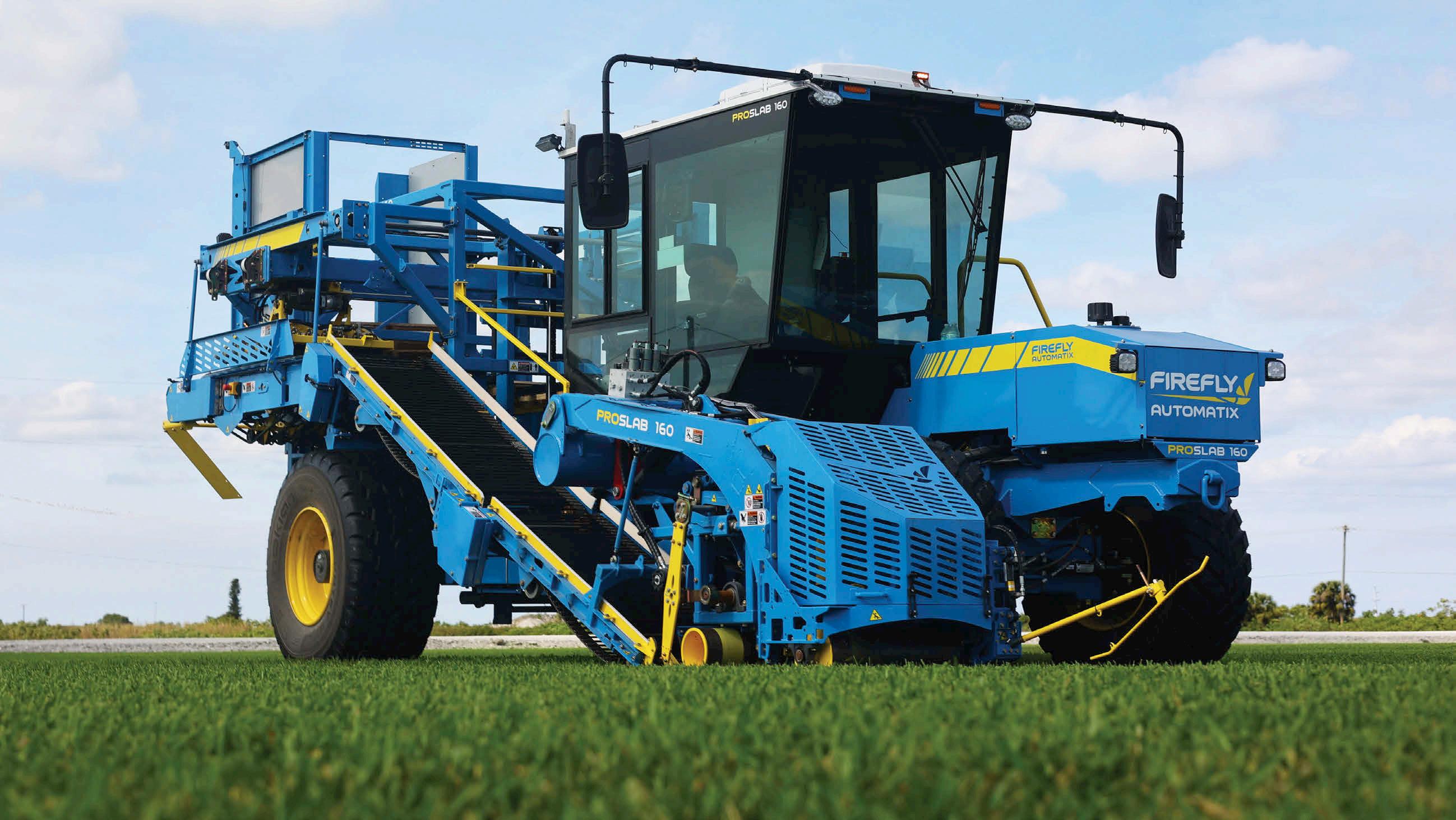

TM
ASSOCIATION UPDATES

National Market Development Project Concluded
Turf Australia’s July 18, 2022, Enewsletter included this report. The strategic, levy-funded, National Market Development Project (TU16002) has now concluded. Did you know that during its lifetime, content sharing the benefits of living turf was seen by over 4 million people thanks to the management of over 28 events, development of three videos, and creation of 11 factsheets! Check out an update on that project in the graphic below.


Turf Australia Invests in UWA Lawn Study

The July 18, 2022, Enewsletter announced Turf Australia is investing in a new project led by the University of Western Australia. The project will investigate the role of lawns from environmental, social, design and planning perspectives to test alternative sustainable design solutions for urban lawns in a drying climate using empirical data and innovative technologies. The link that follows leads to the twopage PDF of the Proposal Flyer. https://mcusercontent. com/2de5aa2ad0b9f3625eeb3d68e/ files/36daa023-b9d3-df64-038f0897812609e9/Lawn_Grant_ Proposal_Flyer_21.02.24.01.pdf
New South Wales Flood Update
The July 18 Enewsletter gave this update. Once again, farms in the Hawkesbury have been the victim of floods. However, we are hopefully starting to see some meaningful change thanks to the tireless work of growers and Turf Australia to advocate for change to Warragamba Dam and the disaster of the Cornwallis drain. In the meantime, affected growers are eligible for funding from the NSW Government. The link that follows leads to the Financial assistance site listing the various services available. https://www.service.nsw.gov.au/floods/financial-assistance
60 TPI Turf News September/October 2022
e e.










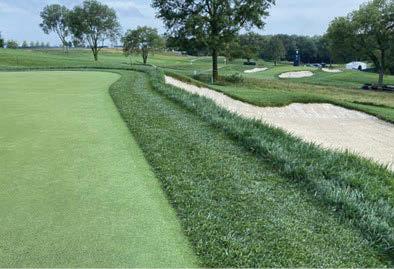

61TPI Turf News September/October 2022
Expand your ag irrigation knowledge. Explore unique solutions and new products.
Attend the largest trade show dedicated to irrigation for access to





• hundreds of exhibitors, including ag irrigation tech startups.
• the latest innovations in ag irrigation during the new product contest.
• industry experts who can answer your most pressing questions.
• exciting events like the Viva Las Vegas Reception and a Craft Brewfest.
Use promo code TN22 for a FREE registration to the show!
Register now at irrigationshow.org to experience everything the 2022 Irrigation Show and Education Week has to offer!
5-9, 2022

Trade Show | Dec. 7-8








Vegas, Nevada
HELP YOUR CUSTOMERS CONSERVE WATER


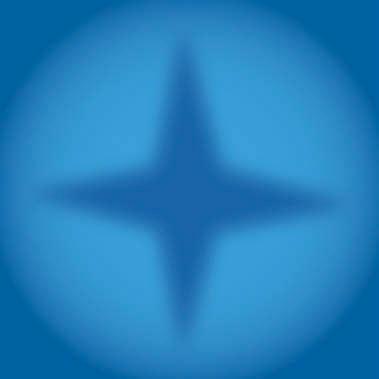
Though the Irrigation Association’s (IA) official “Smart Irrigation Month” promotion ended in July, the need for smart irrigation never comes to an end. IA encourages its members—and all of the green industry—to “continue promoting smart irrigation and your company’s sustainable solutions all year long with your customers, regulators, legislators, and water districts.”
With heat and drought conditions impacting much of the world, it’s essential to keep sharing the message about the importance of water-use efficiency and conservation. For turfgrass producers, that outreach can—and should— extend to all the entities the IA lists above.
Who Needs to Hear What?

No matter your location on the globe, your company will interact with governmental agencies that are local, regional, national, and in some instances, international. Many of these have the authority to make water-use decisions that could potentially impact how you operate your business.
With so much negative information about turfgrass wateruse flowing from multiple sources, you need to ensure those agencies recognize you and your company as wise stewards of this valuable resource.
The first steps in this process are identifying those that are in a position of authority on water-use issues, establishing communication with those people, and listening to their questions and concerns. The information you gather in these first steps will guide your outreach efforts. Your outreach might be to individuals, committees, councils, departments, legislative branches, or most or all of these entities. Your message to these agencies might, in some instances, need to focus on the basic scientific facts about what turfgrasses are, how they are managed efficiently and effectively to minimize water use, and how they contribute to the environment and to their constituents’ quality of life. In other cases, your message may require ramping up the technical level to demonstrate how you are basing your own water-use on precisely monitored plant, soil, and microclimate conditions.
Your customers may be an equally broad category, depending on how your business operates. Are you selling your grasses to sports facilities, golf courses, parks and recreation facilities, municipalities, facility designers and developers, landscape architects, landscape contractors, directly to homeowners, or to two or more of those categories? Do you produce some or all of your grasses on contract following your customer’s specifications? Do your
62 TPI Turf News September/October 2022
December
|
Las Vegas
Convention
Center | Las
The Groundwater NGWA Association
customers pick up the harvested product from your company? Do you deliver it to them with company equipment and personnel? Do you use contracted delivery services? Does your company handle off-site installations? Do you use contracted installers?
Most of you will serve more than one of these customer categories. Some of you have such diversified business that you could answer yes to all of these questions.


The technical level of your outreach will vary with each of these customer categories, and probably across a broad spectrum within these categories. As with the governmental agencies, your first steps are connecting with your customers to determine who the decision makers are, whether it’s an individual, or several individuals with differing levels of authority within an organization. Again, the key is establishing communication with those people,
and listening to their questions and concerns. You may find that you also need to establish connections with your customers’ customers to more effectively understand the questions and concerns they are raising for your customers. In some instances, you may need to target your outreach to an entire department, facility, company, homeowners’ association (HOA), neighborhood, subdivision, or city.
How Do You Deliver Your Messages?
To amplify the impact of your outreach, share your messages on multiple platforms. Post signage in your office and on your trucks. Set up a section on your website. Spread the word on social media: Facebook, Twitter, Instagram, YouTube, and LinkedIn. Prepare a water-use efficiency and conservation presentation to deliver as the featured speaker for the meetings of area associations. Offer to be an information source for the media—radio, television, newspapers. Resources to develop your outreach are available through TPI, The Lawn Institute (TLI), and IA (see the example of IA graphics in this article). And through such associations as Turf Australia and, for those in the UK and Ireland, the Turfgrass Growers Association (TGA).
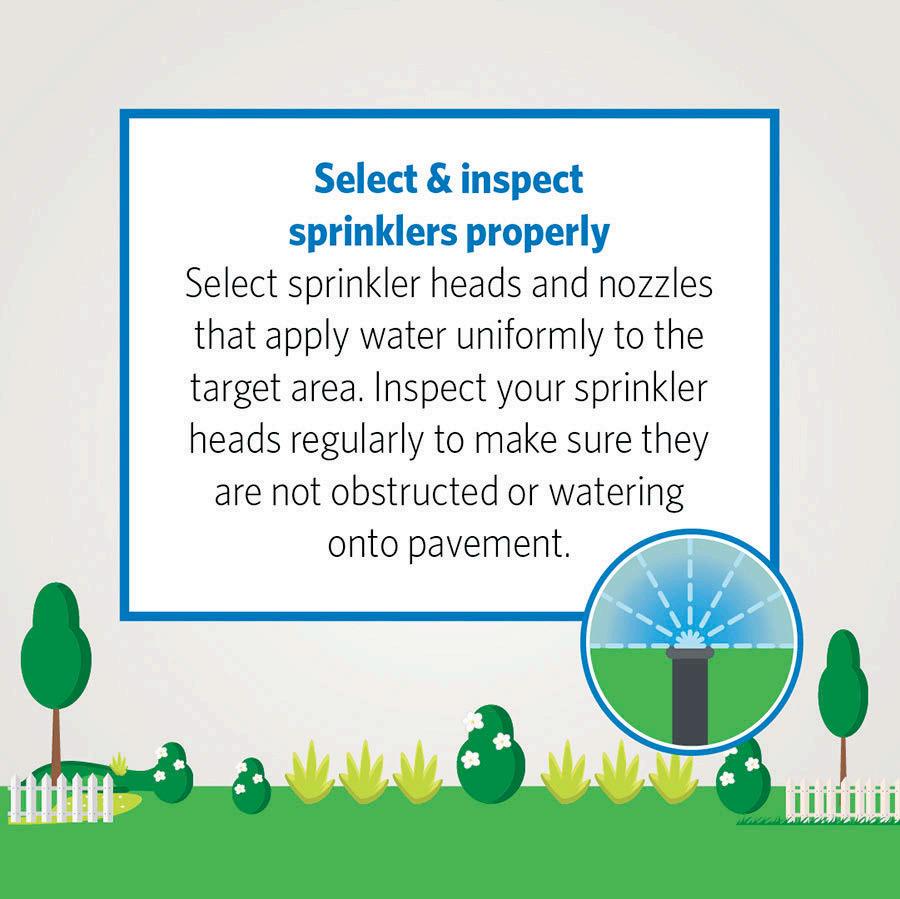
Suz Trusty is co-editor of Turf News.


63TPI Turf News September/October 2022
WHAT'S FLYING IN THE TWITTERVERSE
The following are some industry Tweets from early August 2022.
Grasses tend to be undervalued but have influenced the trajectory of human history through their domestication as food staples, as well as natural ecosystems worldwide. A special issue of Science explores the unrecognized value of grass: fcld.ly/bo80dpr

https://www.science.org/toc/science/377/6606
Retweeted on August 7 by TWCA @_tgwca
From a Science Magazine tweet @ScienceMagazine
Nice to visit Lincoln and see some of the new lines of buffalograss varieties being developed in the UNL breeding program. Although it’s early in the evaluation process, many of these are looking great after being established by plugs in May.

Tweeted on August 6 by Geoffrey Rinehart, PhD @ gjrinehart
@GCSAA’s recent water management study showed promising trends in water usage on U.S. golf facilities. Get the breakdown here: bit.ly/3P3Nj3V

https://gcmonline.com/research/news/watermanagement-study-results-2022
Retweeted on August 7 by Dan Sandor, PhD @VTTurfTeaching
From a Golf Course Management magazine tweet @ GCM_Magazine
Kentucky bluegrass fans – looking for the best bluegrass for your fall plantings? Our latest data is now out on our website. ntep.org/reports/kb17/k… ntep.org/reports/kb17/kb17_229/kb17_22-9.htm


Tweeted on August 5 by Kevin Morris @kmorris_NTEP
WELCOME NEW & RETURNING MEMBERS
Jon Clark Rhino Ag 916 N. 600 E Road Sibley, IL 61773 217-714-3507 jclark@rhinoag.com
Kelsey Sease Crop Vitality, Tessenderlo Kerley 2910 N. 44 St., Ste 100 Phoenix, AZ 85018 480-364-0916 kelsey.sease@tkinet.com
64 TPI Turf News September/October 2022


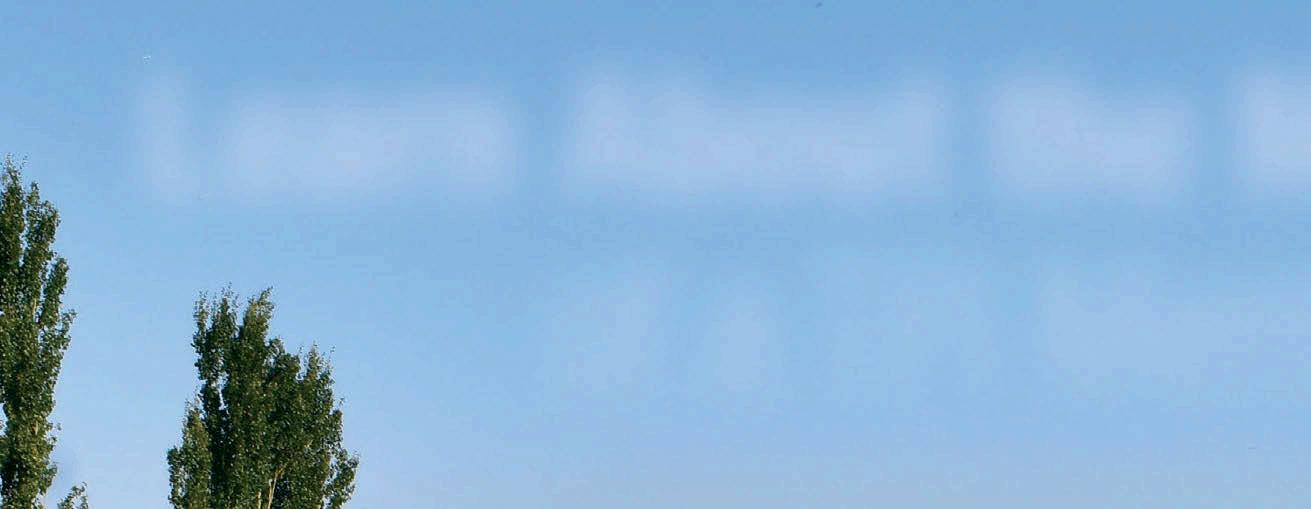






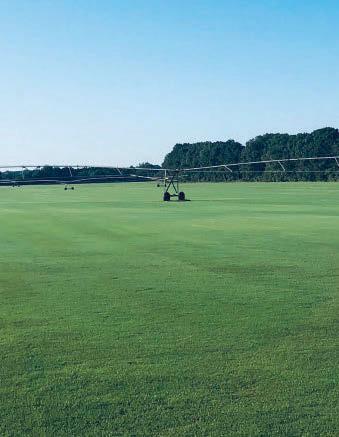
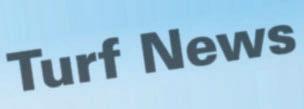




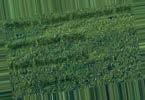









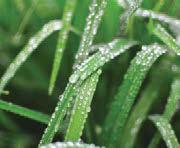


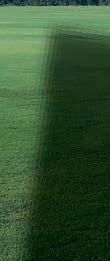












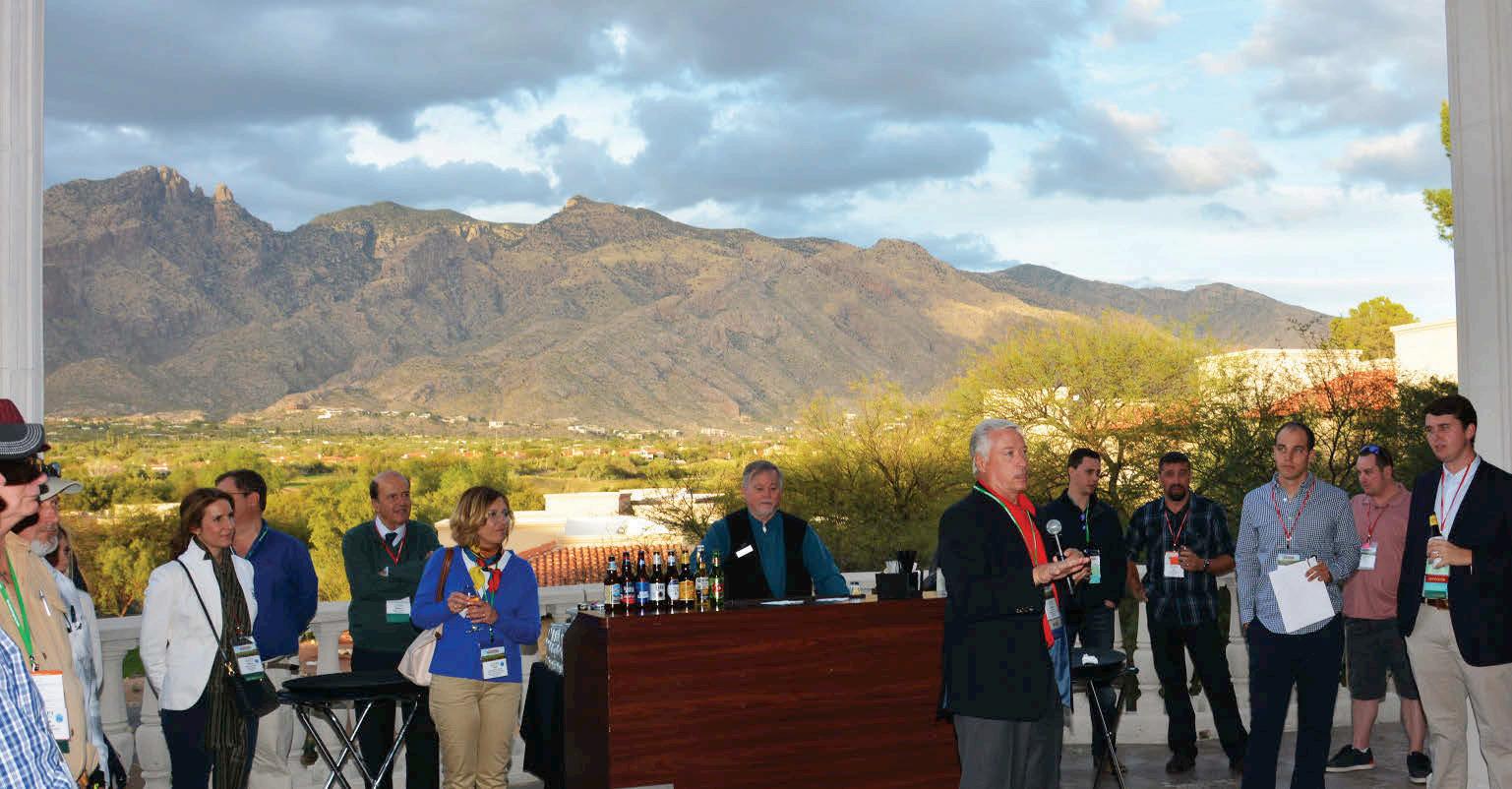
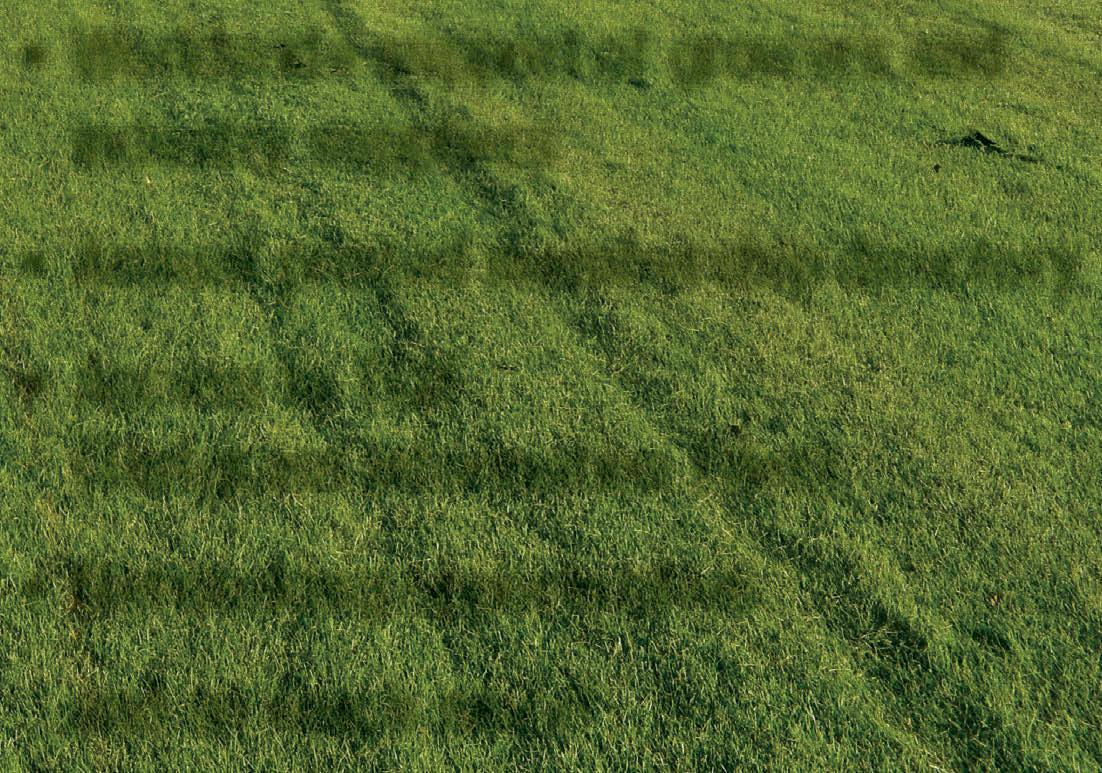







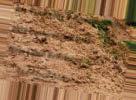
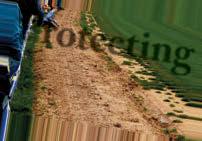




65TPI Turf News September/October 2022 Learn About the Many Benefits of a TPI Membership Turf News November/December 2018 The only magazine devoted exclusively to turfgrass production News publication TurfgrassProducers International IN THIS ISSUE 25 New or Updated Products for 2019 Industry Leader Profile Family Business Trusts ... And Much More Equipment & EquipProduct & Produ Buyer’s Annual • Turf News magazine •TPI e-newsletter •Pest Control Guide ( 20 ) •Members Only Toolkit •Brochures for your customers that can be personalized with your logo Become a member of TPI and you’ll connect with turfgrass professionals all around the world! but cut nfall, is TURFGRASS WATERING & CAREFOR NEW SOD 2018 only ded climate fall Perennial turfgrasses some of the most hardyand durable plants often found in urban landscapes.Like any planting, they require attention and careduring installation to ensure successful establishment.This guide contains helpful tips make sure yournewly laid sod remains healthy and ready to enjoy! en n uc Gu u Turf News The only magazine devoted exclusively to turfgrass production News Producers International IN THIS ISSUE More Benefits of Turfgrass TPI Participation in NTEP 2019 Conference Preview ... And Much More TLI Research Update TPI brings similar people, farms, institutions and industry partners together from very different parts of the world to share ideas and information that lead to progress for all. When we all work together we grow and when we isolate ourselves we stagnate. TPI has helped Green Acres Turf Farm grow in many ways that likely would not have happened without the relationships made and information obtained through our TPI membership. Gary Youmans | Green Acres Turf Farm, LLC, South Carolina •Worldwide support of growers and industry suppliers •Annual printed membership directory •Access to TGIF (Turfgrass Information Files) •Networking opportunities ...and so much more! Turf News May/June The only magazine devoted exclusively to turfgrass production News publicationofTurfgrass Producer International IN THIS ISSUE Are You Ready if Disaster Strikes?2018 Conference Recap New Lawn Brochures ...AndMuch More Protecting rotectingYour Investments Contact TPI at info@TurfGrassSod.org to join now
WEATHER WATCH





Track drought conditions across the U.S. using the current weekly Drought Summary Map, like the one above. Updated information is posted each week with the most recent map available at the link that follows. https:// droughtmonitor.unl.edu/CurrentMap.aspx

For local details and impacts, contact your State Climatologist at the American Association of State Climatologists (https://stateclimate.org/) or your Regional Climate Center of the National Oceanic and Atmospheric Administration (NOAA)
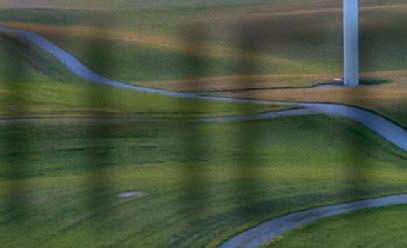
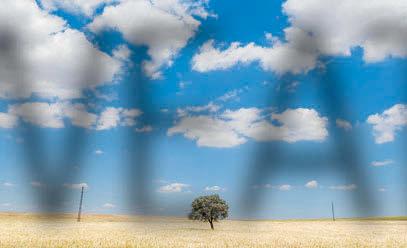


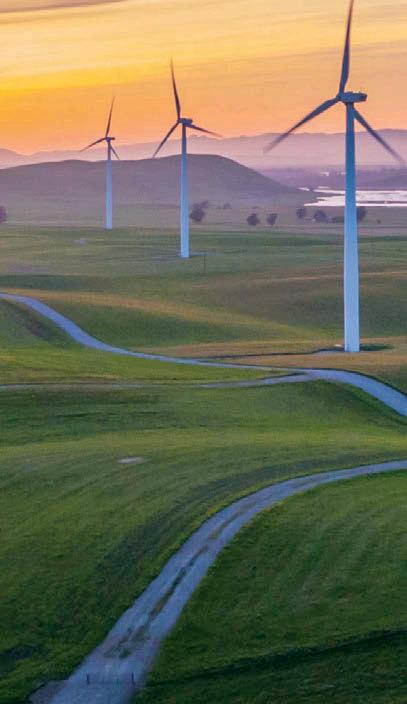

( https://www.ncdc.noaa.gov/customer-support/partnerships/regional-climate-centers )



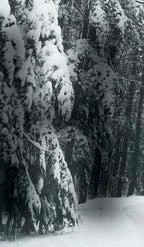


An always current resource for sod producers is the Crop Condition and Soil Moisture Analytics (Crop-CASMA), a web-based tool to help visualize soil moisture and crop vegetation conditions. It was designed and developed by the National Agricultural Statistics Service (NASS) in collaboration with the U.S. National Aeronautics and Space Administration (NASA) and the George Mason University (GMU) Center for Spatial Information Science and Systems. This tool is free to the public and available at: https://cloud.csiss.gmu.edu/Crop-CASMA/. Crop-CASMA is not available for print because it is a web-based cloud image that constantly changes.


66 TPI Turf News September/October 2022
Experience the of Trebro!POWER







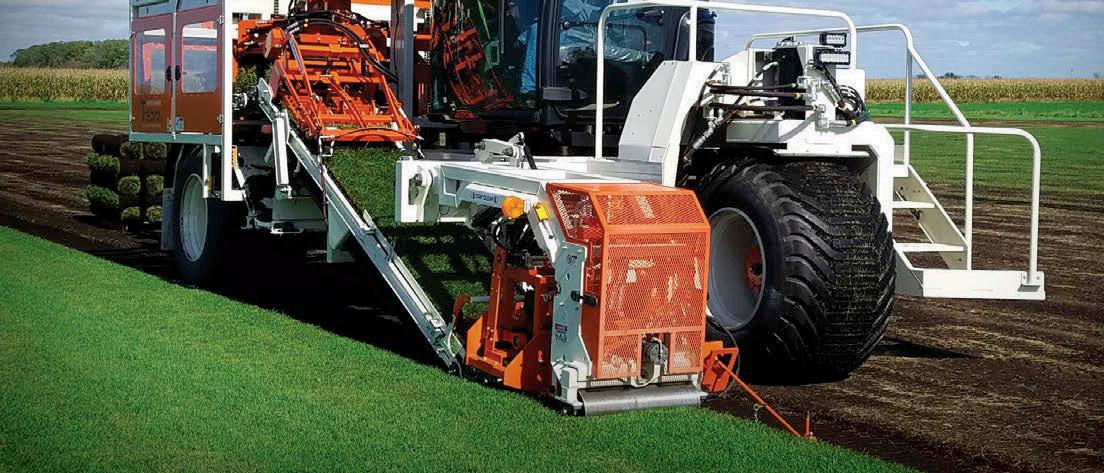








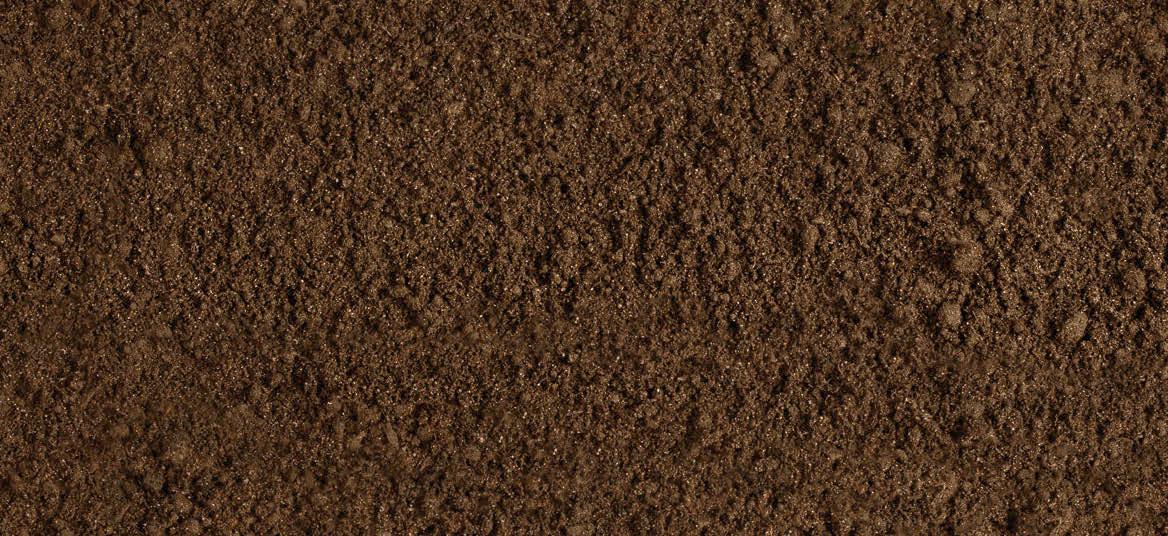

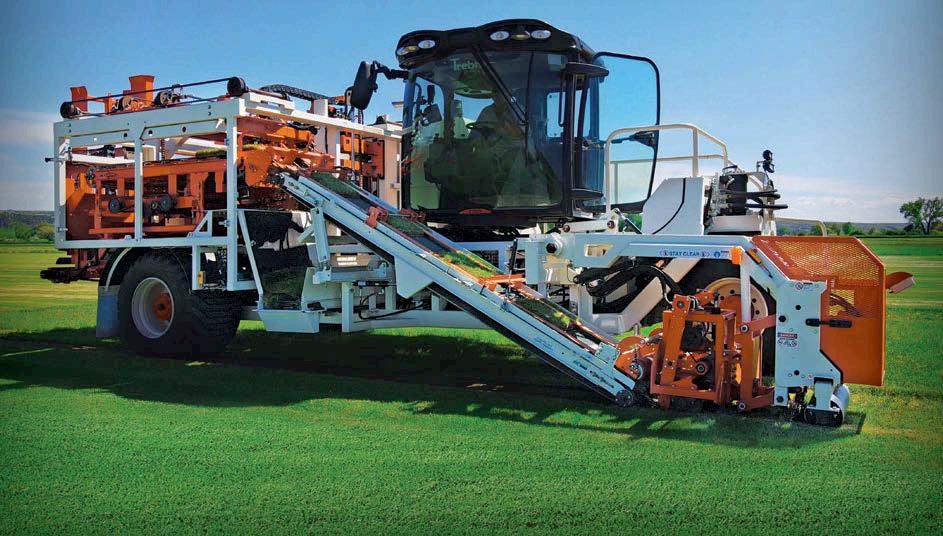





67TPI Turf News September/October 2022 888-395-5867 • 406-652-5867 • www.trebro.com Every Trebro machine is an industry-leading workhorse engineered to boost production and profits. To experience it yourself, call Trebro today! Introducing the revolutionary new AutoStack 3 Turf Harvester! This high-production machine combines all of the best features from the previous two AutoStacks and TSR, and then adds a long list of new innovations that help produce higher volumes while being easier to operate and simpler to maintain. The AutoStack 3 truly takes “ultimate” to the next level! AutoStack 3
Industry-leading technology to boost efficiency and reduce labor costs. Trebro-TSR Trebro-TSS Upgraded for faster turf production and extreme reliability. NEW UPGRADES TM TM TM
FROM FARM TO CAPITOL: KEITH TRUENOW’S POLITICAL ROOTS RUN DEEP IN AGRICULTURE
By Cecilia Brown
Keith Truenow, TPI member and founder of Lake Jems Farms in Mount Dora, Florida, was elected to the Florida House of Representatives for District 31 in November 2020 and is currently up for re-election this November. Truenow now addresses agriculture issues from a seat at the state capital.
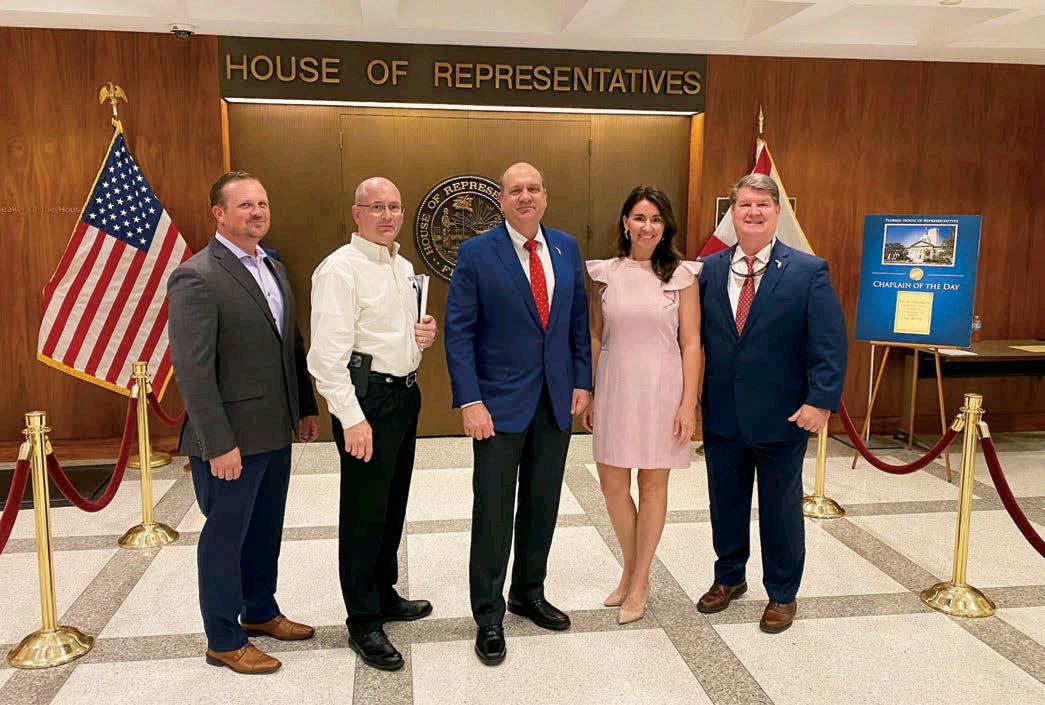
While Truenow has not been as involved in day-to-day operations of Lake Jems Farm since he became a state representative, he still oversees business development and things that are essential to the building blocks of the organization.
He had been engaged in politics for years prior to his election, working with state governmental agencies on issues impacting agriculture. In the early 2000s, a key area of focus was for the Best Management Practices (BMP) program for turfgrass.
He said taking the oath to uphold the Constitution was “really humbling” recognizing the honor of becoming “a representative of the people in your district and of the people of Florida.”
Truenow shared that the highlight of his first year in office was running a bill called the Florida Wildlife Act, which preserves land throughout the state noting, “It was an honor to do it and I understood the bill really well because I’m a farmer.”
Another piece of legislation passed during 2020 legislation was the Right to Farm Bill. “That was monumental. As a whole, or part, we perpetuated Florida agriculture better than most states. At the same time, we took monies we were receiving and put them to good use in trying to conserve what Florida is,” he said.
In March, Truenow helped in the passing of the Golf Course Best Management Practices Certification, also known as House Bill 967, which went into effect on July 1, 2022, to protect the industry by educating applicators on proper fertilizer and water usage.

“Like any BMP, the importance of science and technology in helping us form solutions to everyday problems is important. This is a working document that we can change but which also gives guidance to all parties,” he said. “Essentially this is a blueprint that all municipalities and governments will go by so they can understand how a golf course is maintained and works so they don’t end up having multiple layers of regulation, we’ll have one common blueprint.”
Truenow said the state has already created similar bills for many commodities, so adding golf courses was not an
Truenow worked closely with other industry leaders, including those pictured, to ensure passage of the Golf Course Best Management Practices Certification bill. Pictured at the Florida capitol in March 2022 to acknowledge that achievement are (from left) Jonathan Germeroth, Lake Jem Farms; Dr. Bryan Unruh, the University of Florida; Florida State Representative Keith Truenow; Sod Solutions Executive Director of Business and Professional Development Erin Wilder, and Sod Solutions President Tobey Wagner.
anomaly, it was just the right thing to do. Now, they’re currently working on legislation similar to the BMP that would help municipalities with set rules and regulations for landscaping, irrigation, and fertilizer use.
As for the next steps, Truenow said he’s taking it one session at a time and seeing where things go. “Whatever I do, I want to be effective and work hard to promote agriculture and promote business and property rights and make Florida a better place all the way around.”
Truenow said there have been good insights for him as a representative looking into how the government regulates and performs. “Being a part of that is important and I think they need to understand that from a firsthand view. “It just goes to show you that anyone can make a difference in the process. I think we, as an industry, have always been engaged. This is just a different level of engagement and I think it’s very important,” he said.
Truenow said it is vital for sod producers to participate a little more in science and technology. “We need to do what we can, even if it may be financially difficult. We face such difficulties every day anyway. But sometimes we take for granted someone who is going to take care of us, and I think we need to make sure that the next generation is set up in the right way so that they too can enjoy agriculture into the future.” .”
Cecilia Brown is media & content manager for Sod Solutions, based in the Charleston, SC, area.
Photo courtesy of Sod Solutions
68 TPI Turf News September/October 2022


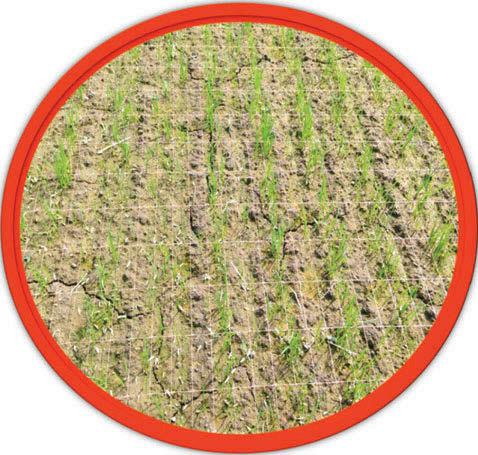
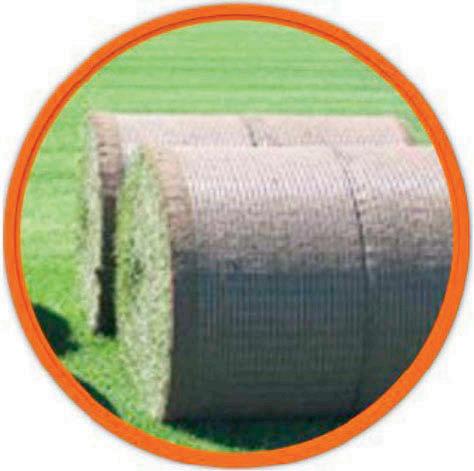
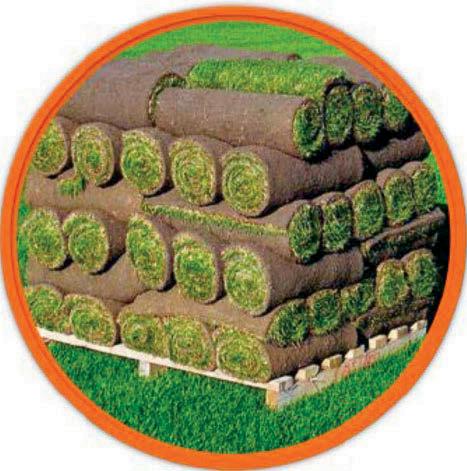
HAPPENINGS
Long-time Member
Vivienne M. Keeven Passes

Vivienne M. Keeven (nee Strunk), of Moscow Mills, Missouri, passed away on Sunday, July 3, 2022, at the age of 91. Beloved wife of the late Edwin B. Keeven, Sr.; loving daughter of the late George and Vivien (nee Anderson) Strunk; devoted mother of Vivian S. (the late Wayne) Prinster, Barbara (James) Foster, Edwin “Eddie” (Kathy) Keeven Jr., Judy (Steve) Schneider, the late Tom (Dana) Keeven, Marty (Pam) Keeven, Jeanne (Ed) Idziak, and Jim (Kathy) Keeven; cherished grandmother of 23; treasured great-grandmother, “GiGi” of 48; dear sister of Aileen (the late Bob) Derhake, Gordon (the late Iris) Strunk, and Carole (Jim) Farmer. She was also preceded in death by her two brothers, George “Bud” Strunk, and Marvin Strunk. Vivienne was a loving aunt to numerous nieces and nephews and a friend to many.
Vivienne was a woman of faith and belonged to the Sacred Heart Catholic Church of Troy, Missouri, where she was a member of the Ladies Sodality. She was also a charter member of TPI (Turfgrass Producers International) and a lifetime member of Ducks Unlimited. Vivienne worked with her late husband, Ed, in their turfgrass business for 33 years. Alongside Ed, she travelled, especially to Florida, and went hunting, fishing, and golfing, just to name a few of the activities they enjoyed together. Vivienne had a passion for biology and the outdoors. She was an avid gardener and loved cooking meals for her family. She was known for her potato cakes and her wild duck at Thanksgiving dinners. More than anything, Vivienne was devoted to her family. Vivienne was dearly loved and will be greatly missed by all who knew her.
Evening visitation was held at Baue Funeral Home in Baue Cave Springs, MO, on July 13, and prior to the Funeral Mass at Sacred Heart Catholic Church in Troy, MO, on July 14. Memorials may be made in Vivienne's name to St Vincent De Paul Sacred Heart Church in Troy, Missouri.
Vivienne’s husband, Edwin B. Keeven, Sr., passed away on July 27, 2013, at the age of 86. Noted in his obituary, “His favorite past times were hunting and fishing, but his passions were truly God and his family.”
The Keeven family’s turfgrass business began in 1951, when Edwin (Ed Sr.) and Vivienne Keeven started installing sod in Florissant, MO, as Ed Keeven Sod, Co., Inc. As the business grew, the Keevens decided to become growers as well. In 1963, Ed and Viv moved to O’Fallon, MO, and started a 120-acre turfgrass farm.
Typical of sod farming families, the kids worked in the fields during the summer and in the mornings and evenings during the school year. Thus, Ed and Viv were not only great role models, setting high standards as parents, but also excellent teachers and mentors.
The TPI connection has deep roots for the Keeven family, going back to the formation of the Association. Ed and Viv were smart and forward-thinking businesspeople, always open to new ideas and developing strong networking connections. Thus, Ed Keeven Sod Co., Inc., O’Fallon, Missouri, is listed among the American Sod Producers Association Charter Members in the ASPA Archives, dated March 27, 1968. (ASPA was renamed Turfgrass Producers International in 1994). The couple attended many meetings over the years, making life-long relationships. And, of course, their family came with them, forging their own connections that would later grow to leadership roles within the association.
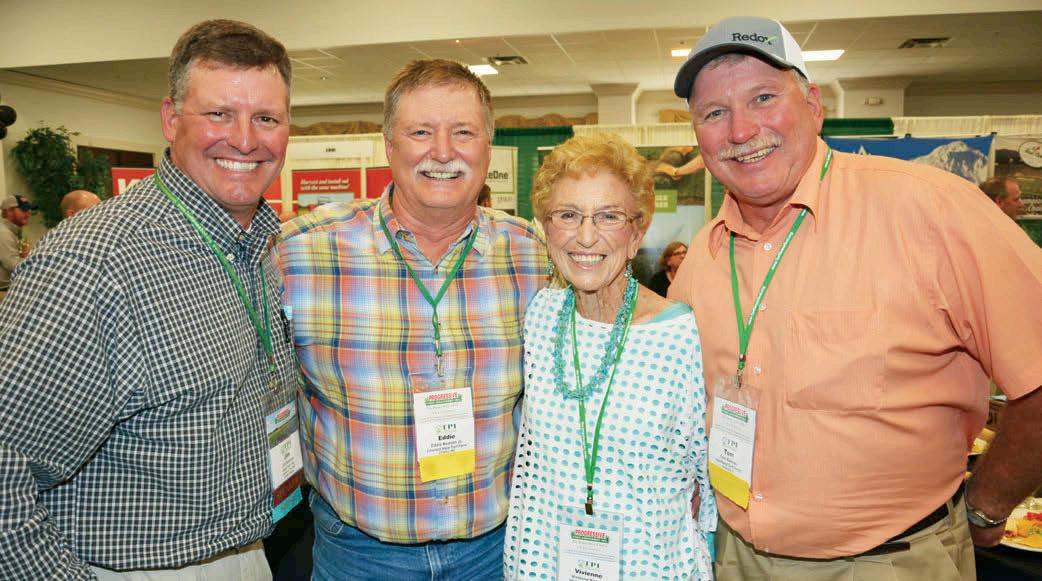
By 1973, Ed Keeven Sod, Co., Inc., had grown to nearly 400 acres. Ed and Viv dissolved the installation business to commit solely to growing and selling top quality turfgrass. In 1984, the three brothers that had joined the family business and invested into it—Eddie, Tommy, and Jim—bought the turfgrass farm from their parents, operating as Emerald View Turf Farms.

As the second generation, the three brothers worked together as one company for 27 years, growing the business to over 1,500 acres in three locations. As the third generation became more involved, the brothers decided to divide the business to make room for them. Though each brother had their own location and were running their farms pretty much by themselves, there were multiple legal and financial details to consider. They made the division in 2011, compromising throughout the process, to “divide the company and not divide the family.” Those companies and family ties remain strong as ever, throughout economic and environmental challenges, and the loss of Tommy to cancer in September of 2020.
The families’ involvement in TPI has remained strong as well. Jim is the third Keeven brother to serve as TPI President. Tom served in 2001-2002 and Ed, Jr. (Eddie) served in 2014-2015. From the Keeven family to the TPI family, “The outreach to our family was exceptional, a tribute to the many people that Mom and Dad touched during their lives, and an outpouring of support and love that touched our hearts. Words don’t begin to express how much it meant to us during this time.”
70 TPI Turf News September/October 2022
The three TPI Keeven Brothers pose with their mother at TPI’s celebration of 50 years, in Tampa. L-R: Jim, Eddie, Vivienne, and Tom Keeven.

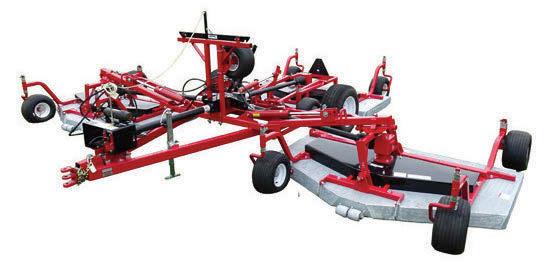
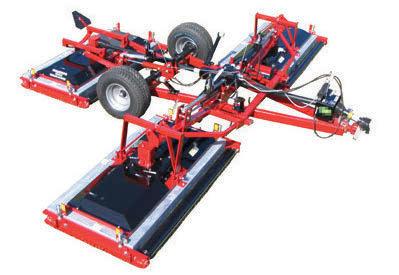

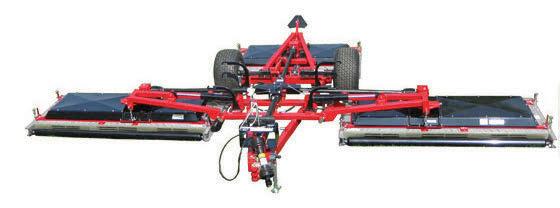
WWW.PROGRESSIVETURFEQUIP.COM www.ProgressiveTurfEquip.com TD-92™ TDR-30™ TDR-26™TDR-22™ 800.668.8873 Quality built in North America and supported by a world-wide Dealer network.
HAPPENINGS
Dr. Kevin Kenworthy to receive Crop Science of America’s Teaching Award
A couple of Tweets shared the news that TPI member Dr. Kevin Kenworthy, University of Florida Agronomy Department, will be receiving a prestigious award in November.
Tweet from Dr. Bryan Unruh @jbunruh on July 1:
Working with cool people is cool! Congrats to my colleague @kekenworthy who will receive the Crop Science Society of America’s Teaching Award in November! This award is given to those that characterize excellence in classroom teaching of crop science. @UFIFASAgronomy @UFTurfTeam
Retweet from Sod Solutions @SodSolutions on July 7:

Dr. Kenworthy is an industry leader and well-respected scientist. More importantly he shares his passion and knowledge through teaching and has major impact on students and promotion of beneficial natural grass. He is well deserving of this award.
Congratulations!
Turf News plans to provide more information after the award is presented.

NALP Members Again Gather for Renewal & Remembrance
The event, Renewal & Remembrance, took place this year on July 18. In coordination with the National Park Service and the Trust for the National Mall, approximately 335 landscape professionals worked to help preserve the plants around the Lincoln Memorial by creating beds around the existing plants and mulching.
Around 130,000 pounds of mulch was applied around boxwoods, American Hollies, Southern Magnolias, and yews.
Another 165 volunteers served at Arlington National Cemetery, where they conducted turf enhancement projects, handled irrigation repair and upgrades at the Columbarium, and installed lightning protection for six historic trees.

This year also marked the return of the Children’s Program, which was paused during the pandemic. Volunteers’ children aged 12 and under participated in activities specifically designed for them at both volunteer sites. At ANC, children watched the wreath laying at the Tomb of the Unknown Soldier and then planted annuals at the Kearny Monument. Meanwhile, at the Lincoln Memorial, children were dubbed junior rangers and were educated about some of the National Mall’s monuments.
Support Veterans and Military through VETS1 Virtual 5K
TPI member SiteOne® Landscape Supply’s 2022 VETS1 Virtual 5K fundraiser will support veterans, military, and their families. VETS1 promotes an environment of diverse and engaged associates while developing SiteOne’s understanding of and relationships with Veteran associates, customers, and communities.
All proceeds of the race benefit Feherty’s Troops First Foundation to support the wellness and quality of life for post 9/11 combat-injured warriors. “We are privileged to bring the SiteOne community together to honor our military,” said Chris Nickelson, VETS1 President and SiteOne Area Sales Manager.
Approximately 500 landscape professionals from 27 states gathered for the annual Renewal & Remembrance event on July 18, 2022.
Photo by Lisa Stryker / NALP
The following is excerpted from an NALP Article by Jill Odom.
Over the past 26 years at Arlington National Cemetery, and more recently on the National Mall, National Association of Landscape Professionals (NALP) members have contributed more than 50,000 hours of volunteer labor, put thousands of tons of lime on the turfgrass, protected more than 100 historic trees with cabling and lightning protection, added landscaping, and improved many irrigation systems.
Feherty’s Troops First Foundation is a non-profit organization founded by Rick Kell and David Feherty in 2008 with a mission to develop, operate, and support wellness, quality of life, and event-based initiatives for post-9/11 combat-injured military personnel. “Partnering with SiteOne brings incredible awareness to our efforts of facilitating a greater recognition of the quality and character of those who volunteer to serve,” said John Ablon, Chairman of Feherty’s Troops First Foundation. www. TroopsFirstFoundation.org
This year’s theme is Battle of the Branches. Participants will select which SiteOne branch to support and which branch of the military to represent. The 5K can be completed in any location between October 1 and November 11, 2022.
72 TPI Turf News September/October 2022
High quality, low input turf varieties.

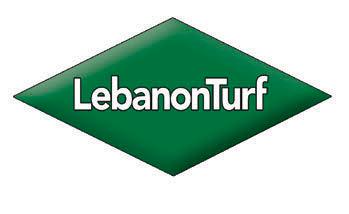


STANDARD VARIETY
A-LIST
Use 40% less water without sacrificing turf quality with A-LIST approved varieties.
The A-LIST is an independent, non-profit, industry initiative, fostering development of sustainable turfgrass varieties and related products that perform their function with less maintenance inputs, thus benefiting the environment. A-LIST monitors a voluntary evaluation program including metrics like water conservation, reduced fertility and traffic, heat, and drought stress tolerances, all with no fungicide or insecticide applications.
Products that meet the acceptance criteria can utilize the A-LIST Approved symbol in their marketing and receive the A-LIST Approved tag for use in packaging.
To become an A-LIST Approved Variety, a variety must have demonstrated superior performance in A-LIST trials as defined by:

The top LSD group for drought tolerance as measured by percent green cover for each of two years in at least two locations.
Acceptable or better turf quality for each of the two years in at least two locations.
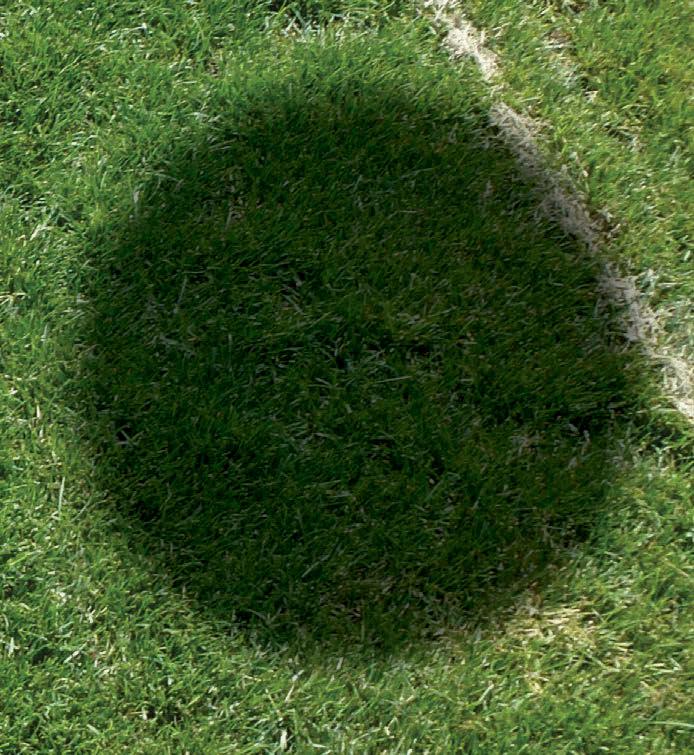
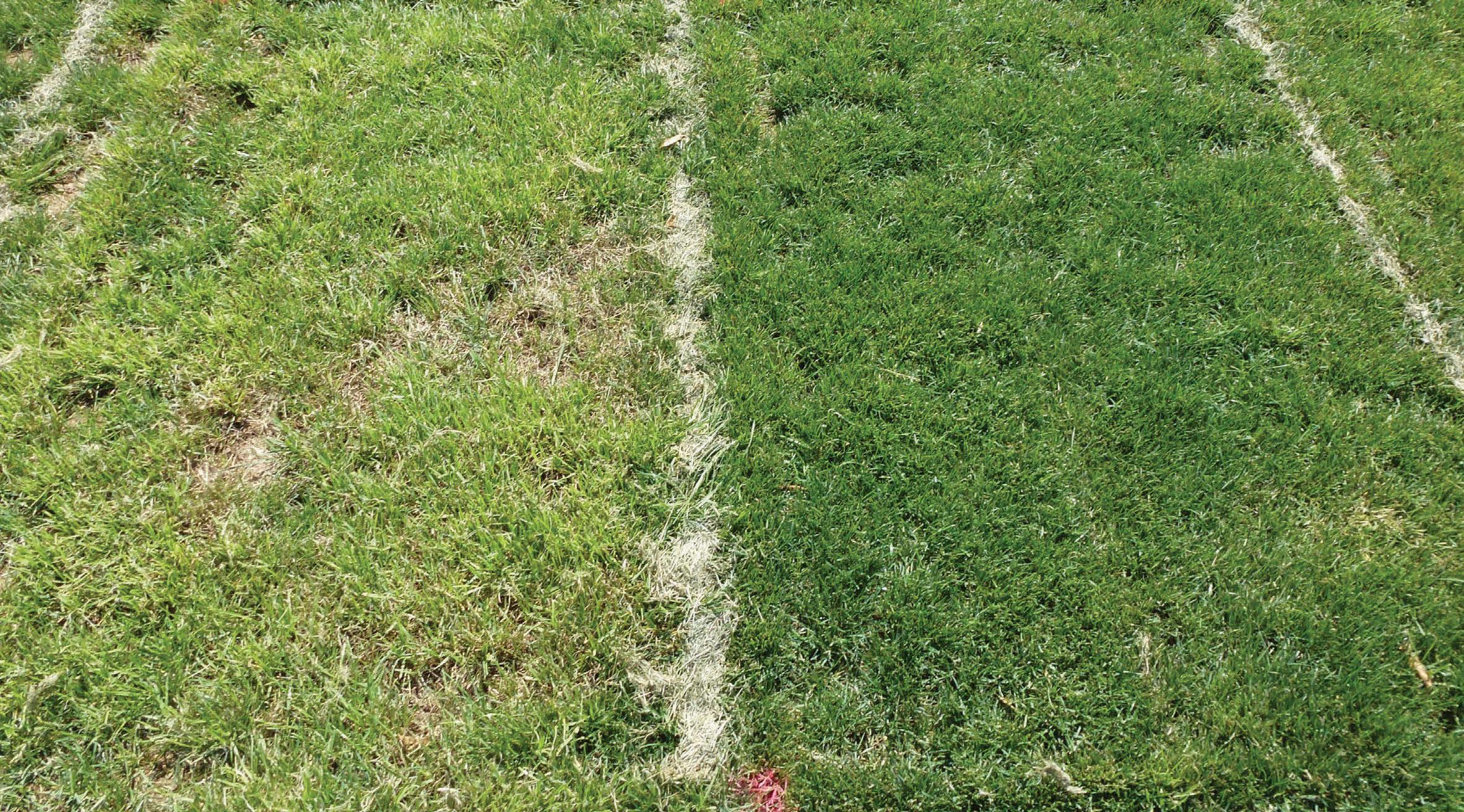
Have been entered into an NTEP trial for the species. For new cultivars that have met the approval standards for performance in A-LIST trials, final approval will be withheld until the cultivar(s) have been entered into an NTEP trial.
FOR APPROVED VARIETIES VISIT WWW.A-LISTTURF.ORG

APPROVED VARIETY
ALLIANCE F OR LOW INP U T SUSTAINAB L E TURF
Members
TURFGRASS INDUSTRY NEWS

DLF Acquires Premier Pacific Seeds
DLF announced that it has acquired Premier Pacific Seeds Ltd. (PPSL), a forage, cover crop, reclamation and turfgrass wholesale seed company located in Surrey, BC, since 2001. Prior to the acquisition, DLF Pickseed USA held 40 percent of PPSL’s shares.

“Since 2002, DLF has been a strategic partner of ours, so the acquisition naturally made sense,” said Annette Roy, general manager and one of PPSL’s founders. “With DLF’s extensive research and development network it will give us greater access to industry-leading, new generation grass seed varieties. This is a positive investment in British Columbia’s forage and turf sectors and will enhance our opportunities to serve our customers.”
David Wall, former co-owner, will be retiring from his role as PPSL president, the job that he held for more than 20 years. Annette Roy, industry seed expert with more than 35 years of experience, will remain manager of the seed company, and DLF will retain the PPSL’s employees. The acquisition includes PPSL’s blending and packaging equipment, and operations will remain in the same location.
“We are proud to partner with Valley Irrigation and the landowner to have the first Valley solar-powered pivot in North America and specifically on one of the farms we manage for a landowner,” says Matt Gunderson, senior vice president of strategy, sales & marketing for Farmers National Company. “The opportunity to invest into the farm while the landowner receives additional income from the excess power sold back to the power district makes it a win-win.” The installation will provide solar power to a Valley center pivot by offsetting energy consumption used to irrigate the field. The components/inverters will provide greater than 94 percent efficiency in converting direct current energy into alternating current energy. The pivot size and configuration will produce green renewable energy for the next 25 to 35 years, equaling the lifespan of the pivot. It will also produce recurring revenue for the landowner through a buy/sell agreement with the local utility group.
USDA ERP Deadline Extended and More Pre-Filled Forms For 2020 and 2021 Disasters on the Way
The U.S. Department of Agriculture (USDA) announced on July 27 that it will indefinitely extend the deadline for producers to return the pre-filled applications for Phase One of the Emergency Relief Program (ERP). A new deadline will be announced after the last Phase One applications are mailed and provide at least 30 days following the mailing. For more information on ERP eligibility, program provisions for socially disadvantaged or historically underserved producers, as well as Frequently Asked Questions, Noninsured Crop Disaster Assistance Program (NAP) applicants can visit FSA’s Emergency Relief webpage at the link that follows. The program fact sheet can be accessed from that webpage.
Valley Irrigation Completes First North American Ag Solar Installation
As reported by ir rigationtoday.org News Harvest on July 26, 2022, TPI member Valley Irrigation, Valley, Nebraska, has partnered with Farmers National Company, a land and mineral management firm, to complete the company’s first ag solar installation within North America. The installation, which is in South-Central Nebraska on a farm managed by Farmers National Company, will provide sustainable power to the landowner by efficiently converting the sun’s rays to clean energy.
The Ag Solar group within Valley has an international footprint with more than 700 solar installations worldwide. “We’re proud to be able to provide growers in North America with engineered solar solutions, particularly by collaborating with our valued and long-term partner Farmers National Company, a company that shares our same sustainability and environmental goals,” says Darin Sothers, director of key accounts at Valley Irrigation.
https://www.fsa.usda.gov/programs-and-services/emergencyrelief/index
Additional USDA disaster assistance information can be found on farmers.gov, including the Disaster Assistance Discovery Tool, Disaster-at-a-Glance fact sheet, and Farm Loan Discovery Tool. For FSA and Natural Resources Conservation Service programs, producers should contact their local USDA Service Center. For assistance with a crop insurance claim, producers and landowners should contact their crop insurance agent.
U.S. Supreme Court Curbs EPA’s Climate Powers
According to a posting on thehill.com on June 30, the U.S. Supreme Court issued the ruling that curbed the Environmental Protection Agency’s (EPA’s) ability to regulate climate change, setting limits on how the agency can deal with power plants.
In a 6-3 decision, the majority ruled that Congress did not authorize the EPA to induce a shift to cleaner energy sources using the approach that an Obama-era regulation sought to.
Continued on page 76...
74 TPI Turf News September/October 2022
DLF and PPSL team together in the PPSL Office in Surrey, BC.



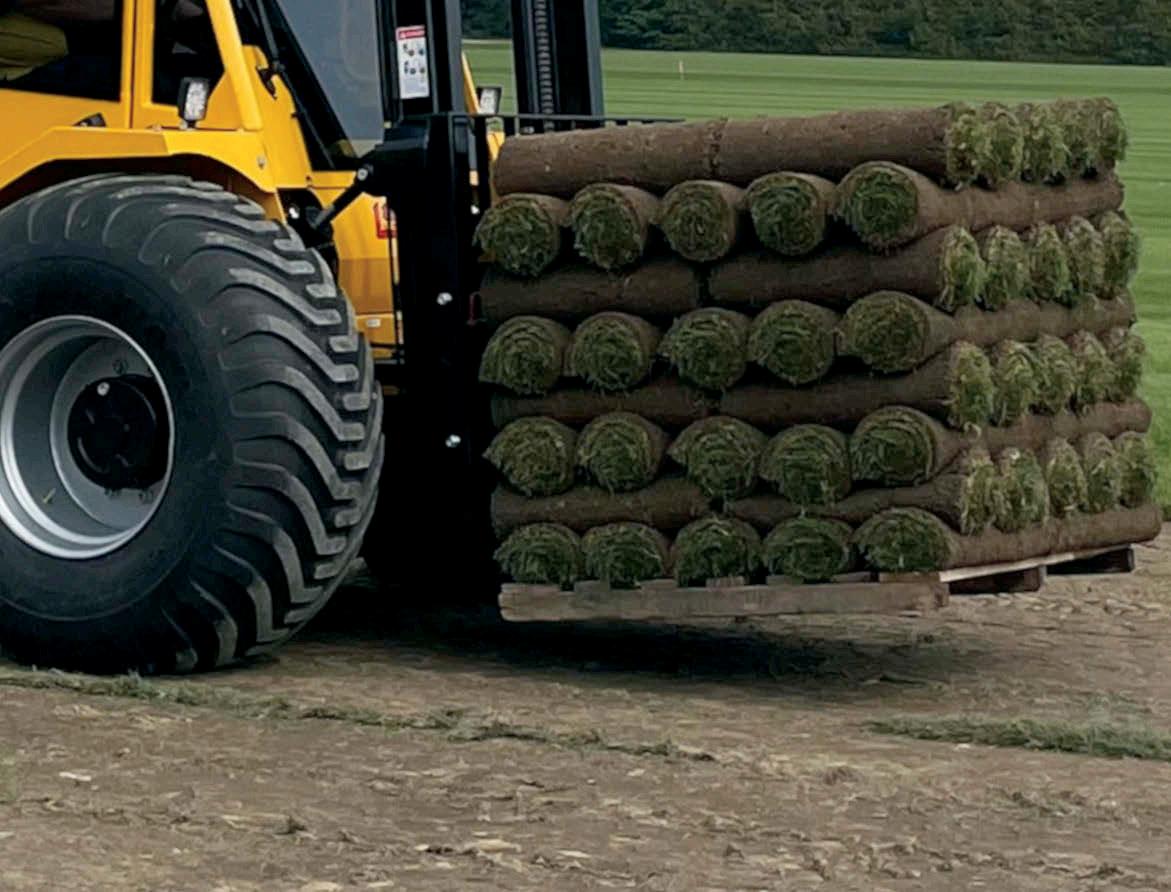



TURFGRASS INDUSTRY NEWS


“Congress did not grant EPA…the authority to devise emissions caps based on the generation shifting approach the Agency took in the Clean Power Plan,” the majority wrote, referring to an Obama-era power plant regulation.
At issue in the case was language in the Clean Air Act that enables EPA to regulate power plants using a “best system of emissions reduction” and what specifically that system can entail. The majority opinion, penned by Chief Justice John Roberts, determined that the Obama administration’s use of a system that involved moving away from carbon-intensive coal plants and toward natural gas and renewables did not qualify. Roberts wrote that the plan, which involved regulating the power system as a whole instead of regulating individual plants, was an “unprecedented” view of the EPA’s authority that involved a “fundamental revision of the statute, changing it from [one sort of] scheme of . . . regulation” into an entirely different kind.
In Thursday’s ruling, the court took a regulatory tool off the table for the Biden administration, which is currently working on its own power plant regulations. The full post can be found at: https://thehill.com/policy/energy-environment/3542545supreme-court-curbs-epas-climate-powers/?
U.S. Supreme Court Rejects Bayer Bid to Nix Roundup Lawsuits
According to a June 21 Reuters report, the U.S. Supreme Court rejected Bayer AG's bid to dismiss legal claims by customers who contend its Roundup weedkiller causes cancer as the German company seeks to avoid potentially billions of dollars in damages. The justices turned away a Bayer appeal and left in place a lower court decision that upheld $25 million in damages awarded to California resident Edwin Hardeman, a Roundup user who blamed his cancer on the pharmaceutical and chemical giant's glyphosate-based weedkillers.
The Supreme Court's action dealt a blow to Bayer as the company maneuvers to limit its legal liability in thousands of cases. The justices have a second petition pending on a related issue that they could act upon in the coming weeks. U.S. President Joe Biden's administration in May urged the court not to hear the Bayer appeal, reversing the government's position previously taken under former President Donald Trump.
Bayer has lost three trials in which Roundup users have been awarded tens of millions of dollars in each, while also winning four trials. Bayer had pinned hopes for relief on the conservative-majority Supreme Court, which has a reputation for being pro-business.
Bayer said it "respectfully disagrees" with the court's decision and that the company is "fully prepared to manage the litigation risk associated with potential future claims in the U.S."
Bayer said in its March annual report that it had resolved about 107,000 cases out of about 138,000 cases overall. Bayer, which also makes aspirin, Yasmin birth-control pills, and the stroke prevention drug Xarelto among other products, has argued that the cancer claims over Roundup and glyphosate go against sound science and product clearance from the EPA. The agency has upheld guidance that glyphosate is not carcinogenic and not a risk to public health when used as indicated on the label.
IA, CLCA, NALP Webinar Tackles California Water Rest rictions
According to a June 7 article in Irrigation & Lighting magazine, more than 600 people attended a June 6 webinar co-hosted by the Irrigation Association (IA), the California Landscape Contractors Association (CLCA), and the National Association of Landscape Professionals (NALP), which broke down California’s new water restrictions enacted to combat the state’s ongoing drought. The virtual event featured panelists Maureen Erbeznik, principal at Maureen Erbeznik and Associates, Los Angeles, and Peter Estournes, CWM, CLP, CLIA, vice president and principal of Gardenworks Inc., Healdsburg, California. Warren Gorowitz, CLIA, director of corporate social responsibility, Hunter Industries, San Marcos, California, served as the webinar’s moderator.
Erbeznik highlighted the dire position California is in following extended, record-breaking drought and aridification. The state receives much of its water from snowpack, but as temperatures continue to increase, the water is absorbing into the soil and evaporating at a higher rate. Couple this dryness with increased water use statewide, and California adds more pressure on its already low — and in Southern California, emergency-level — water supply. All California residents are being asked to voluntarily cut water use by 15 percent and are banned from watering nonfunctional turf in commercial, industrial, and institutional properties for one year, as of June 6. This watering ban does not impact single family homes. Exemptions to this ban include watering trees or turfgrasses with a plant factor of 0.3 or less, if non-potable water is used, and if watering is required for health and safety reasons.
California’s more than 400 water agencies are responsible for enforcing these water restrictions in their designated areas, and restrictions vary by each retailer. You can watch the full webinar on the Irrigation Association’s YouTube channel at youtu.be/YkgiBOf7-lo
76 TPI Turf News September/October 2022


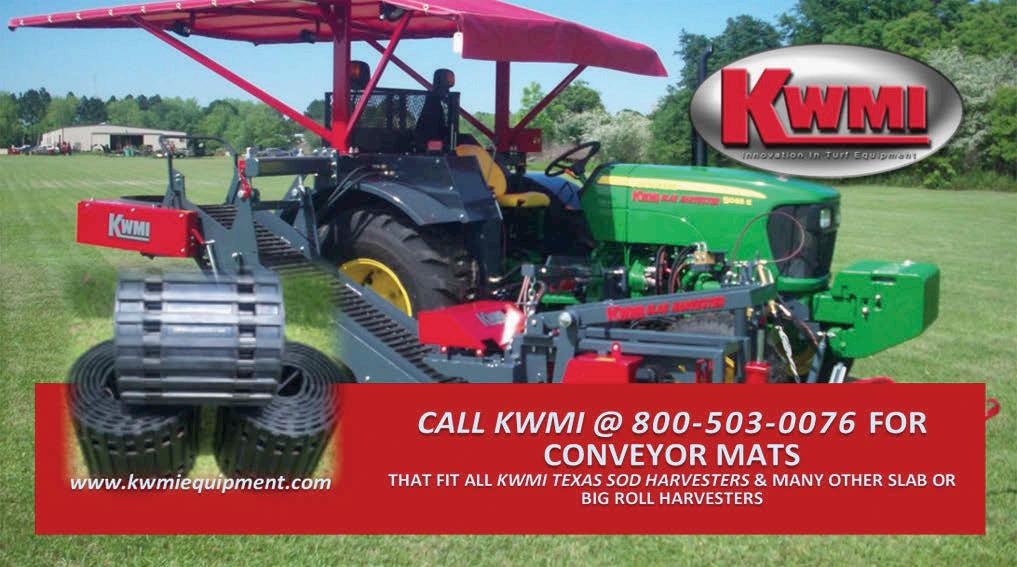
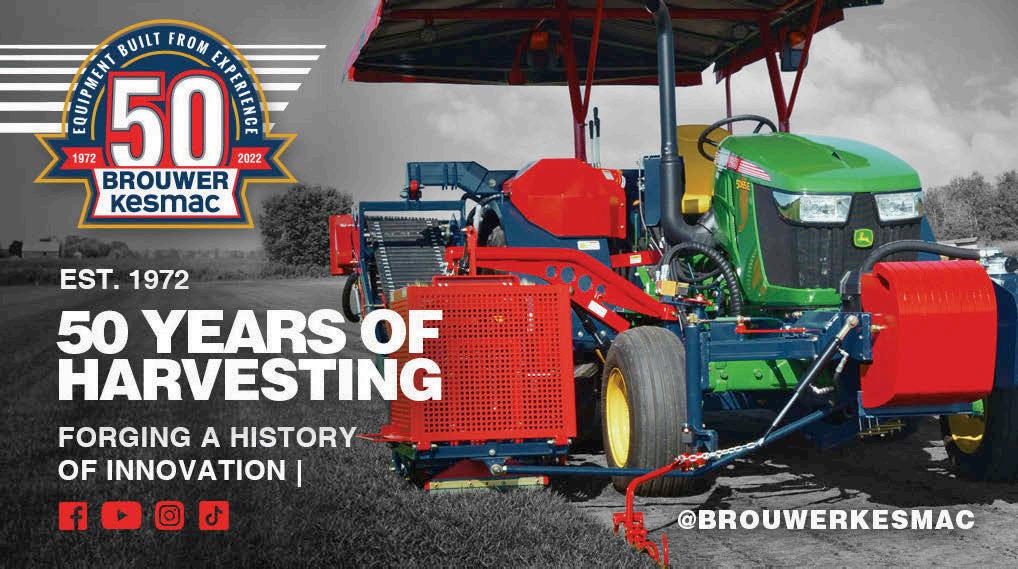


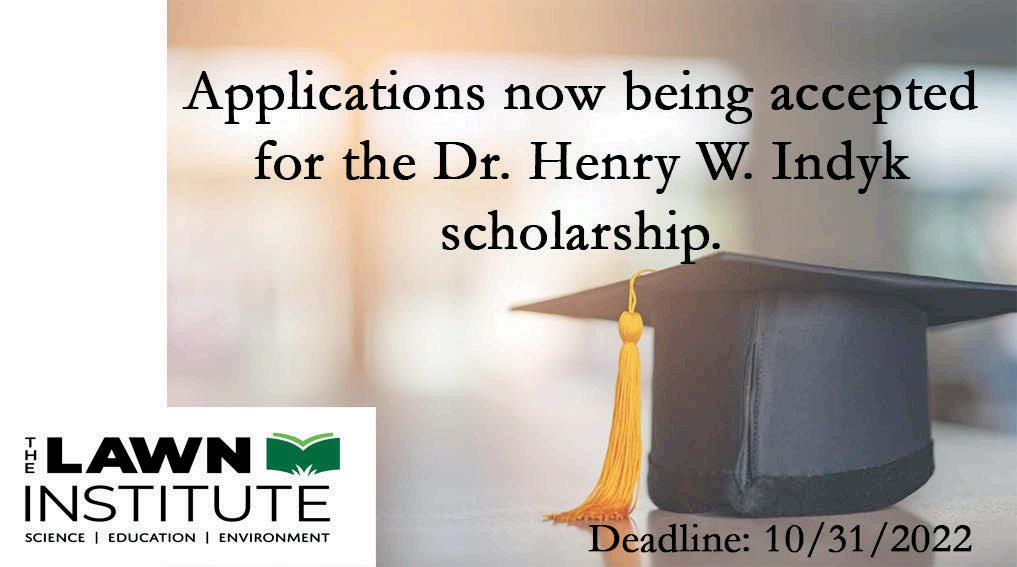

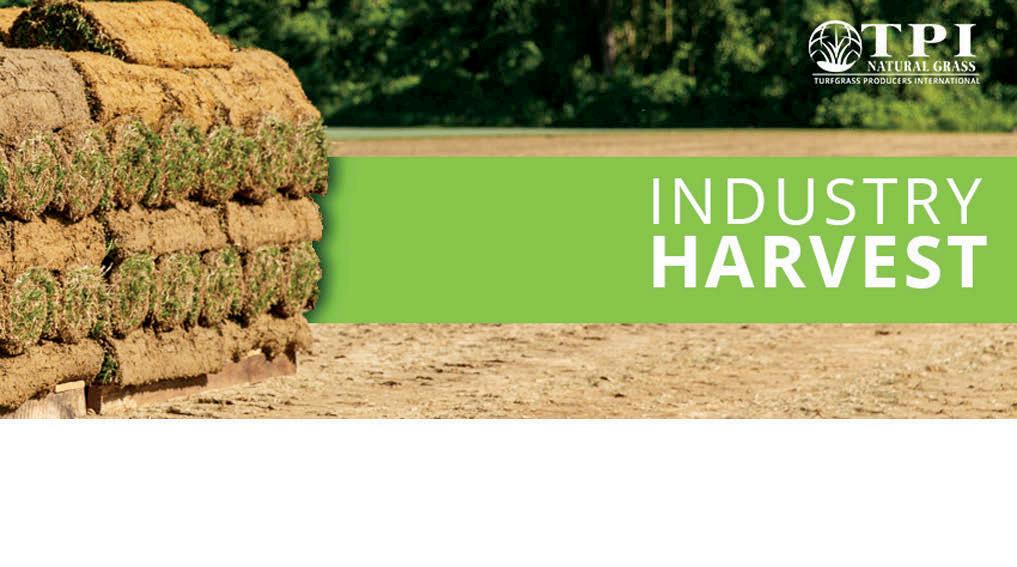
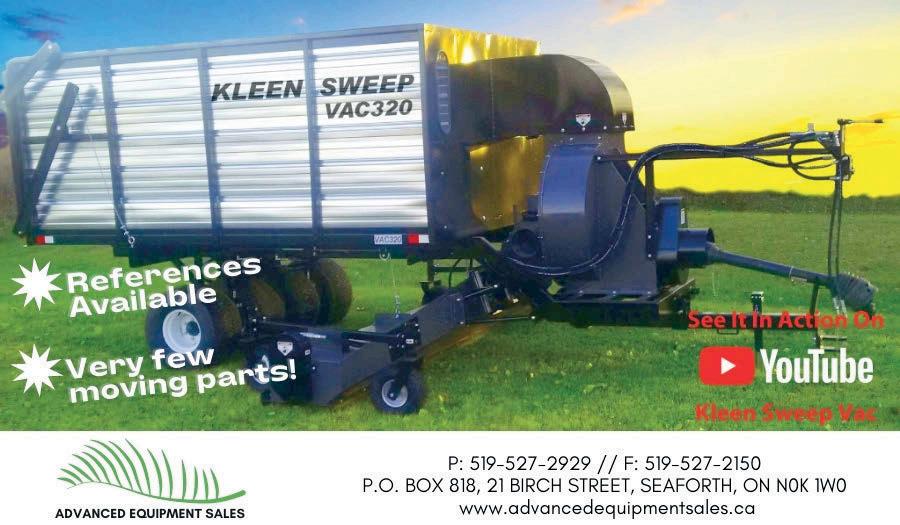
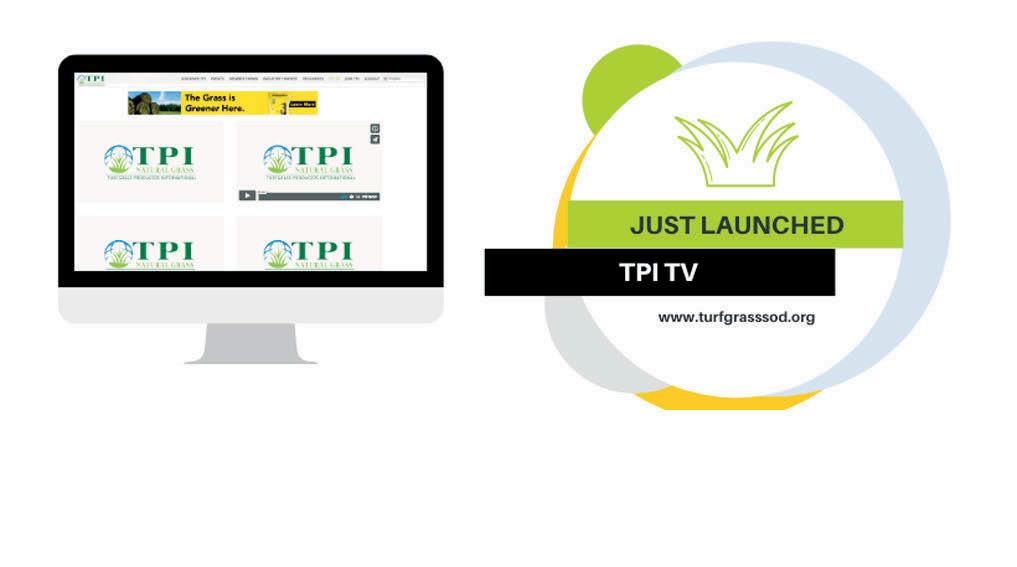

77TPI Turf News September/October 2022 TURF MARKETPLACE TOP QUALITY MACHINERY FOR TURF GROWERS - www.trilo.com Telephone: North America 864.332.9776 - Rest of the world +31 (0)33.456.4550 Visit www.TurfGrassSod.org
CLASSIFIED ADS
HELP WANTED: Mechanic with sod harvester experience. Machines used at our farm are Kesmac and Brouwer handstack machines and Brouwer Robomax machines. Job located just outside Boise, ID. Please email dispatch@cloverdalenursery.com or call 208562-5490 for more information.

FOR SALE: 2019 Trebro TSR Autostack 24" mini roll. Like new with only 960 operation hours on machine. Serial # TSR-124. Uses regular size pallets, no need for special pallets. Cuts 10,000' per hour. Asking $300,000, FOB, Searcy, AR 72145 Please contact George at 501-729-5691 or email georgefriedrich44@gmail.com.
FOR SALE: Wolf Creek Sod Farm located in Strasburg, Arapahoe County, Colorado. The Wolf Creek Sod Farm is comprised of 305+ acres of prime Arapahoe County farmland. The property has paved road access, ample water, a mechanical shop, hay barn, and office. This incomeproducing property will make an immediate return and be a strong, longer-term development opportunity. Price –$3,200,000. Please contact Scott Shuman at 800-829-8747.
FOR SALE: 6T Dalton Ag Products Mobility 600. Has Ag Leader module for rate control and spinner speed. Has DigiStarr weigh bars. Been kept in very good condition. Selling because we upgraded to a larger spreader. Asking $6,000 Please contact Sarah at sarah@bgsod.com or 319-842-2165.
FOR SALE: Fertilizer spreader calibration kit. This kit has b een amazingly helpful on our farm. We have two of them but have decided we only need one moving forward. This kit includes everything you need to examine your spreaders throw pattern (and subsequently make adjustments) to eliminate streaking in your field from uneven distribution. Originally around $500 new. Asking $300. Please contact Sarah at sarah@bgsod.com or 319-842-2165.
HELP WANTED: Turf Farm Production Manager. Central Florida turfgrass producer is looking for an experienced production manager to oversee all production aspects of the farm. Must be an energized and motivated people person, a team player and a leader who can communicate and collaborate in a team environment. Compensation based on relevant experience/education in turf production. More Details can be found at https://floridaturf.com/ jobs-classifieds/ Send questions and resumes to tpfemploymentopportunities@gmail.com.
TPI CLASSIFIED ADVERTISING—TARGETED TO TURFGRASS PRODUCERS WORLDWIDE
Buying or selling equipment, supplies, properties, or looking for employees or employment opportunities?
TPI classified advertising is the answer! Reach your target market with a free or low cost classified ad in Turf News magazine and on the TPI website at www.TurfGrassSod.org
The classified ad section is the first place many TPI members look when they receive the most recent issue of Turf News magazine and the most viewed area on the TPI website. All classified ads are posted to the TPI website within 24 hours of approval and featured in the next issue of Turf News!
TPI Member: FREE / Non-Member: $50
Rates are determined in one-inch vertical increments. Please estimate approximately 65 words per inch. Photos are limited to the website and no more than two photographs per ad.
View full details at: www.TurfGrassSod.org/classifieds


Deadline: 30-days prior to Turf News issue date
(e.g., November/December Turf News issue, ad is due by October 1). Upload your classified ad at: www.TurfGrassSod.org/classifieds or send to Geri Hannah via email: ghannah@TurfGrassSod.org Fax: 847-649-5678
Mail: Turfgrass Producers International 444 E. Roosevelt Road #346 | Lombard, IL 60148 U.S.A
All classified ads are subject to review; TPI does not endorse any ad and reserves the right to edit or decline any ad.
78 TPI Turf News September/October 2022
Visit TurfGrassSod.org to view the advertiser's photos or click on the camera icon in the electronic version of this page.

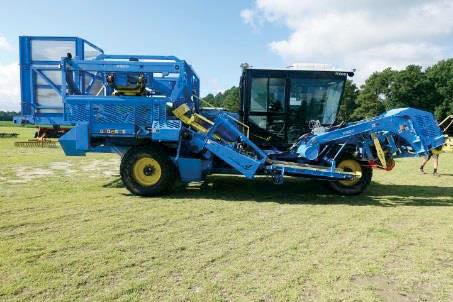
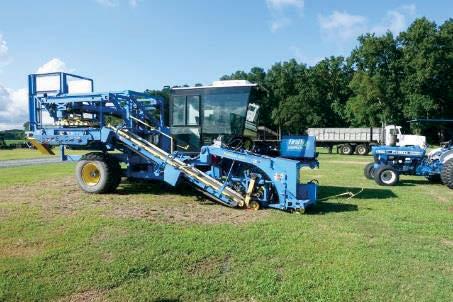
79TPI Turf News September/October 2022 AD INDEX FOR SEPTEMBER/OCTOBER TURF NEWS MAGAZINE Advanced Equipment Sales …………………...….……...…. 77, 78 A-List …….………............…….........………..…....….………… 73 Brouwer Kesmac ……………………………....…...………...… 5, 77 Cameron Financial ……………………..………………………… 77 FireFly Automatix ……………...……...………………………… 59 Irrigation Association. …………........….…………..…………… 62 Jonathan Green & Sons, Inc. ………...….…………..………..… 63 KWMI …………………………………..……..………..……. 57, 77 Landmark Seed Company ……………...….. Outside Back Cover Load Lifter ………….................…...……......…..….......………. 75 Magnum ……………………………...… Inside Front Cover, 34-35 Mountain View Seeds ……………...…...….......….....…..………. 3 Pennington Seed ...….…………...............................………….… 45 Pete Richardson Auction Sales ….……………………....…….… 79 Progressive Turf Equipment, Inc. ….………………………….… 71 R&R Products, Inc. ……….……………..……………………….. 53 Sod Solutions ® …………………...……...…..…..…..……………. 49 STEC Equipment, Inc. …………...…...…..……………………. 55 TAMANET (USA) …………………….…….………...………... 69 Trebro Manufacturing, Inc. ………………….………..………… 67 Trilo ® /Vanmac bv …………………..……………………………. 77 Turf Producers Association ….......................….…......…....... 61 Turfgrass Producers International …..............….……....... 65, 77 Van Vuuren Machines ………….…………...…. Inside Back Cover RETIREMENT AUCTION SATURDAY, NOVEMBER 5, 2022 OAKWOOD SOD FARM 29307 WALLER ROAD-DELMAR, MD 21875 AUCTION BEGINS @ 9:00 AM OAKWOOD SOD FARM INC WILL BE SELLING SOD OPERATION AT LIVE AUCTION. www.prauctions.com ONLINE BIDDING ALSO AVAILABLE : WWW.PROXIBID.COM PARTIAL LISTING:2019FIREFLYR300965HRS, 2017FIREFLYPROSLAB1551657HRS,2004 TREBROHARVESTSTACK5203HRS,(2) MAGNUMBIGROLLSR420,MAGNUMBIG ROLLBR42,2019LOADLIFTER5000LB590 HRS,(4)PRINCETOND45,2015KOROFTM2000, 2007KOROFTM2000,BROUWER1570,(3) BROUWER1560,THEIRRENTURFVACUUM, PROGRESSIVE36FTPROMAX,(2)TRIMAX PEGASUSS3,BERMUDAKINGROADREADY60”, BERMUDAKINGROADREADY40”,SPRIGGERS CHOICESODTOSPRIGMACHINE&MORE!!!
TURFGRASS INDUSTRY CALENDAR
Editor’s note: The following information was up to date as of August 1, 2022. Please check the websites listed for the most current information as you do your planning.
SEPTEMBER


September 18-21
NALP ELEVATE Conference and Expo Orlando, FL https://www.landscapeprofessionals.org/ELEVATE
September 22








M ississippi State Turfgrass Research Field Day Starkville, MS www.pss.msstate.edu/workshops/turf/registration.php
OCTOBER
October 6-9
SiteOne Annual Women in the Green Industry Conference (WIGI) San Antonio, TX www.SiteOne.com/WIGI2022
October 10
T PT Annual Fishing Tournament Matagorda, TX https://texasgrass.com/events/
October 12

Texas A&M Turfgrass Field Day College Station, TX https://aggieturf.tamu.edu/events/
October 18-21
equip EXPOSITION - Formerly GIE+EXPO Louisville, KY https://www.equipexposition.com
October 24-27
Deep South Turf Expo Biloxi, MS http://www.deepsouthturfexpo.org
October 26
NCSU Bruneau Golf Tourney and Scholarship Fundraiser https://www.turffiles.ncsu.edu/2022/04/field-day-field-day-golf-tourney/
NOVEMBER
November 6-9
Crop Science Society of America Annual Conference Baltimore, MD https://www.acsmeetings.org
November 11
T PT Turf Classic Golf Tournament El Campo, TX https://texasgrass.com/events/
November 14-17
Carolinas Golf Course Superintendents Assoc. Conference Myrtle Beach, SC https://www.carolinasgcsa.org/Education-Conference/Conference-and-Show
November 16
SC Sod Producers Association Meeting Myrtle Beach, SC
November 30 & December 1
Kansas Turf & Landscape Conference Manhattan, KS https://www.kansasturfgrassfoundation.com/annual-ktf-conference.html
DECEMBER
December 5-8
Ohio Turfgrass Foundation Conference & Show Columbus, OH https://ohioturfgrass.org/events/EventDetails.aspx?id=1643425&group=





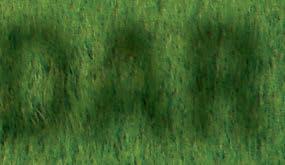
December 5-9
I rrigation Association Show and Education Week December 7-8



Irrigation Association Trade Show Las Vegas, NV www.irrigationshow.org
December 6-8


New Jersey Green Expo Atlantic City, NJ https://njta.wildapricot.org
December 13-14
Texas Turfgrass Association Winter Conference Denton, TX https://texasturf.com/index.php/winter-2022/
2023
JANUARY
January 9-11
57th Annual Tennessee Turfgrass Conference Murfreesboro, TN https://ttaonline.org/page-1703040
January 16-19
Sports Field Management Association Conference Salt Lake City, UT https://www.sportsfieldmanagement.org/conference/
FEBRUARY
February 6-9
GCSAA Conference Orlando, FL https://www.gcsaaconference.com/future-dates
February 14-16
Iowa Turfgrass Conference & Trade Show Des Moines, IA https://www.iowaturfgrass.org/conference
February 20-22
T PI International Education Conference Nashville, TN https://www.TurfGrassSod.org/events/
JULY
July 24-28
TPI International Convention & Field Day Michigan https://www.TurfGrassSod.org/events/
If you are planning an industry event of interest to our readers please send the information to: creynolds@TurfGrassSod.org and put “Industry Calendar” in the subject line.
80 TPI Turf News September/October 2022
INTERNATIONAL AL EDU D CAT CATION CAO CONNFER E ENCNCE GAYLOR GAYAYLORRD YLORGAYLO LOGAYLO OPRYL Y OPRY ANDOP OPR D NDPRYL NPRYYLALAANRYLPR RESORSORT SORRESO RE RESESORRT ES CONV CO CON ENTIO O NON ENT NTO NTIO TI TIOEN N TVN VNC ENV ONV NTI NT CENT RE ERCEN N TEN EC ENT NASHVILLE, L ILL TENNENNESSEE SSEE S MUSI C CITTY U.S.A. A 2 0 2 3 FE BR UA RY R 2 2 N INTERNATIONAL CONVENTION & FIELD DAY MICHIGAN JULY 24-26 2023 TPI

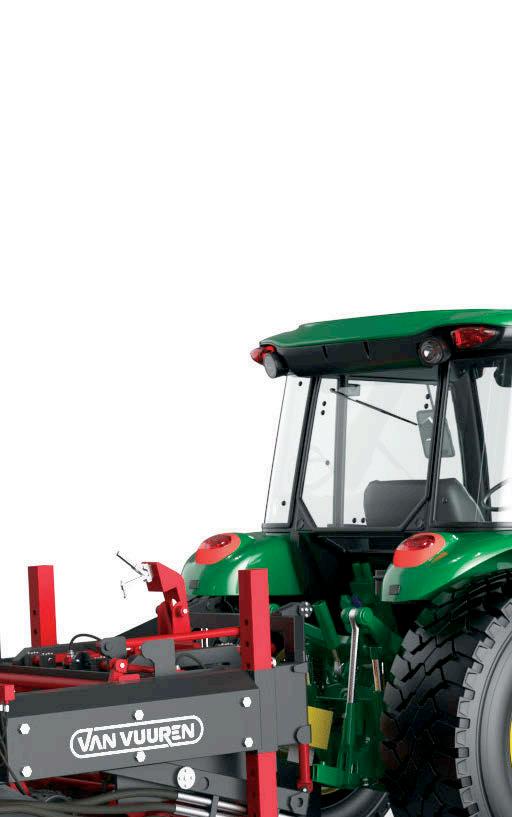









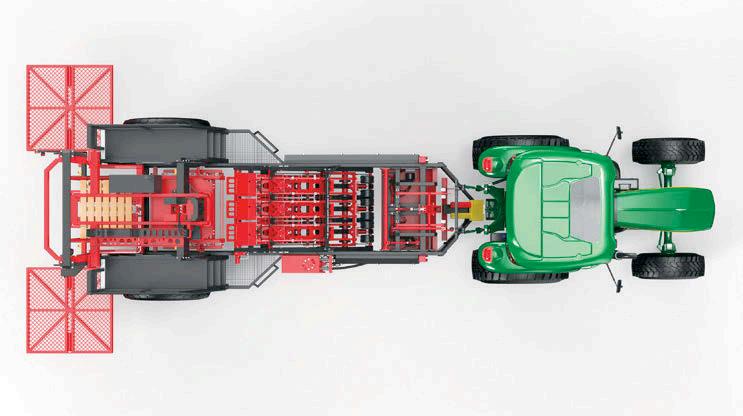

Up to 38750 ft² per hour Modulair cutting head 3 x 16 inch or 2 x 24 inch Proven Van Vuuren technology Easy to maintain The NEW TurfTick 3500 series www.vuuren.cominfo@vuuren.com +31(0)306661348 Double or Triple Stacker
We’ve Got
Seed Down To A Science.
At Landmark Seed, we spend a lot of time thinking about sod seeds. And it shows. With a dedication to quality assurance, our Turf Producers’ Select™ (TPS) seed blends combine superior genetics with top-performing, complementary seed varieties proven to produce pristine sod quality. We work with each grower to prescribe blends that perform beautifully for their customers’ specific region, environment or application. Backed by hours of performance testing—and proven by satisfied sod growers everywhere—so you can Seed With Confidence™.

landmarkseed.com







































To learn more about our current TPS sod seed blends for sports, lawn and landscaping applications, contact Larry Humphreys at larry@turfproducersselect.com

IQ 180 intelligence A
LLIANCE
FO
R LOWINPU T SUSTAINA BLETURF






















































































































































































 By Cale A. Bigelow, PhD
By Cale A. Bigelow, PhD




 By Allie Shriver
By Allie Shriver

































































































































































































































































































































